- Share full article
Advertisement

Famous for Happiness, and Limits on Tourism, Bhutan Will Triple Fees to Visit
As Venice and other European hot spots explore permit systems and daily fees to limit the number of tourists, the tiny Buddhist kingdom will require a $200 tax on international visitors when it reopens this fall.

By Ceylan Yeginsu
- July 5, 2022
The tiny Buddhist kingdom of Bhutan on the eastern edge of the Himalayas, often referred to as “the last Shangri-La” for its abundance of natural beauty, sustainable development and rich cultural heritage, has long resisted the quick financial returns of mass tourism in favor of conservation. The approach is aligned with a cultural philosophy where the country’s wealth and prosperity is measured, through a national happiness index , as an alternative to the gross domestic product.
Since 1974, the year when foreigners were first permitted to visit Bhutan, the country has had a unique “high value, low volume” tourism policy , requiring international visitors to pay at least a daily rate of $250 that covered accommodations, meals, a mandatory tour guide and included a $65 “sustainable development fee” to the government. The package-like approach was aimed to preserve the natural resources of the country by limiting the number of international visitors and controlling where they went. While some tourists complained of poor hotel plumbing, slow internet access and bland food, many appreciated the ease of the predetermined tours.
Now as the government of Bhutan prepares to reopen its borders on Sept. 23, it has overhauled the tourism system and will significantly raise the cost to visit. Visitors no longer need to be on a package tour, but they will now have to pay a $200 daily fee directly to the government, and pay separately for their accommodation, meals, tours and other travel expenses. The new policy, officials say, will rebrand Bhutan as “an exclusive destination,” attracting “discerning tourists” who will have access to a wider range of higher-quality services.
“Covid-19 has allowed us to reset, to rethink how the sector can be best structured and operated, so that it not only benefits Bhutan economically, but socially as well, while keeping carbon footprints low,” said Dr. Tandi Dorji, Bhutan’s foreign minister and chairman of the Tourism Council of Bhutan. “In the long run, our goal is to create high-value experiences for visitors, and well-paying and professional jobs for our citizens. ”
But many tour operators express anxiety over the change. They are worried that the new structure will leave them without any business — uncertain whether they will be able to attract a sufficient number of tourists with the higher fee, or if tourists will even require their services at all, now that they will have the option to book directly through hotels, tour guides and the like.
“Just when we thought we were seeing the light at the end of the tunnel after two-and-a-half years of being out of business, the government’s tourism amendment bill has thrown us back in the darkness and we have no idea how to go about it,” said Pelden Dorji, the chief executive officer of the Bhutan Travel Club, a company that specializes in adventure travel experiences.
Mr. Dorji has already received cancellations from groups that had booked, but not paid for, packaged trips they had scheduled later in the year. He said the group members felt that they could not justify paying an additional $200 a day on top of the other expenses that had been agreed upon as part of the previous package deal.
‘Deep love and respect for nature’
Under the previous policy, all bookings and payments had to be made through registered local tour operators, who were required to organize a prearranged itinerary with fixed dates and overnight stops.
“It’s basically a package tour that lets you see an authentic, untouched corner of paradise while protecting itself from being invaded by tourists,” said Megan Petersen, 44, a London-based makeup artist who visited Bhutan in 2017. “It’s genius and places with overtourism problems should use the same model.”
Ms. Petersen spent eight days exploring Bhutan with her sister, trekking through forests and mountain meadows, hiking to cliff-side temples and meeting local communities in remote villages. Throughout their trip, they camped and stayed in basic three-star accommodations. Everything was included in their package.
“The lodges and food were pretty average, but that just added to the experience of being able to experience the real community and culture without the fake tourist treatment,” Ms. Petersen said. “What makes Bhutan so special is the kindness and spirituality of its people and their deep love and respect for nature and their land.”
Government officials say the previous policy discouraged additional out-of-pocket spending, as many travel agents would assemble their trip activities, food and other offerings to not exceed the $250 daily rate — the practice effectively turned the policy’s minimum rate into the maximum.
“The policy caused more misunderstandings than understanding and it has resulted in lowering the services that we are potentially able to offer,” said Prime Minister Lotay Tshering.
Under the revised tourism bill, which was passed by the Bhutanese parliament last month, Bhutan will be able to reinvest “in bringing up the quality of tourism products, especially in terms of training our guides, bettering the quality of our hotels, restaurants and food, while preserving the pristine environment that we have for generations to come,” the prime minister said.
One of the government’s main priorities, Dr. Tshering said, is to invest in waste management infrastructure and protect Bhutan’s biological corridors, nature parks and main cultural assets. Bhutan’s constitution mandates that 60 percent of the country’s land must be under forest cover and maintains strict laws to protect and uphold its carbon-negative status.
“This all costs money,” Dr. Tshering said.
‘Why fix something that is not broken?’
While Bhutanese travel representatives had expected some reforms to the country’s tourism policy, the threefold increase to the government’s sustainability tax came as a shock, with many fearing that the new model will turn tourists toward cheaper destinations at a time when the country is desperate for tourism dollars to boost its post-pandemic recovery.
Tourism revenue is a key contributor to Bhutan’s economy, making up 6 percent of the country’s gross domestic product. Some 29,000 tourists visited Bhutan in 2020 before the borders were shuttered in March of that year, and generated a revenue of $19 million. In 2019, 315,599 tourists visited, earning the tourism industry $225 million, according to the Tourism Council of Bhutan. The kingdom eased its travel restrictions earlier this year, allowing in foreign visitors on a case-by-case basis and requiring them to quarantine.
Tourism operators argue that the minimum package framework incentivized tourists by including all essential services.
“Everyone is asking, ‘why fix something that is not broken?’” said Lotay Rinchen, co-founder of the tourism company Bridge To Bhutan, Bespoke Mindful Journeys . It “protected the travel industry and ensured a certain level of quality and business,” he said of the prior system.
Mr. Rinchen was always in favor of increasing the price of the minimum fee. But without the requirement of the package structure, he says he anticipates the Bhutan brand will be harder to sell. He has started to explore the possibility of offering luxurious products to lure in tourists willing to pay the higher costs, like chic boutique lodges, wellness retreats and upscale glamping. Previously tourists could pay extra for high-end hotels like the Taj Tashi and Le Meridien Thimphu , but many chose the basic options included in the minimum daily fee package.
“This is not the right timing. Bhutan’s economy is in bad shape, and we had expected to open up tourism and start earning hard currency again, but this price hike will keep tourists away,” said Mr. Dorji of the Bhutan Travel Club, adding that the new model could attract a demographic of older sightseeing tourists who would “skim from one luxury hotel to another, without experiencing the Bhutanese way of life.”
The prime minister said that was not the government’s intention. “We want to make sure that we get a set of tourists who are intellectually high-standing, knowledgeable and conscious of our needs and unique features,” he said.
Elsa Foster, 44, an American personal trainer who lives in Scotland, took a mountain biking tour in Bhutan with a group of friends in 2018. After a day of sightseeing in Bhutan’s capital, Thimphu, they embarked on a seven-day off-roading adventure, cycling through remote mountain valleys and villages. Ms. Foster said it was very practical to have hotels booked by their tour agent as they stayed in a different location each night.
“I really liked how everything was organized and packaged with the old fee system, all you had to do was show up,” she said. “But to pay 200 bucks on top of all the other expenses, you’ve got to be pretty rich and it’s a shame that Bhutan will become inaccessible to young people who won’t be able to afford it.”
The government hopes the new policy will have the opposite effect, attracting a wider demographic. “All we mean is to welcome with a very open heart all individuals and potential visitors who want to visit and experience the uniqueness we have to offer,” Dr. Tshering said. “Then we will ensure that the visitor will get the value of the money that is spent in Bhutan.”
The United States was one of the top tourism markets for the kingdom before the pandemic, behind India and Bangladesh, with 13,016 Americans visiting in 2019 and spending an average of 10 nights, according to the Tourism Council of Bhutan.
Karma Tshering, an environmental conservation and ecotourism specialist, said the government should use the increased tourism tax to meet its sustainability goals, which could include investing in hiking trails, highway amenities and training and support to service providers.
He is worried that without the minimum-spend policy, “which helps our service providers obtain minimum revenue to support their services, our people will be left in the hands of the tourists to negotiate and bring down prices,” Mr. Tshering said, adding that there could be “a chain impact on delivering quality services and high-end experiences.”
Some sectors see an opportunity in the change. Sonam Wangchuk, chairman of the Hotel & Restaurant Association of Bhutan, said the amendment was long overdue and will bring positive change where all hotels and restaurants will have equal opportunity.
“I guess it is now the survival of the fittest, where one now needs to pull up their socks and become a go-getter,” he said. “The old days of business knocking at your door are gone, therefore the harder we work the more promising it will be.”
Chencho Dema contributed reporting from Kansas City, Mo.

52 Places for a Changed World
The 2022 list highlights places around the globe where travelers can be part of the solution.
Follow New York Times Travel on Instagram , Twitter and Facebook . And sign up for our weekly Travel Dispatch newsletter to receive expert tips on traveling smarter and inspiration for your next vacation.
Ceylan Yeginsu is a travel reporter. She was previously a correspondent for the International desk in Britain and Turkey, covering politics; social justice; the migrant crisis; the Kurdish conflict, and the rise of Islamic State extremism in Syria and the region. More about Ceylan Yeginsu
Open Up Your World
Considering a trip, or just some armchair traveling here are some ideas..
52 Places: Why do we travel? For food, culture, adventure, natural beauty? Our 2024 list has all those elements, and more .
Mumbai: Spend 36 hours in this fast-changing Indian city by exploring ancient caves, catching a concert in a former textile mill and feasting on mangoes.
Kyoto: The Japanese city’s dry gardens offer spots for quiet contemplation in an increasingly overtouristed destination.
Iceland: The country markets itself as a destination to see the northern lights. But they can be elusive, as one writer recently found .
Texas: Canoeing the Rio Grande near Big Bend National Park can be magical. But as the river dries, it’s getting harder to find where a boat will actually float .
Bhutan cuts daily tourist fee by half to lure more visitors
- Medium Text
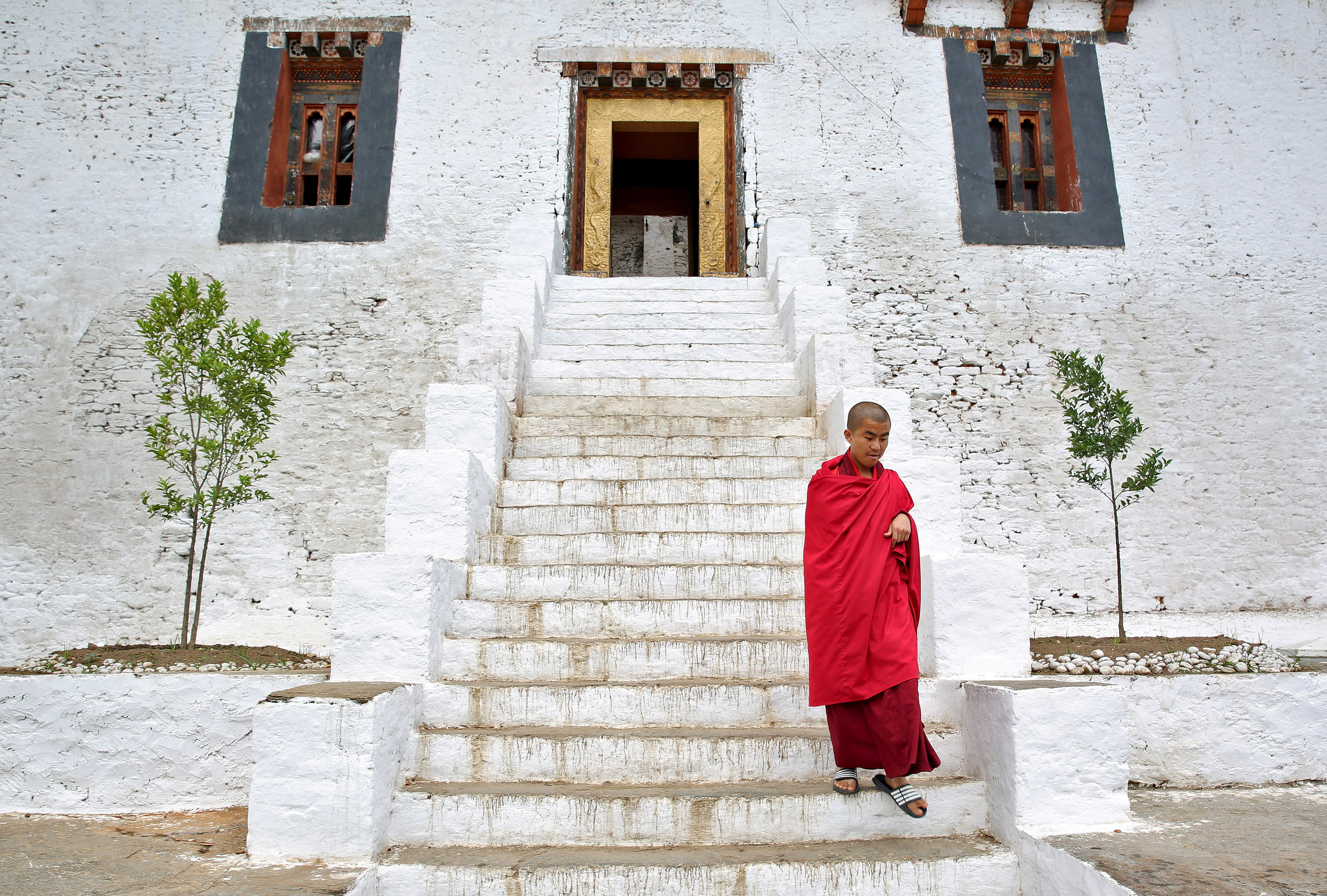
Sign up here.
Reporting by Gopal Sharma; editig by Robert Birsel
Our Standards: The Thomson Reuters Trust Principles. New Tab , opens new tab

World Chevron

Blinken tours Kerem Shalom aid crossing as tank fire rings out from Gaza
Tank fire echoed from the Gaza strip on Wednesday as U.S. Secretary of State Antony Blinken visited an aid inspection point, where he heard from Israeli officials including Defense Minister Yoav Gallant about efforts to increase assistance to the Palestinian enclave just a few hundred meters away.
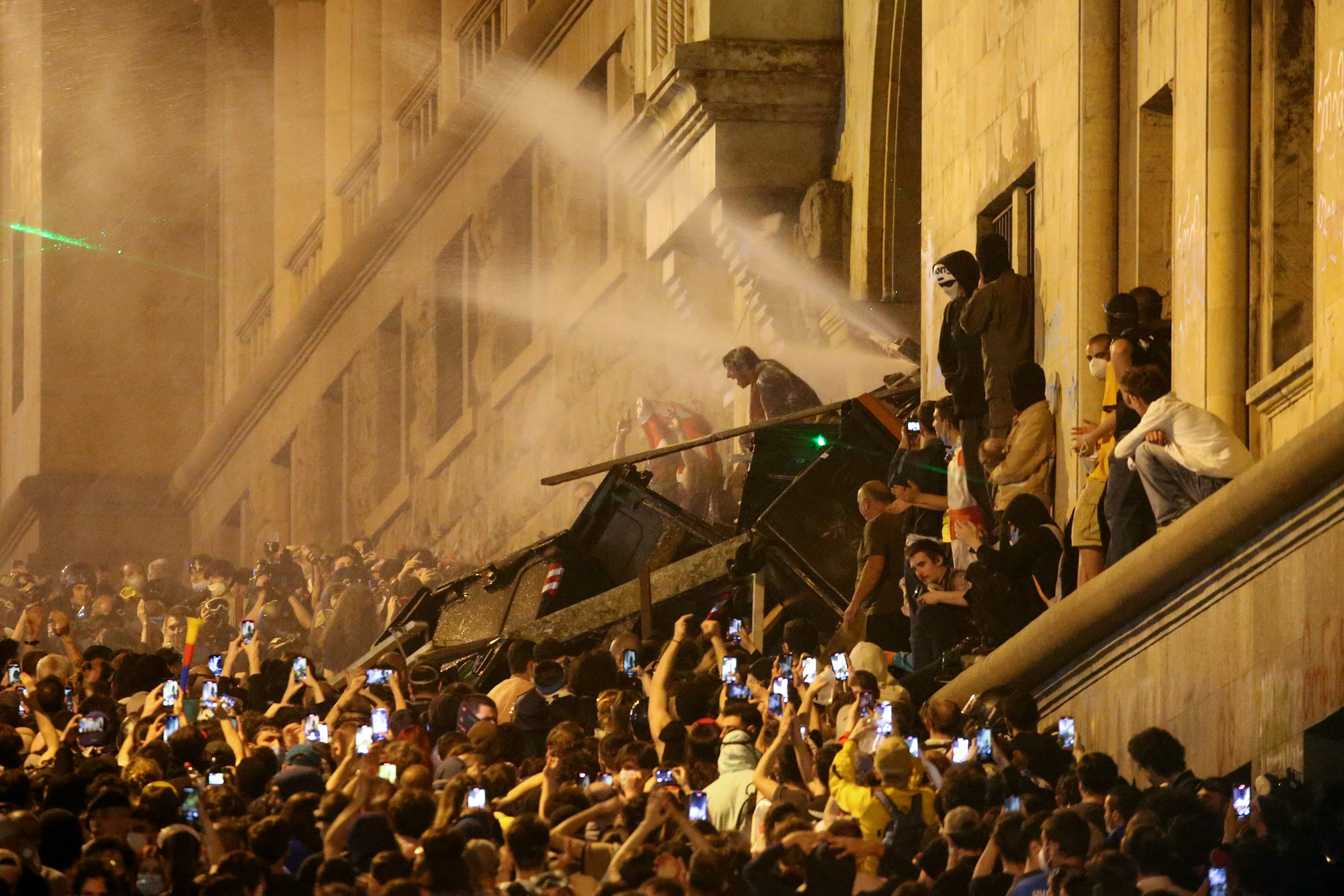
Bhutan Tourism Corporation Limited

Ph: +975-17903966
Ph: +975-17332825
TOURIST TARIFF
New SDF information
Sustainable Development Fee
All the international visitors visiting Bhutan will have to pay Sustainable Development Fee of USD 100 per person per night
The sustainable development Fee for the Indian nationals is INR 1200 per person per night.
The Sustainable Development Fee (SDF), however, exempts day tourists (Indian) who do not travel past the first designated location (Border town, Phuntsholing).
Minors under the age of five is exempted and children between the ages of six and below twelve, pay a 50% sustainable development fund.

The government of Bhutan has always adopted a cautious approach taking the right balance between sustainability and enriching travel experiences at the heart “High Value, Low Volume” of the policy. The New SDF is set to make the country an exclusive travel destination and it’s driven by an enhanced and revitalized “High Value, Low Volume” policy which was adopted when Bhutan first welcomed tourists in 1974.
Our country always took pride in being the only carbon-negative country and putting environment conservation at the forefront of the policy. The transformative times bought on by the covid 19 and other factors have made our tiny kingdom take a pragmatic approach to ensure the upkeep of sustainability initiatives adopted by our forefathers.
It became inevitable to take these steps to avoid the looming negative impacts of mass tourism that could have on a tiny country like Bhutan.
WhatsApp us

- 2 Weeks for Couple
- 2 Weeks for Family
- Thailand Lantern Festival
- Indonesia(Bali)
- South Korea
- China (HK, Taiwan)
- Itinerary Ideas
- Asia Highlights Travel Reviews
- Thailand Travel Reviews
- Vietnam Travel Reviews
- Cambodia Travel Reviews
- Japan Travel Reviews
- Myanmar Travel Reviews
- China Travel Reviews

Is it Expensive to Travel Bhutan? — Bhutan Tour Costs
Quick facts.
- Why Is Bhutan More Expensive Than Other South Asian Countries
Bhutan Is Worth the Money
Make the most of your budget.
Bhutan, nestled in the lap of the Himalayas, is rich in natural resources like mountains, rivers, and forests as well as diverse flora and fauna. The country believes in retaining its authentic culture and lifestyle, and Starbucks and McDonalds are yet to make an appearance. These examples show that the Bhutanese like to keep a tab on foreign influences so that they don't lose their cultural identity.
To protect the country from being overwhelmed by mass tourism, the Bhutan government has adopted a "High Cost, Low Impact" policy. This means that they charge tourists a fixed travel fee per day. Unless you are an Indian, Maldivian, or Bangladeshi, you will be charged a minimum daily travel fee of US$200 or US$250 per person.
Most travelers prefer to stay in Bhutan for about 4–5 days and combine it with a trip to India. A typical 5-day itinerary covering Paro, Thimphu, Punakha , and Tiger's Nest Monastery may cost aroun d US$1250–1500 per person (based on group size). The fees include private guides and drivers, meals, accommodation, entrance fees, and taxes.
At first glance, this may seem expensive, but if you learn more about what this money goes toward and why this system was introduced, you will agree that a trip to Bhutan offers value for money .
With Asia Highlights , you enjoy 100% refund of any payments made to China Highlights prior to 3 weeks before departure ( detail⇒ ).
- The Government of Bhutan has adopted a "High Cost, Low Impact" policy, which means that travelers need to pay seasonal daily travel fees of US$200 or US$250 per person.
- Tourism is the most critical industry in Bhutan, and the daily tourist fee is used for the country's development.
- Most of your travel fees will go toward health care, education, and environmental protection.
- A great way to make the most of your budget is to plan a tour in the low season, travel with more than three people, and book a flight as early as possible.
Why Is Bhutan More Expensive Than Other South Asian Countries?
Compared with neighboring countries such as India and Nepal, Bhutan's travel costs can appear high.
One reason is that a part of the daily tourist fees goes to the government as tax . About 30% of your tour free will go toward supporting health care, education, environmental protection, as well as preserving Bhutan's culture.
Bhutan is a landlocked country with limited export or industrial activity due to its mountainous terrain. The tourist fee that the government charges is crucial for the country's development . By charging this tax, the government is trying to balance its developmental needs as well as its well-preserved culture.
Charging a high tourist fee is also a way of limiting tourist numbers while providing high-quality services to travelers. Aside from the daily cost, which is capped at US$200 or US$250, you should add a visa fee and extra tariffs in case less than three people are touring the country.
The Bhutan Government Intends to Protect Its Culture and Wilderness
Bhutan is one of the few countries in the world that has never been conquered by foreign forces. The country remained isolated from the rest of the world until the mid-1970s. Aware of the possible consequences of high international tourism, the government has imposed restrictions on the number of tourists who are allowed to enter each year.
At least 40% of the land is covered by pristine parks and sanctuaries. The Government of Bhutan is keen to protect its wilderness as much as possible. Its wild beauty is unlike anything you will see in the world; keep an eye out for the endangered black-necked cranes.
Avoiding cultural dilution and environmental degradation are some of the significant incentives for the government to maintain its high tourism fee: Bhutan believes the high tourist tax guarantees a "high value and low impact." Every traveler needs to pay a high price to lower the negative impact of the country's tourism.
Tourist Fee for Health Care and Education
Bhutan is still a developing country in many ways. Until the tourism industry took off, there was minimal infrastructure in the country. The government collects a tax of US$65 from the minimum daily tariff, known as the Sustainable Development Fee or Tourism Royalty Fee.
This part of the fee is used to fund infrastructure development, education, and free public health care services. This may seem an unusual system, but it does help the country become a more sustainable and comfortable place to travel and live in.
Discover real reviews of Highlights Travel Family 's best-rated service across trusted platforms.
What Does the Minimum Daily Package Include?
Except for Indian, Bangladeshi, and Maldivian nationals, all visitors to Bhutan are subject to a minimum tariff based on the number of days spent in Bhutan.
- Price in low seasons (winter/summer): US$200 per person per day (December–February and June–August)
- Price in peak seasons (spring/fall): US$250 per person per day (March–May and September–November)
Although a part of the fees is reserved for environmental protection and domestic taxes, a significant portion will be used for your travel expenses. Your daily fee includes your accommodation, meals, guide, driver, and car.
1. Private Tour Guide
A licensed English-speaking tour guide will accompany you throughout your journey. Being a tourist guide is a prestigious occupation in Bhutan, and it takes years of training to become a tour guide. They know the country's history to the last detail and can tell you all about Bhutan's flora and fauna, attractions, and culture.
2. Private Vehicle
You can enjoy private land transfers between airports, hotels, and scenic spots while sightseeing within the country. Usually, this means a comfortable 4x4 or medium-sized tour van. A friendly driver will also be ready to help you carry your luggage.
3. Daily Meals
The traveler fee includes three meals daily — breakfast, lunch, and dinner. Breakfast is usually provided in your hotel. Lunch and dinner are typically at local restaurants. If you are vegetarian or vegan, we can ensure that your culinary needs are met. If you wish to have meals in a luxurious hotel, you need to bear the additional costs.
4.Accommodation
Hotels range from 3 to 5 stars in Bhutan. The minimum daily package means that you will have at least 3-star hotel accommodation during your stay in Bhutan. This includes a variety of hotels or homestays that enable you to interact with residents.
The 3-star hotels are comparative with most international hotels, with clean and comfortable rooms. You can also spend a few days at a homestay during your trip. The homestays included in the minimum daily package are equivalent to staying in a 3-star hotel. They provide food and other facilities.
If you want to stay at a better hotel, you must be ready to pay several hundred dollars more per day. The higher-end hotels include 4- or 5-star hotels of international standard. You can also book luxurious resorts with spas in Paro and Thimphu.
5. Other Inclusions
The traveler fee also includes the entrance fee to scenic spots, camping equipment for trekking tours, and taxes.
6. Surcharge
The daily package fee includes all the necessary expenses for your stay in Bhutan. The standard costs not included in this fee are visa fees and an additional tax if you are traveling alone or if there are less than three people in your group. To give you an overall idea, we have calculated the tour fee that you will need to pay per person per day if you are staying in 3-star accommodation.
- A visa fee of US$40 per person is added to the total cost of your tour. Once you make the payment, you will receive a clearance letter with a confirmation code from the Tourism Council. Your visa will be stamped on your passport upon your arrival.
- If you plan to travel solo, an extra single room supplement fee of US$50 per day is levied.
- A surcharge of US$40 per person per day is added if just two people are traveling. For a group of more than three people, there are no extra charges.
- For those interested in hiking with high-quality camping equipment, the travel fees will be hundreds of dollars more. You should ask your travel agent about the detailed pricing.
5. Additional Expenses
Other costs include voluntary tips you pay to your guide and driver or for souvenir and alcohol purchases during your tour. Internal flight transfers and flights to Bhutan, as well as travel insurance, must be shown to your travel agent before you travel.
Bhutan is one of the quietest and most beautiful countries in the world. You must travel to this lesser-known travel destination at least once in your lifetime. For such a small country, Bhutan has plenty to offer. Buddhism is the main religion there, and it has a strong influence on the daily life of the Bhutanese.
Paro Taktsang or Tiger's Nest Monastery , which is situated on a rock face 900 m (2900 ft) above the valley floor, is a must-visit attraction in Bhutan. From dzongs to monasteries, you will enjoy many Buddhist-style architectural marvels in the country. Based on the duration of your tour, you can also choose to visit Punakha Dzong, the second-oldest and second-largest dzong in Bhutan.
The country boasts a diversity of plants and animals. More than 70% of Bhutan's land is covered with forests. There are 37 known species of animals housed in Jigme Dorji National Park . The animals range from snow leopards and tigers to Himalayan black bears and red pandas.
Royal Manas National Park is a sanctuary for a wide variety of birds, plants, and animals, including some rare and endangered species. There are more than 500 species of flora, 400 species of birds, and over 180 species of butterflies there.
Bhutan is considered a paradise for hikers. The Snowman Trek will take you through the most beautiful trails and give you a chance to see the majestic Himalayas. The real attraction is that these trails are traversed only by a handful of trekkers every season. The Bumthang Owl Trek will take you along the famous Drangela Pass.
The Bhutanese people are amicable and love to engage with tourists. It's easy to meet locals when you have a friendly local guide around you all day. There are very few countries in the world that will offer you such a warm welcome.
1. Seasonal variations and early flight bookings can make your trip to Bhutan cost-effective. You can pay a lower fee during the off seasons (December/January/February and June/July/August) in Bhutan.
2. Book a few months in advance to enjoy lower fares.
3. Travel with more than three people to avoid paying extra taxes.
Explore Bhutan with Asia Highlights
Don't hesitate to plan your trip to Bhutan with us. We will be happy to hear about your travel plans and will help you organize your bookings. Our travel advisor will provide you with professional consultation and feasible solutions.
Why Asia Highlights (10,000+ reviews & 98.8% 5-star rating)
- Save Your Time:
- Less research, more enjoyment!
- Real-time 1V1 expert planning
- Maximize Your Flexibility:
- Personal local guide and ride
- Explore at your own pace
- Celebrate Your Journeys:
- Specially-crafted family adventures
- Celebrate milestones with style!
Get Inspired with Some Popular Itineraries
At Asia Highlights, we create your kind of journey — your dates, your destinations, at your pace. You can have any trip tailor made for your travel.
More Travel Ideas and Inspiration
Sign up to our newsletter.
Be the first to receive exciting updates, exclusive promotions, and valuable travel tips from our team of experts.
Why Asia Highlights
Where can we take you today.
- Middle East
- African Safari
- Travel Agents
- Loyalty Program
- Our Differences
- Privacy Policy
Address: Building 6, Chuangyi Business Park, 70 Qilidian Road, Guilin, Guangxi, 541004, China
Everything you need to know to plan your trip to Bhutan

Sep 26, 2022 • 10 min read
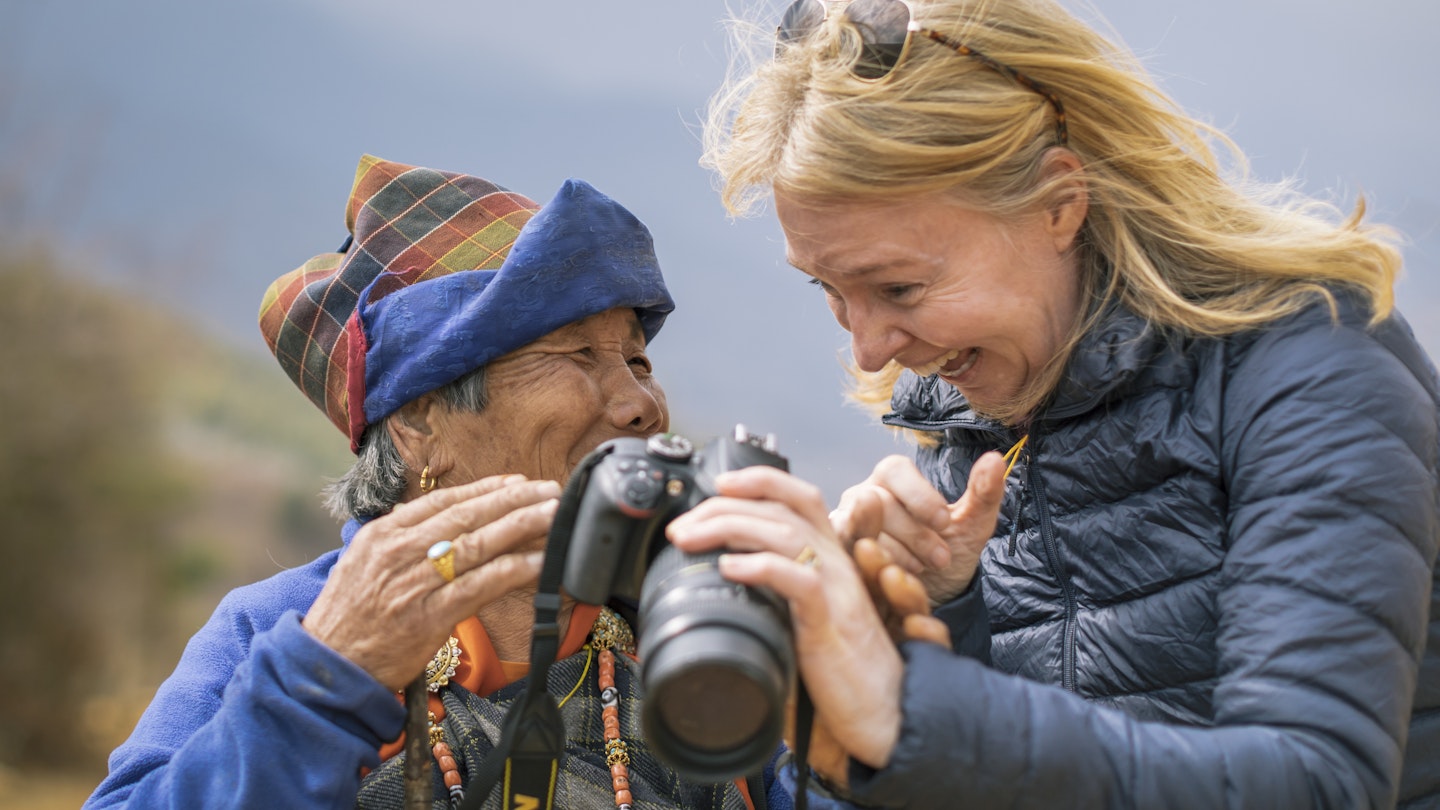
Visiting Bhutan's spectacular temples and villages is worth the price tag © Andrew Peacock / Getty Images / iStockphoto
Bhutan has long had a reputation as an exclusive, remote destination that only opens its doors to a lucky, well-heeled few. Its golden-roofed temples, magnificent fortress-like monasteries and timeless rural villages are as close to a Shangri-La as you can find in the modern world. Unfortunately, visiting paradise comes at a hefty price.
Bhutan’s tourism mantra has long been “high value, low impact,” and its aim is simple: to maximize the financial benefits of tourism while minimizing its environmental and cultural impact. It’s a perfect example of the country’s guiding policy of “Gross National Happiness.”
The country kept its doors locked tight during the Covid-19 pandemic and only reopened to tourism in September 2022, but with this reopening has come a major overhaul of the country's strict tourism regulations . If you are tempted to take the plunge on a once-in-a-lifetime visit to Bhutan , here’s the lowdown on Bhutan's new travel rules and exactly how to arrange a trip to this unique and magical Himalayan country.
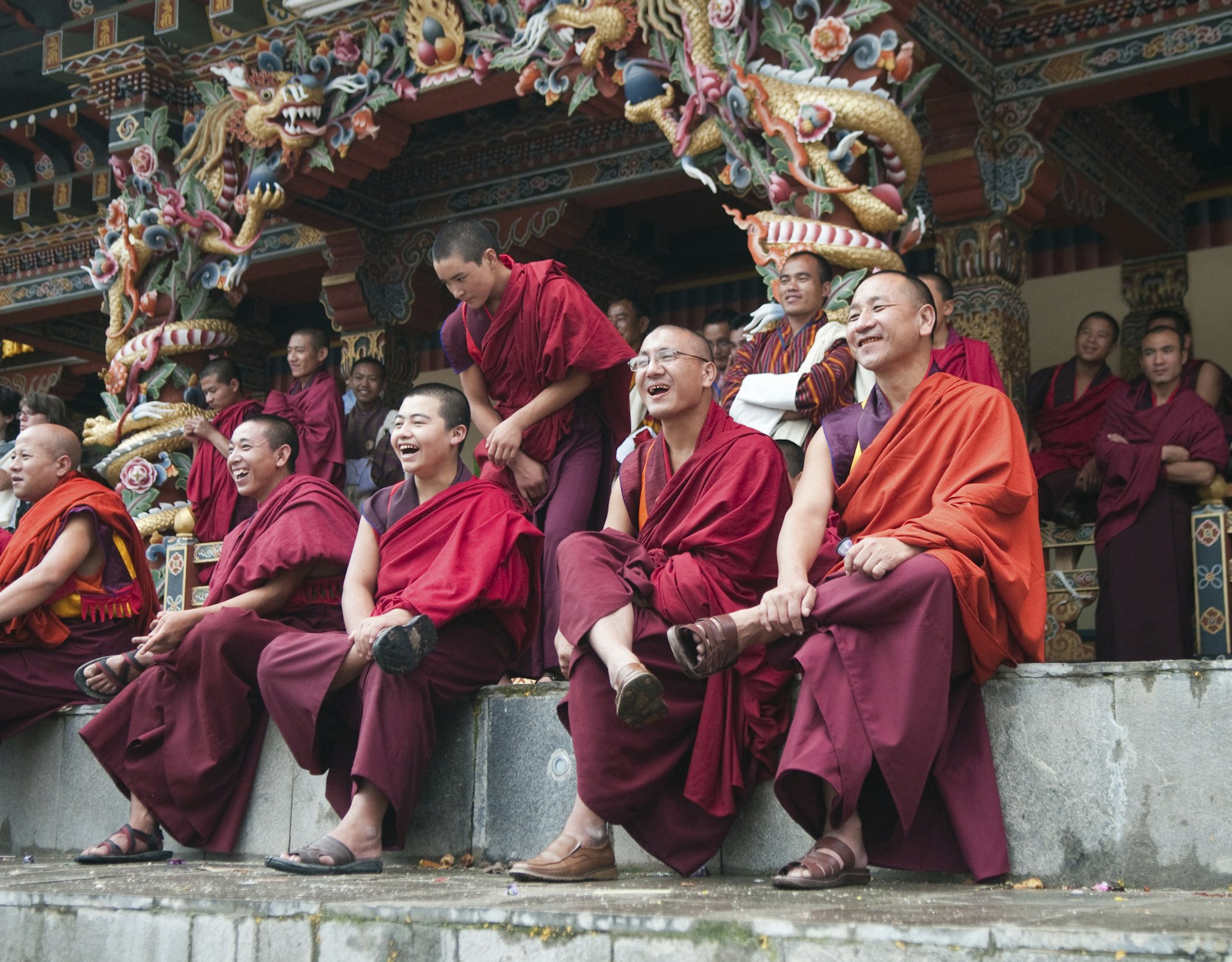
What are the new tourism rules?
Until 2020, foreign tourists were charged a flat minimum fee of US$250 per person per day for a fully organized tour, of which US$65 went to the government to help fund free education and healthcare for Bhutan’s citizens.
Beginning September 2022, foreign tourists are now charged a US$200 per person per day Sustainable Development Fee (SDF) that the government says will further contribute to sustainable tourism development, tourism training and carbon offsetting.
The other major change is that tour prices are no longer fixed, leaving tour companies free to charge what they want depending on the levels of service or activities, thus giving visitors some choice over things like hotel costs. The bad news is that travel costs are now in addition to the US$200 per day fee, not included. Comb through the small print, and you'll find that families get a small break, paying 50% of the SDF (i.e., US$100 per day) for kids aged six to twelve, and children under five being exempt from the fee entirely.
Another change is that foreign tourists now must pay entry fees to the main sights, ranging in price from Nu 2000 (US$25) for the famous Tiger's Nest Monastery to Nu 1000 (US$12.50) for most other popular temples and dzongs (fortress-like monasteries). This will add US$100-200 to most tours. Most of these religious sites will now close to tourists on popular Buddhist holidays, which is a shame as these are often the most colorful times to visit.
How Will This Change Tourism in Bhutan?
For starters, trips to already-exclusive Bhutan just became even more expensive. Given this, it’s likely that fewer foreign tourists will visit the country, and those that do will choose shorter trips close to the popular sights around Paro (Bhutan's international airport) and the capital Thimphu. Longer trips to the fascinating but more remote central and eastern regions now come with a much higher price tag, as does trekking, which is generally more expensive to arrange than a cultural tour.
For example, Bhutan's famous 27-day Snowman trek (often called the “world's hardest trek”) now costs at least US$3500 more per person than it did under the old rules. The hike’s fees could well make Nepal's equally unspoiled Himalayan regions, such as upper Dolpo and Mustang (which have their own fees of US$500 for ten days), more financially appealing.
What about regional Indian tourists?
The main exception to the new fee rule is Indian tourists, who pay a much smaller SDF fee of just Nu 1200 (US$15) per person per day. Indian visitors must pre-arrange a guide, hotel accommodation and permits to travel east of Thimphu. This can be arranged through a Bhutanese agent or independently.
Many Bhutanese travel agents point out that with Indian tourists making up 77% of annual visitors to Bhutan (243,000 out of a total 315,600) and many arriving in their own vehicles and cooking their own food on budget trips, it’s hard to see how Bhutan can justify its fee system in the name of either sustainable tourism or avoiding cultural impact.
How much does a trip to Bhutan cost now?
Including the US$200 SDF per person per day, most Bhutanese agencies will now charge between US$350 and US$450 per person per day for a fully inclusive tour, up from the previous US$250 per day. Trekking will likely be a bit pricier, and small groups of two or three will be more expensive than larger groups.
What the new rules do allow for is overnights in guest houses, heritage farmhouses or rural homestays, which are a bit cheaper than tourist hotels. Under the old rules, you paid the same daily rate regardless of whether you stayed in a comfortable four-star hotel or on the floor of a local homestay, which limited the appeal of community tourism. Now you pay for what you get. The downside is that even if you stay in a simple rural homestay, you will still pay around US$300 per day for your trip, leaving you with budget travel at a top-end price.
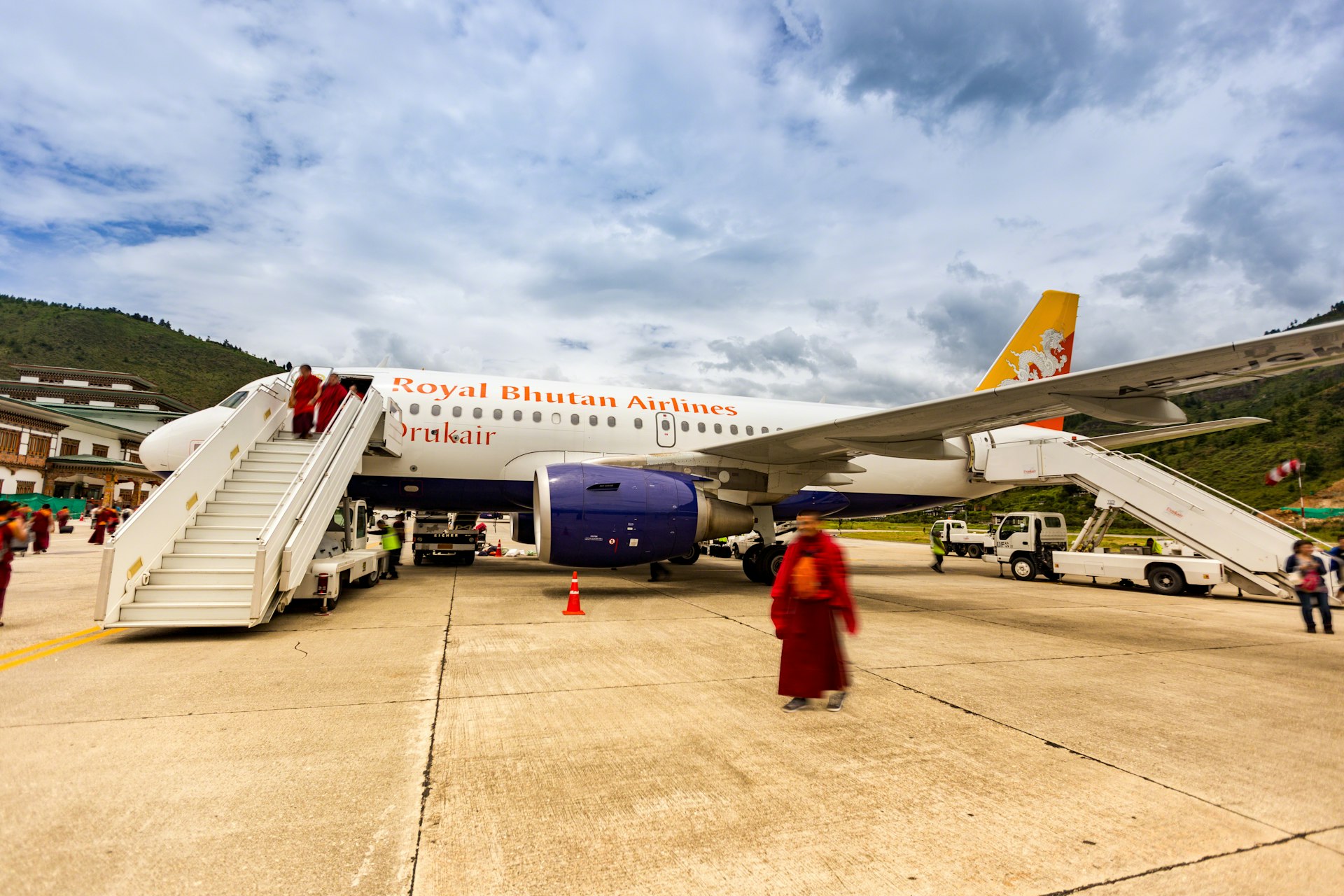
How to plan your trip
Until 2022, tourists had to arrange their travels through a registered Bhutanese travel agent. Now tourists are allowed to book trips directly with hotels, so if you are just planning a visit to Thimphu and Paro towns, you can theoretically just book a hotel, a guide and a couple of airport transfers directly with a hotel, cutting down on transportation costs.
For a more complicated itinerary involving multiple overnight stops, cultural programs, day hikes, trekking and other activities, you are still better off booking with an experienced agency. Bhutanese tourism infrastructure isn't yet developed enough to offer easily bookable separate transportation and guide services.
Start planning early. You will need at least a month to pin down your itinerary, pay the tour operator and get your visa approval. If you are visiting in the high season months of October, November, March and April, you will want to book your flights to Bhutan further in advance.
Planning your itinerary
Because Bhutan is expensive, many travelers are tempted to limit their visit to just a few days around the Paro Valley. There are definitely some fabulous medieval temples, monasteries and museums here, as well as some intriguing sights in nearby Thimphu, where the 16th and 21st centuries manage to coexist seamlessly.
Stick to these easily accessible sights, however, and you'll only see the most touristed parts of Bhutan. With a few more days, you can visit the delightful valley of Punakha or stay overnight in the little-visited valley of Haa, accessible from Paro over the country's highest motorable pass. Anyone wanting to really get off the beaten track should head out to the center or east of the country.
Perhaps the best way to plan your trip is to use an agency’s itinerary as a starting point and modify it to your interests. If you have a specific interest in embroidery, hiking or Buddhism, a good agency will adapt the tour to your preferences. This is also the time to mention any extras, such as a traditional hot-stone bath, an overnight in a rural homestay or a day of rafting or mountain biking. Be sure to time your visit with one of Bhutan’s fabulous festivals.
We always recommend throwing in a few lesser-visited temples and day hikes to get you off the tourist circuit. Even with a limited amount of time, you can detour to a lesser-known temple, nunnery or hermitage to experience Bhutan at its most authentic.
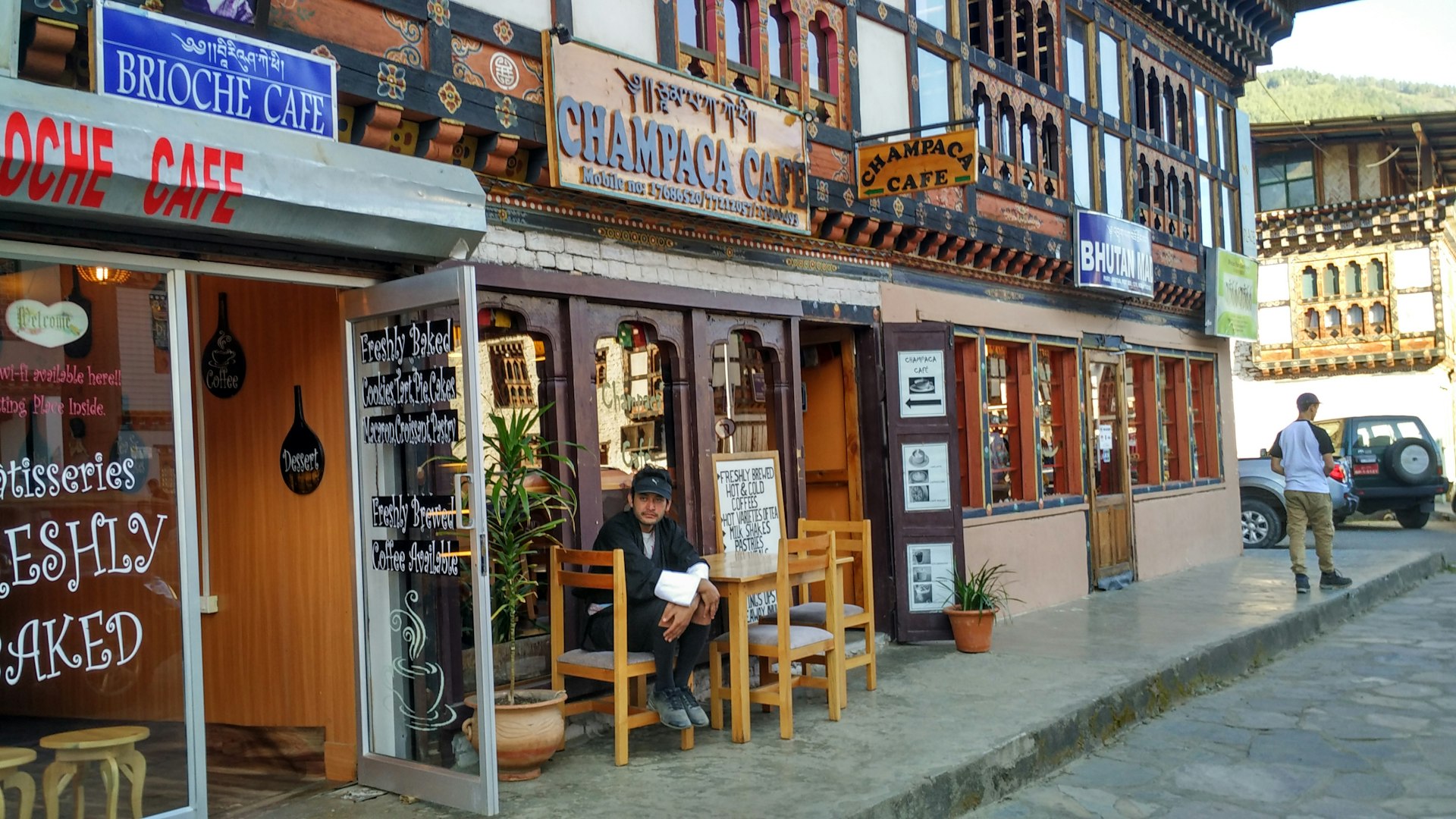
Not to miss places in Bhutan
Taktshang goemba.
Hike up to Bhutan's most iconic temple, the Tiger's Nest Monastery , whose medieval shrines are said to be attached to the cliff face by the hairs of angels.
Punakha Dzong
Bhutan's most beautiful fortress is lined with purple jacaranda flowers in spring and hosts several of Bhutan’s most spectacular festivals.
Bhutan's capital is home to historically important monasteries, protector deities, a takin reserve, archery tournaments, a fabulous weekend market and the magnificent former seat of government at Tashi Choe Dzong .
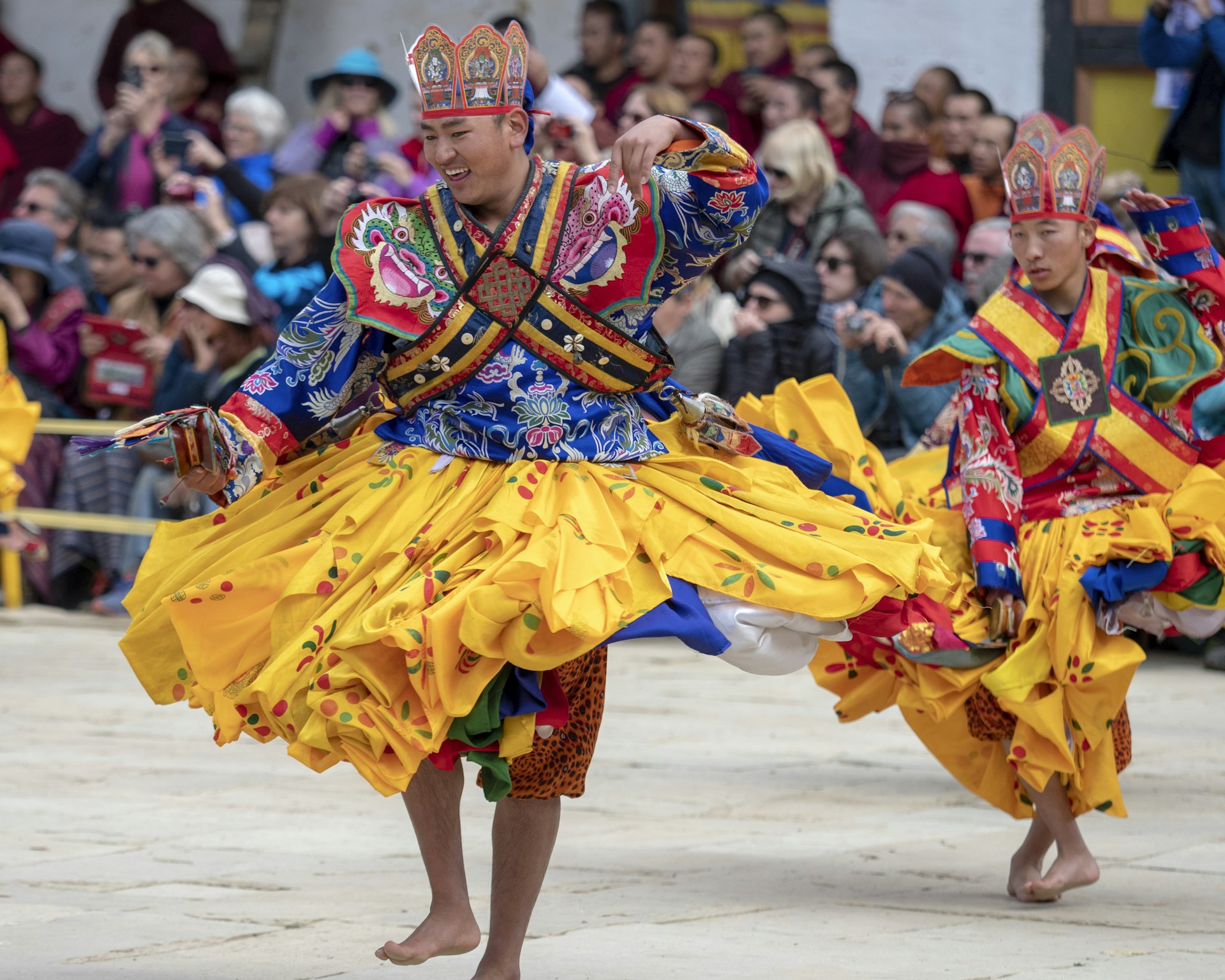
Top Bhutanese experiences
Attend a tsechu (religious dance festival).
Almost every dzong or temple in Bhutan has an annual festival featuring sacred monk dances, colorful costumes and local fairs. The main ones in Thimphu and Paro are a highlight of the Bhutanese year, but it's also worth seeking out a lesser-visited event.
Explore Bhutan on foot
Even a short walk in Bhutan leads up to a sacred meditation center, a Buddhist pilgrimage site or through ancient forests of blooming rhododendrons. It's easily the best way to experience the country's pristine rural charm. For an overnight trip, try the Bumdrak trek, which takes you on a back-door hiking route to the famous Taktshang Monastery.
Relax in a traditional hot stone bath
Soaking in a traditional Bhutanese wooden bathtub in water heated by medicinal hot stones and fragranced with mountain herbs is simply the perfect way to end a long day of sightseeing.
Best time to visit
The best months to visit Bhutan are March/April – for warm temperatures and stunning rhododendron blooms – and October/November – for clear Himalayan views and the most popular festivals.
Now that there are no longer discounts for off-season travel, there's little incentive to visit in the cold winter (December to February) or wet monsoon months (June to September).

How long should I spend in Bhutan?
As long as you can afford it without raiding your kids’ college fund! With a four-day trip, you could see the highlights of the Paro Valley and the quirky capital Thimphu. If you have a week, you can continue over the Dochu-la mountain pass into the charming Punakha Valley.
To get to the central Bumthang Valley or the fascinating but remote far east, you will need a couple of weeks, though a domestic flight from Thimphu can speed things up here.
The bottom line is that you will likely only make one trip to Bhutan in your lifetime, so be sure to make the most of it.
How to get a Bhutan visa
Once you’ve agreed on your itinerary and tour price, the next step is to pay your agency (most likely via a bank transfer) to the agency's account at the Bhutan National Bank. If you are lucky, this will only involve one visit to your bank. Be prepared to explain where Bhutan is.
Once the wire has gone through, you will fill out a visa form and send your agency a digital photograph and scan of your passport photo page. Getting a visa is just a formality, and the agency will email you a copy of your visa authorization after a few days. The visa costs US$40 and will likely have been included in your tour price.
If arranging things yourself, you will have to pay the SDF fee directly to the government and apply for your visa through the Department of Immigration , though the exact process for this hasn't yet been revealed.
On arrival at Paro airport or at the land border with India, you will simply present your visa authorization, and immigration will stamp the visa into your passport.
How to get to Bhutan
Most visitors fly into Bhutan's Paro airport from Delhi , Bangkok or Kathmandu on the national airline Druk Air. It’s essential to print out a copy of your visa authorization before check-in.
With the reopening of tourism in September 2022, foreign tourists can once again enter Bhutan overland through one of three border crossings with India. In reality, the crossing to Phuentsholing is the only one that sees much tourist traffic, mainly with adventurous travelers combining Bhutan with the sights of nearby Darjeeling or Assam .
This article was first published Jun 24, 2019 and updated Sep 26, 2022.
Explore related stories
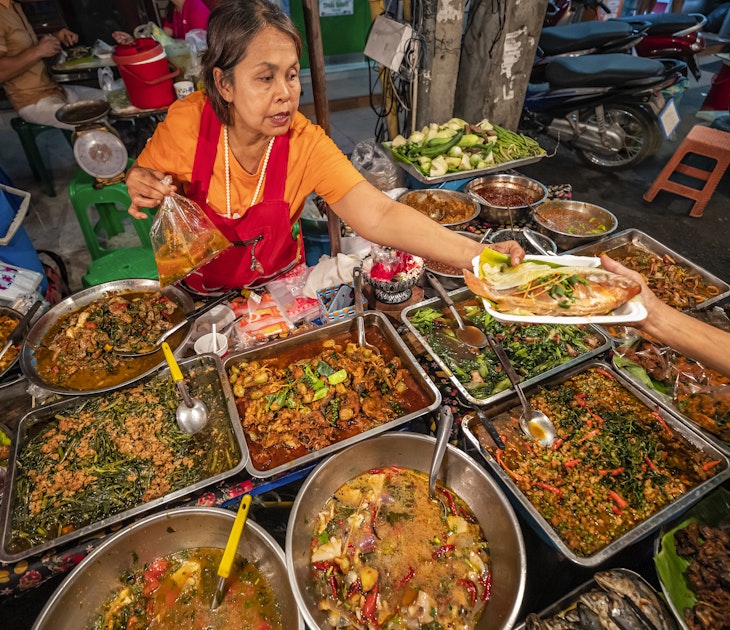
Tips & Advice
Apr 28, 2024 • 6 min read
Find out how to make your bhat stretch further with these budget travel tips for Chiang Mai, Thailand's “Capital in the North.”
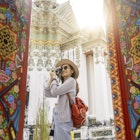
Apr 25, 2024 • 6 min read
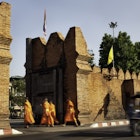
Apr 19, 2024 • 7 min read
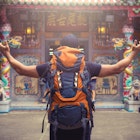
Apr 8, 2024 • 6 min read

Feb 23, 2024 • 7 min read
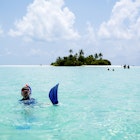
Feb 22, 2024 • 5 min read
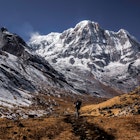
Feb 22, 2024 • 3 min read
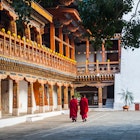
Feb 2, 2024 • 15 min read
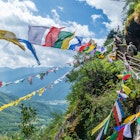
Jan 28, 2024 • 7 min read
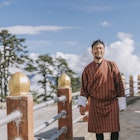
Jan 17, 2024 • 6 min read
How Much It Costs to Travel Bhutan in 2023 (and How to Save Money)
05/28/2023 by Ashley Yap 2 Comments
This post was written by Ashley Yap, BMTM’s Malaysia-based writer.
With the push for sustainable tourism in Bhutan comes a “high-value, low-impact” strategy, a controversial policy by the government to promote “carbon-neutral tourism while building a more sustainable tourism sector.”
Bhutan introduced its new daily sustainable development fee (SDF) in September 2022, which shocked the world: USD 200 per tourist per night, triple its previous fee of USD 65. According to the government, the SDF is used to offset tourists’ carbon footprint, and improve the overall standard of the tourism industry, including guides, accommodation, food, hygiene and so on.
Before 2022, travelers planning a trip to Bhutan were expected to purchase a package for USD 200–250 per night, with USD 65 of that being the SDF. The rest would go to travel costs, like accommodation, transportation, activities, entrance fees, food, and a guide. But this is no longer the case.
My husband and I recently spent one week traveling in Bhutan , and here’s everything we learned about the costs of traveling in the Kingdom of the Thunder Dragon in 2023:
Table of Contents
Bhutan Visa (Sustainable Development Fee)
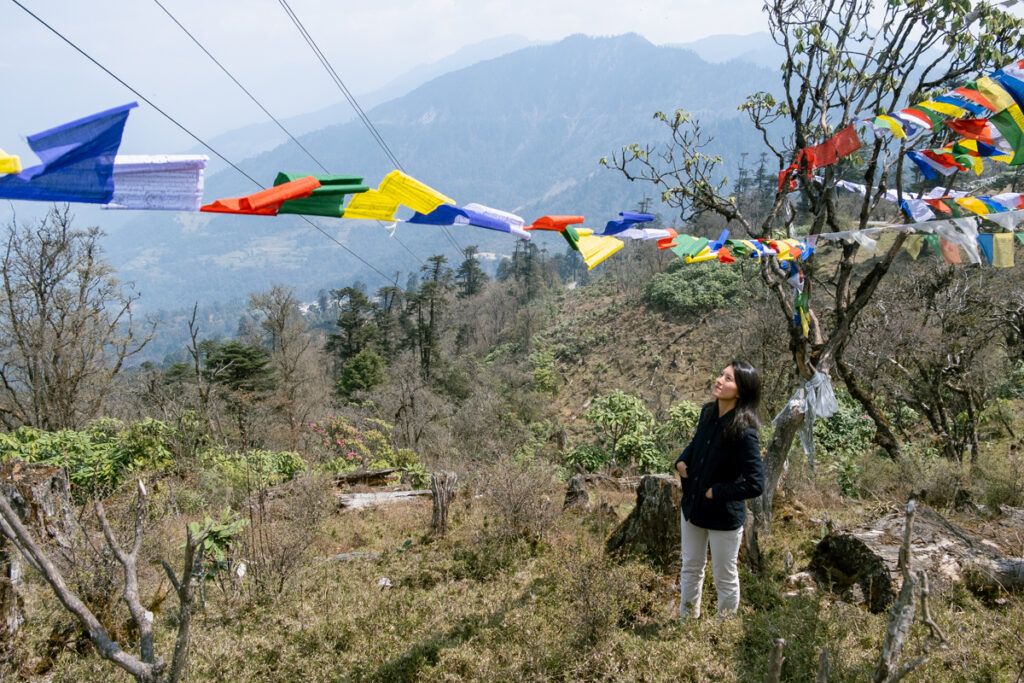
As mentioned, all travelers to Bhutan, except for Indian nationals, are required to pay a USD 200 SDF per night. For families, there is a 50% discount for children below 6 years of age and a 100% discount for children below 2 years old. In addition to the SDF, there’s also a one-off visa processing fee of USD 40 per person.
The new development fee is in line with the government’s sustainable approach to tourism. Your holidays in Bhutan may be one of the greenest trips you have made, as the fee offsets the carbon footprint of tourists. The government also invests the fees into improving the travel industry’s services and facilities.
Most tour operators will apply for a visa on your behalf. A passport-size photograph and a copy of your passport is required for the application. Upon arrival at Paro International Airport, you are required to present the SDF clearance letter at immigration.
How to save money : We spent seven nights in Bhutan and wish we had had longer. However, if you really want to see the country on a smaller budget, I suggest limiting your visits to Paro, Thimphu, and Punakha, and pack everything into a 4-5-day itinerary. You may also combine your Bhutan trip with a visit to neighboring India, which is one of the cheapest countries in the world to travel in .
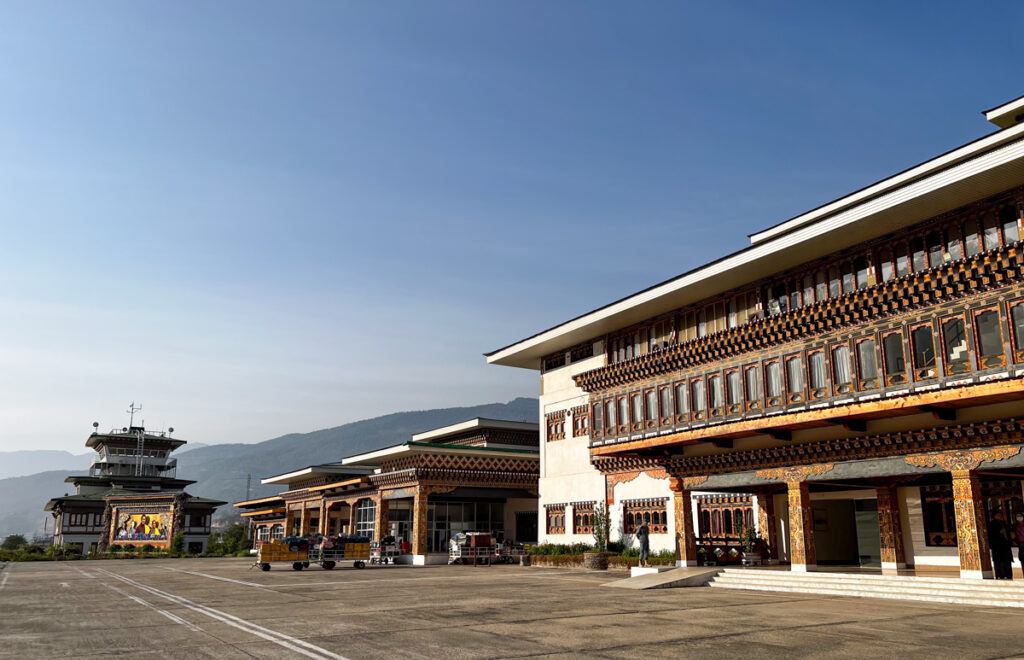
Only two commercial airlines operate flights to and from Bhutan, namely Drukair and Bhutan Airlines. Direct flights are available from Bangkok, Singapore (where a round-trip ticket costs about USD 950-1,000), and several cities in India, Nepal, and Bangladesh. Your tour operator can help you arrange your flights.
How to save money : Fly in from India, Nepal, or Bangladesh, where flights are about USD 350-550 cheaper than flying from Bangkok or Singapore. You may even consider entering and exiting Bhutan via Phuntsholing and through West Bengal in India by car. Some tour operators, including Breathe Bhutan , can pick you up from Phuntsholing for an additional cost.
Tour Guide and Driver
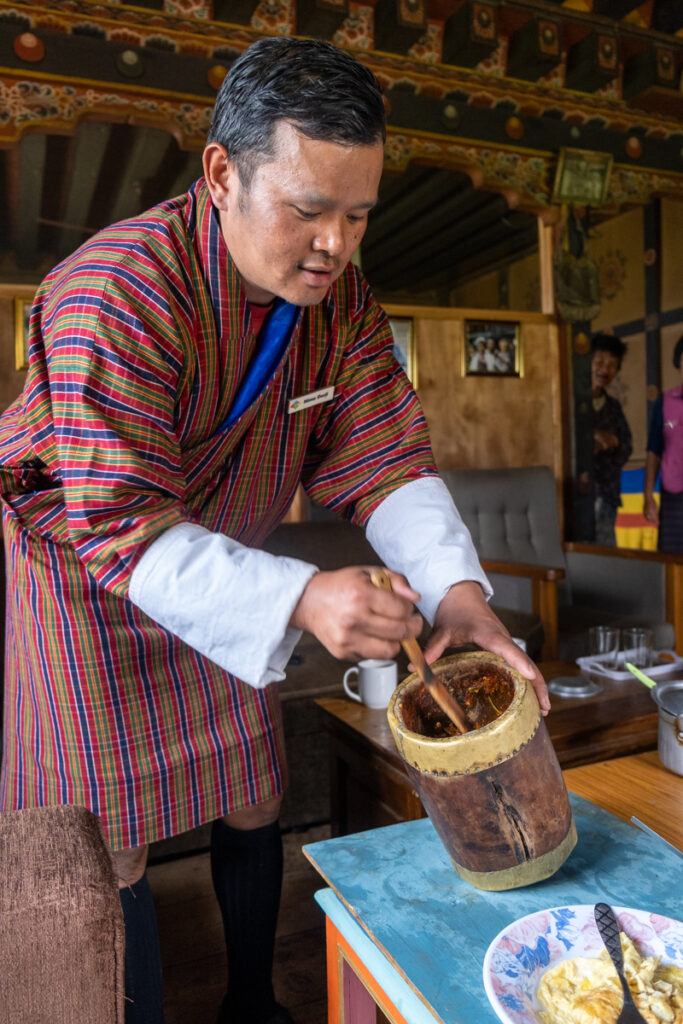
With the revised sustainable development fee, travelers may now travel independently in Bhutan, or at least in Paro and Thimphu. However, I highly recommend traveling with a tour guide, as they provide interesting insights into the culture, offer meaningful conversations, and facilitate engagements with locals.
A driver is absolutely necessary when traveling in Bhutan. The distances from one place to another can be long — we spent an average of three hours per day in the car during our trip. There are no traffic lights in the entire country, and you share the cliffside highways with cows, dogs, yaks and the like. In short, I would not want to drive myself in Bhutan (I am not sure if it’s even possible!).
We wanted a personalized and unique Bhutan experience, and so engaged Breathe Bhutan , who tailor-made an itinerary for the two of us. The cost of our tour, which included all meals, a vehicle, a driver, a guide, and taxes, amounted to USD 2,200 for two persons for one week, or about USD 160 per person per day. This does not include the SDF.
How to save money : Join a small group tour, or gather a small group of friends to travel to Bhutan together. Most tour companies offer a discount for group trips.
-READ NEXT-
12 Things to Know Before Visiting Bhutan in 2023
Accommodation
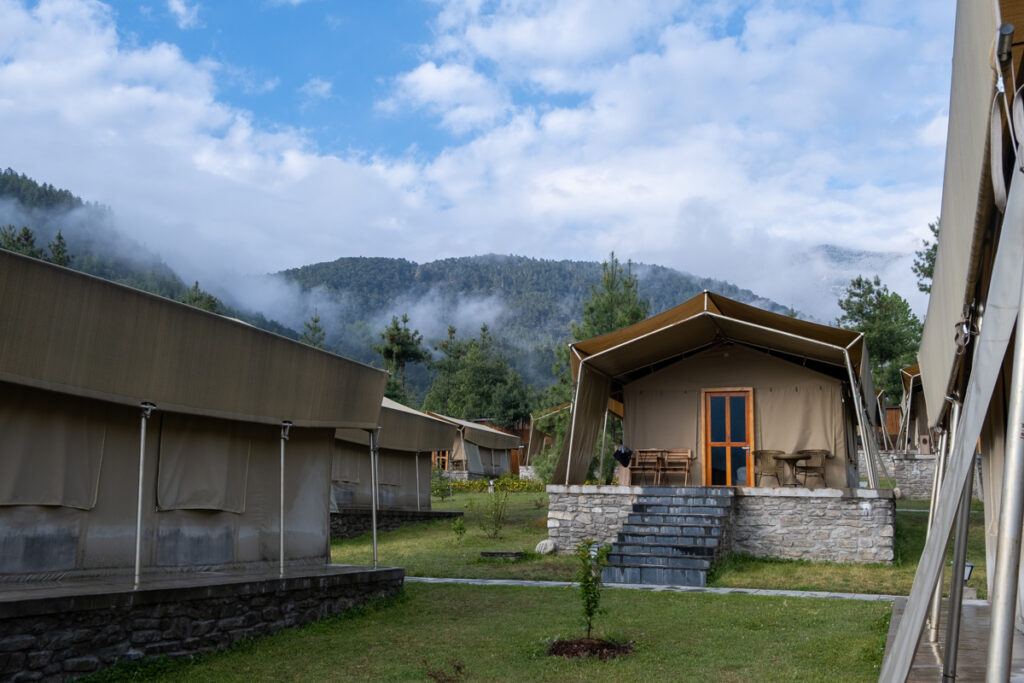
I requested for a range of different accommodation experiences during our stay in Bhutan, and we were able to experience an eco-lodge, a farm resort, a glamping tent, and a four-star hotel. The lodging options in Bhutan are surprisingly abundant!
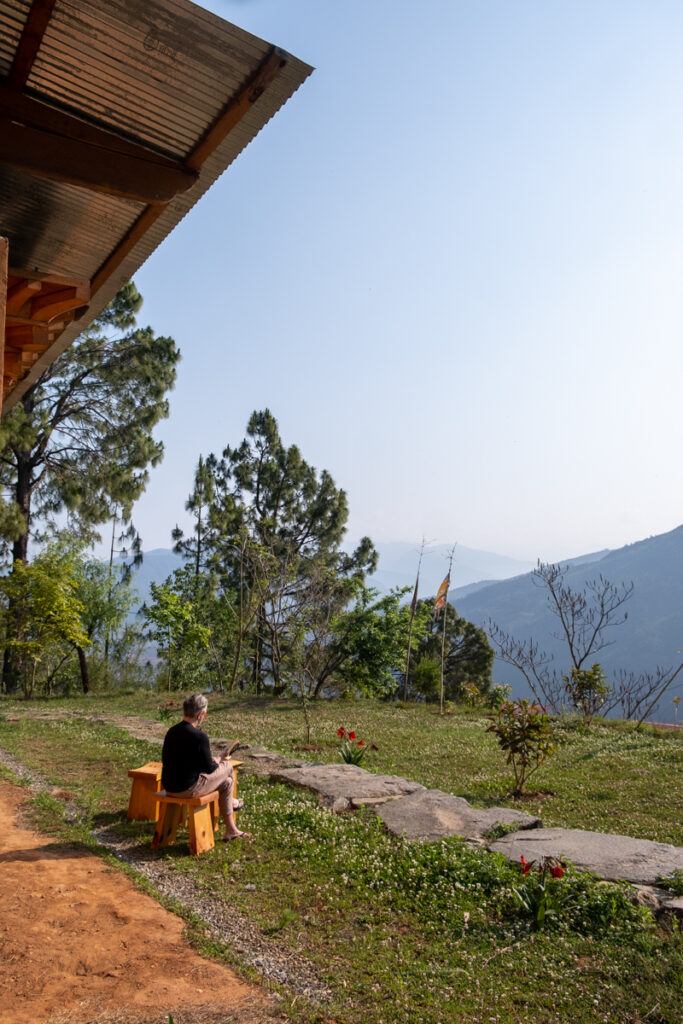
Here’s how much each of our stays cost:
- The Pema, Thimphu (four-star hotel): USD 150 per night
- Dhumra Farm Resort, Punakha (women-run): USD 140 per night
- Gaselo Eco Lodge, Punakha (family-run): USD 75 per night
- Dewachen Hotel & Spa, Phobjikha Valley: USD 85 per night
- Tiger’s Nest Camp, Paro (glamping tents): USD 130 per night
How to save money : Request local home stays! They are much cheaper than hotels and offer a unique experience. It was unfortunately not possible for us during our trip, but I’d definitely try staying at a farmhouse the next time we visit Bhutan.
Food and Drinks
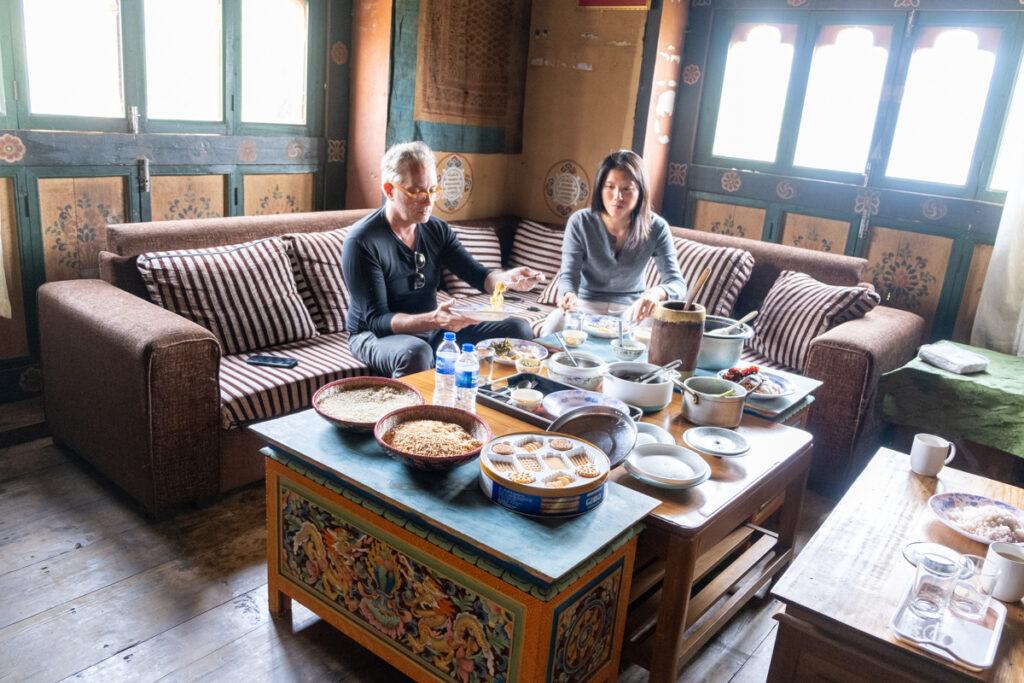
Since this is covered by most tours, you won’t really be spending money on food and drinks. On our trip, we found Bhutanese food to be simple and delicious. Most meals include 3-4 vegetable dishes (chili and cheese are constants), 1-2 proteins (eggs or chicken), and rice. The Bhutanese tend to eat the same things for breakfast, lunch, and dinner. Most hotels offer complimentary Western-style breakfasts.
As for drinks, I enjoyed the local milk tea, whereas the butter tea can be an acquired taste. You can also find local beer and wine at restaurants and convenience stores.
I read on other blogs that Bhutanese food can be bland, but my husband and I enjoyed everything that was put on our table. I especially loved yak cheese!
Entrance Fees
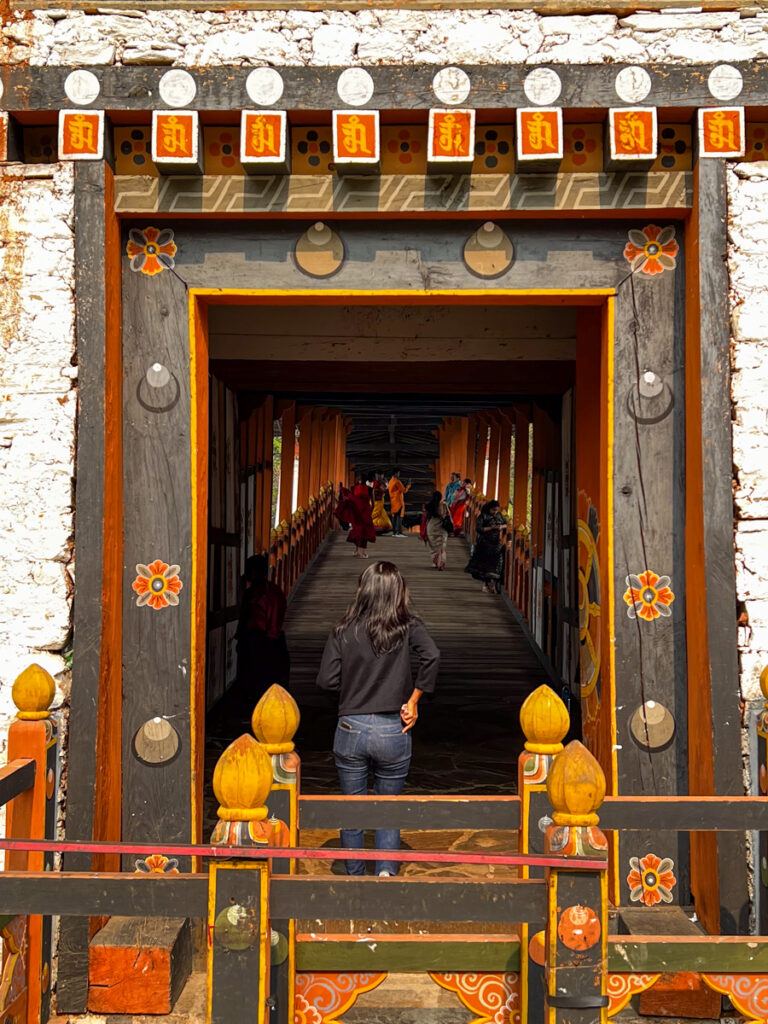
Most sacred sites in Bhutan, including the dzong s (fortified monasteries) and the Buddha Dordenma, require an entrance fee of about USD 13 per person. The Tiger’s Nest entrance fee is about USD 25 per person. Since our tour included entrance fees, we did not have to worry about them.
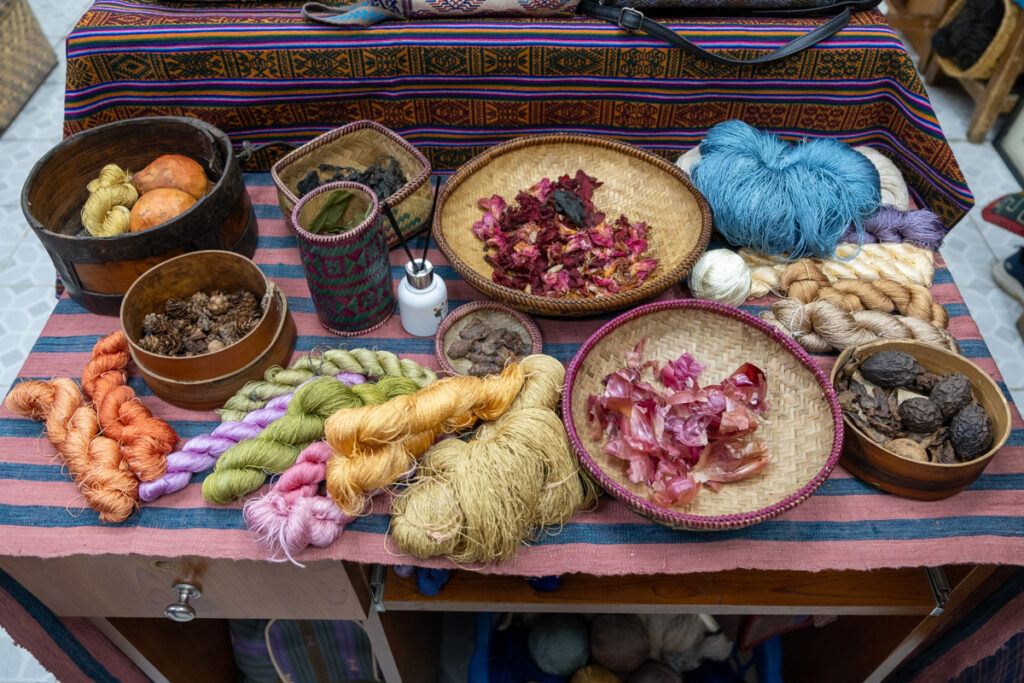
Whether it’s paintings, scarves, bags, or wood sculptures, the attention to detail in Bhutanese art and crafts is very impressive. If you plan to shop for souvenirs, be sure to visit the shopping street in Paro Town before going home.
For art lovers, you may be interested in investing in a thangka , a Tibetan Buddhist painting made with natural pigments. Each thangka takes weeks or months to complete, and while there are several specific themes, it is up to the artist to interpret in his or her own way. Because of this, a thangka painting can cost from a few hundred dollars up to the thousands.
Unfortunately, there are many shops in Paro selling machine-produced thangka s, and it can be tricky to differentiate a hand-painted one from a machine-made one, so definitely consult your guide, who would be able to advice.
Other Activities
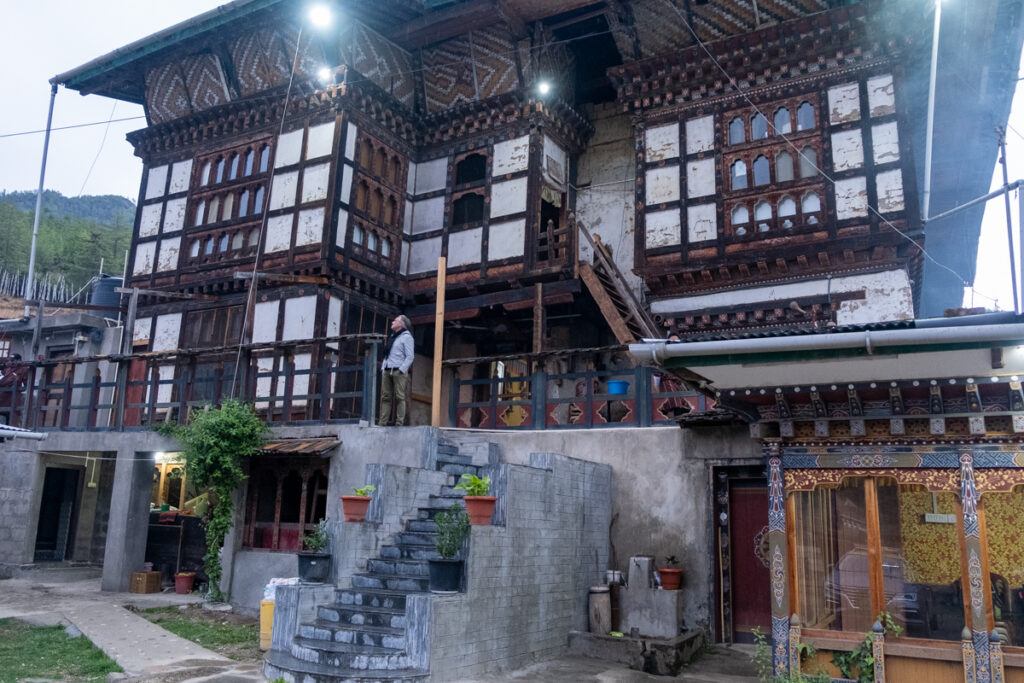
A popular activity to do after the Tiger’s Nest hike is a hot stone bath, which consists of fresh water mixed with Artemisia absinthium leaves, heated with roasted river stones. You will spend about an hour soaking in a wooden tub, and it’s the most relaxing thing to do after a long day of hiking.
Some hotels have their own hot stone bathhouse, which I recommend booking for the evening after your hike. It costs about USD 10 per person for an hour. For a more traditional experience, you can visit local bathhouse (like the one in the picture above), which costs more, about USD 18 per person, but offers an authentic experience.
Another fun thing to do is whitewater rafting in Punakha, along Mo Chhu (Female River) and Pho Chhu (Male River). We did not get to try this, but this blog post gives you the full rundown. A raft costs USD 150 and can take up to six passengers.
Tipping in Bhutan
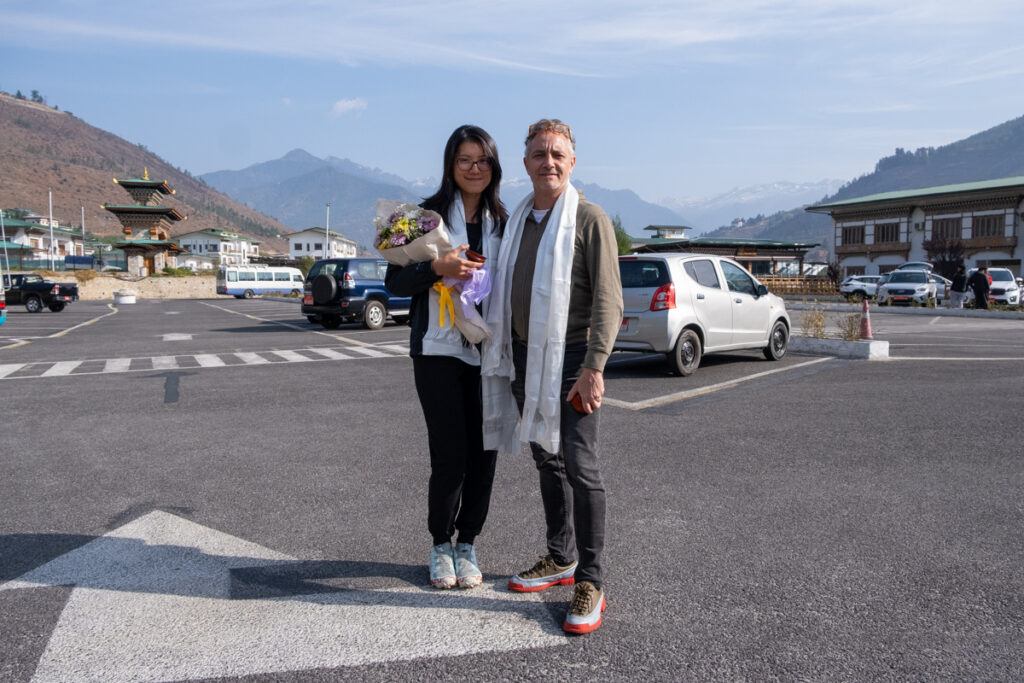
Tipping your tour guide and driver is customary. I was very grateful for our guide and driver, Nima and Phuentso, who took such great care of us and generously shared the beauty of their country with us. While there’s no specific tipping rate, it was recommended to us to tip about USD 20 per day. Considering that they spent over 10 hours with us and frequently went out of their way to make sure we got to make the most of our trip, I think the tip was well deserved.
In total, our trip to Bhutan cost about USD 7,500, or about USD 535 per person per day, including the USD 200 daily fee.
I hope this post is helpful to you. Comment below if you have any questions about budgeting for your Bhutan trip!
*This post was brought to you in partnership with Breathe Bhutan . All opinions on the tour operator and the Kingdom of the Thunder Dragon are my own. Your trust comes first!
Leave a Reply Cancel reply
Your email address will not be published. Required fields are marked *
Save my name, email, and website in this browser for the next time I comment.
subscribe to our newsletter
This site uses Akismet to reduce spam. Learn how your comment data is processed .
Dextro says
12/06/2023 at 9:48 pm
Hi, I am planning to visit Bhutan I want to know whether guide is mandatory or not for the trip. Extremely confused by the articles out there on internet. What are the authentic rules? Reply awaited.
Ashley Yap says
12/07/2023 at 1:23 am
A guide is mandatory for visiting Bhutan. We highly recommend Breathe Bhutan!
- Account Details
- Newsletters
- Group Subscription
Bhutan reopens with $200 tourist tax in test for sustainable travel
Sky-high daily levy worries pandemic-battered tourism operators
THIMPHU -- The tiny Himalayan kingdom of Bhutan, regarded as one of the world's most exclusive travel destinations, reopens to tourists on Friday after a closure of around two and half years because of COVID-19.
But the resumption of tourism and quarantine-free entry for fully vaccinated travelers comes with a steep hike in the tourist tax, among other changes designed to keep Bhutan a high-end, sustainable destination. This has left many operators, still reeling from the pandemic, uncertain and anxious.
Japan to allow visa-free individual tourists from Oct. 11
Hong kong scraps quarantine in hotels as business hub reopens, taiwan set to ditch quarantine restrictions for arrivals, japan tourism after covid: industry aims for more sustainable boom, hyatt hotels to open japan hot spring inns to soak up inbound demand, thailand says 2023 tourism revenue to be 80% of pre-covid level, japan's tourism reopening will help bring back normalcy, japan eyes domestic tourism boost as border reopening nears, ancient samarkand gets a modern makeover, latest on travel & leisure, china may day travel set to test consumer appetite for spending, niseko gin shows japanese resort offers more than skiing, from kyoto to kamakura, japan braces for new surge in overtourism, sponsored content, about sponsored content this content was commissioned by nikkei's global business bureau..
Nikkei Asian Review, now known as Nikkei Asia, will be the voice of the Asian Century.
Celebrate our next chapter Free access for everyone - Sep. 30
Solo female travel anywhere and everywhere.
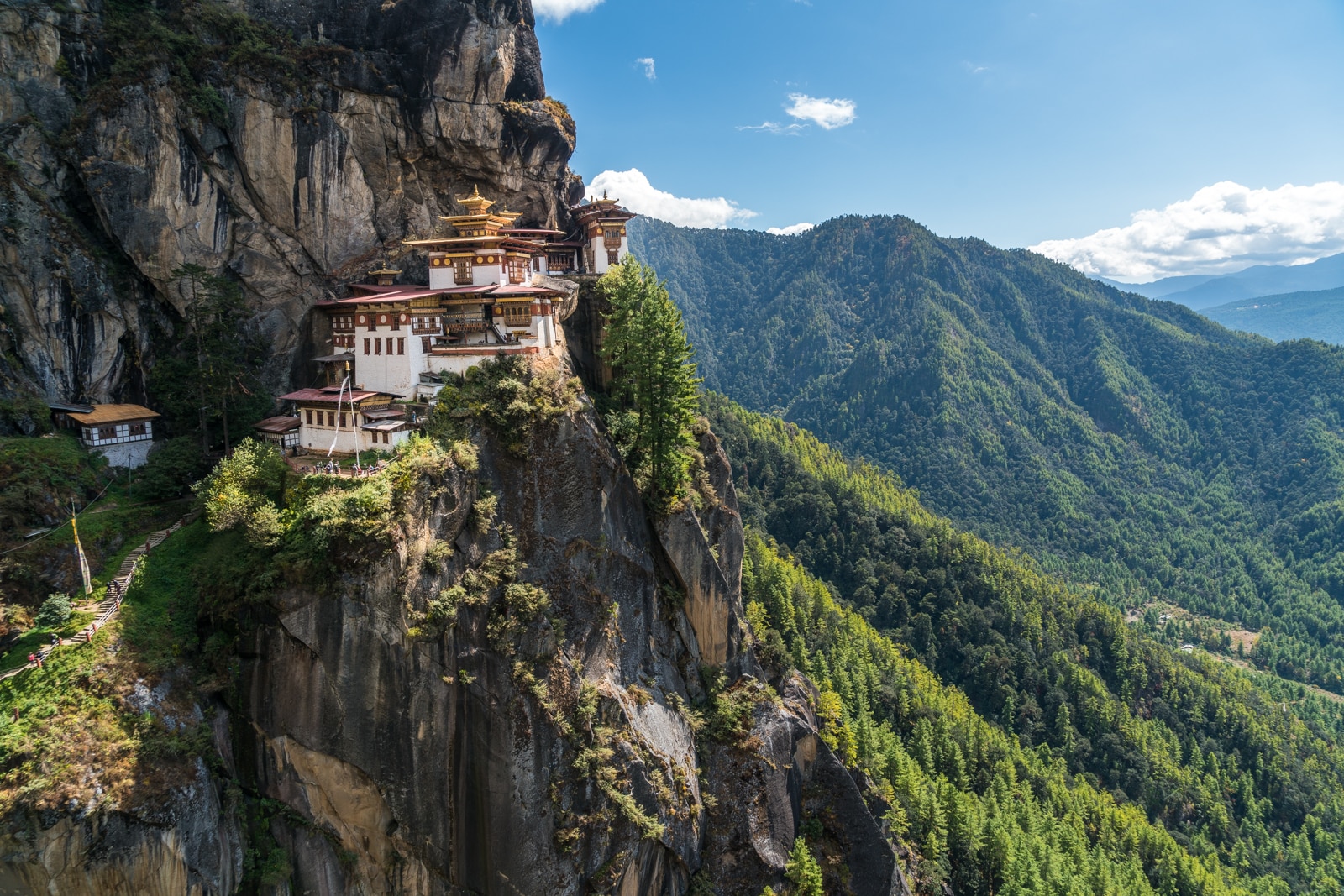
Is Bhutan really worth $250 per day?
We’ve all heard Bhutan is beautiful, but is the cost of a trip to Bhutan worth $250 per day? After three weeks in Bhutan, here are my honest thoughts on whether or not the Bhutan trip cost is worth it.
$200 to $250 per day, per person. At least. That’s how much a trip to Bhutan costs. So is tourism in Bhutan worth the money?
Compared to budget-friendly neighbors such as India and Nepal , Bhutan’s trip cost is steep. Yet there’s no denying Bhutan’s tourism allure, and I know many of you are beyond intrigued. Ever since I entered the country, I’ve been fielding the same question over and over:
“Is a trip to Bhutan worth the $250 tourism fee per day?”
After more than three weeks of travel in Bhutan—and obsessively assessing whether or not the Bhutan tourism fee is fair—I have my final answer to the question whether Bhutan is worth the cost of $250 a day:
If you can afford it, absolutely .
Index: What you need to know about the cost of travel to Bhutan
How much does it cost to travel to bhutan.
- What’s included in the Bhutan tourism daily fee?
- Where does the revenue from Bhutan’s tourism fee go?
- Why is Bhutan’s tourism fee important?
- Why I think Bhutan is worth the trip cost
- To travel to Bhutan or not to travel to Bhutan?
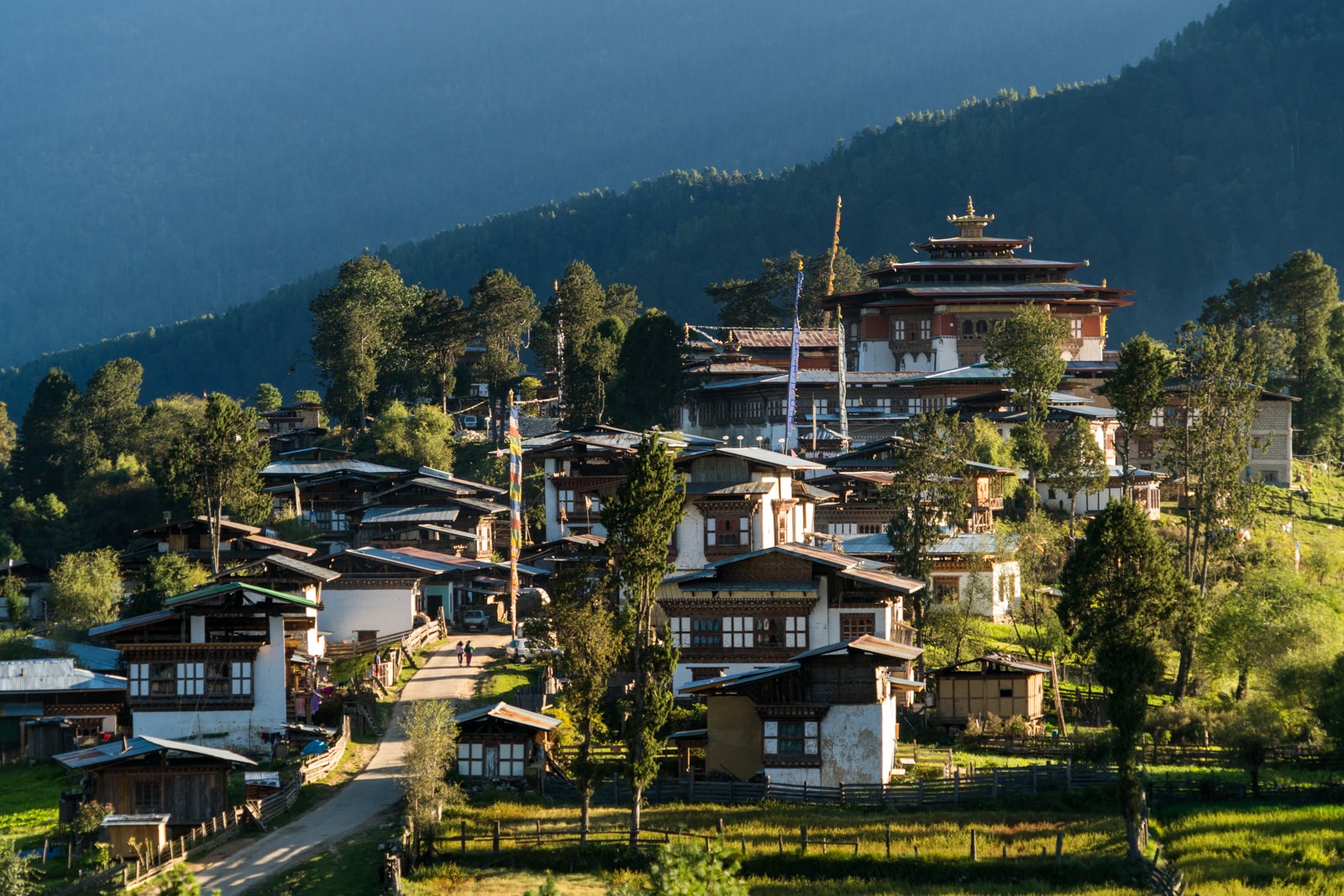
Monastery atop a hill overlooking Phobjikha Valley, surrounded by small but pretty Gangtey village.
How much does a Bhutan trip cost?
I’ll elaborate on why Bhutan is worth it in a hot second, but first, let’s clear up some misconceptions about the cost of travel to Bhutan:
Basically, the cost of a trip to Bhutan doesn’t have to exceed the minimum daily fee.
The minimum daily fee for most foreigners is:
- $250 per person per day from March – May, and September – November (high season)
- $200 per person per day from December – February, and June – August (low season)
Many people are confused because they think Bhutan’s daily tourist fee is a cost on top of other travel costs, but the opposite is true: it’s basically an all-inclusive trip cost!
However, it’s possible you’ll need to pay more depending on how you will be traveling:
- Solo travelers: An extra $40 per day to the standard cost of traveling in Bhutan.
- Two person private tour: An extra $30 per day, per person.
- Luxury travelers and high-altitude trekkers: Those looking for more luxurious accommodations in 5-star hotels and resorts should expect to pay several hundred dollars more per day. The same goes for those interested in trekking with high-quality gear and camping equipment.
There are some discounts available, primarily for students and children ages 5 – 12. See the Tourism Council’s website for more details.
Bhutan trip cost for Indians, Bangladeshis, and Maldivians (regional travelers)
Indians, Bangladeshis, and Maldivians used to be exempt from the daily fee requirements, due to reciprocity demands between governments.
However, starting July 2020, they will have to pay 1,200 Rs per day (roughly $16) to visit Bhutan . As of 2021, Indian, Bangladeshi, and Maldivian tourists are also now required to be part of an organized tour when traveling to Bhutan. The main difference is that they do not have to pay the same minimum daily rate as tourists from other countries.
The reason for this price increase is that in recent years, regional tourism to Bhutan exploded— more than 60% of tourists to Bhutan were Indian in 2018—threatening Bhutan’s system of low traffic, high value tourism. There were also many concerns about the environmental impact of regional tourists as pollution increased at tourist sites and the number of vehicles on the road skyrocketed. These new regulations are an attempt to manage the new flows of tourists while preserving Bhutan’s original tourism strategy.
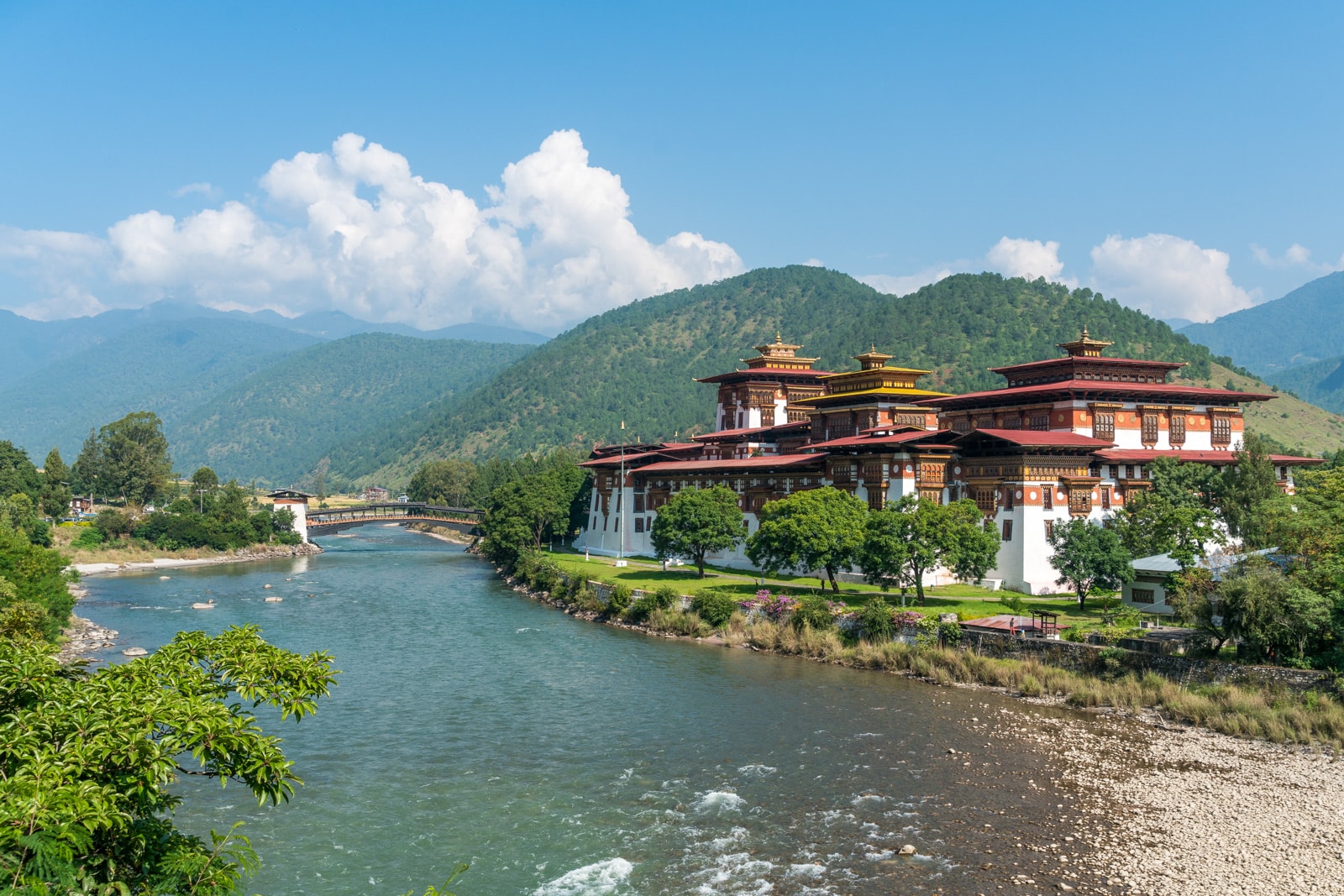
Punakha dzong, the largest fortress in the country
What’s included in the Bhutan tourism fee?
Many people assume Bhutan’s tourist fee is something paid on top of other expenses in the country. Not so!
The daily fee for Bhutan should include:
- Visa to Bhutan
- Licensed Bhutanese guide from an official Bhutanese tour operator. My guide was incredibly chill, helpful, and a great companion throughout my 3+ weeks in Bhutan.
- Driver and transportation. Usually, this means a comfortable and new 4×4, or a medium-sized tour bus. Internal flights are not covered.
- Accommodation. Hotels are all at least 3-stars, clean, and often spacious with impeccable service. Homestays and camping can also be requested.
- Entrance fees to tourist sights
- Food and drinks. Hotel restaurants are the norm, but if your tour group is small, ask to eat at local restaurants. Your guide should grant your wishes without any extra cost, but you’ll have to pay for any alcohol. (Protip: Bhutanese wine not recommended.)
- Trekking gear. If you’re going on a trek, that is.
- All taxes within the country
Basically, the Bhutan tourist fee covers all of your necessary expenses within Bhutan. The only common costs not covered by this fee are:
- Flight to/from Bhutan
- Tips for guides and drivers (expected at around 10% of the tour cost)
Once you’ve paid your tour company, you could theoretically waltz into Bhutan without cash, no problem… though your guide will deserve a tip by the end of your trip!
For more information about what is officially included in the minimum daily cost of travel to Bhutan, see the description on the official Bhutan Tourism website .
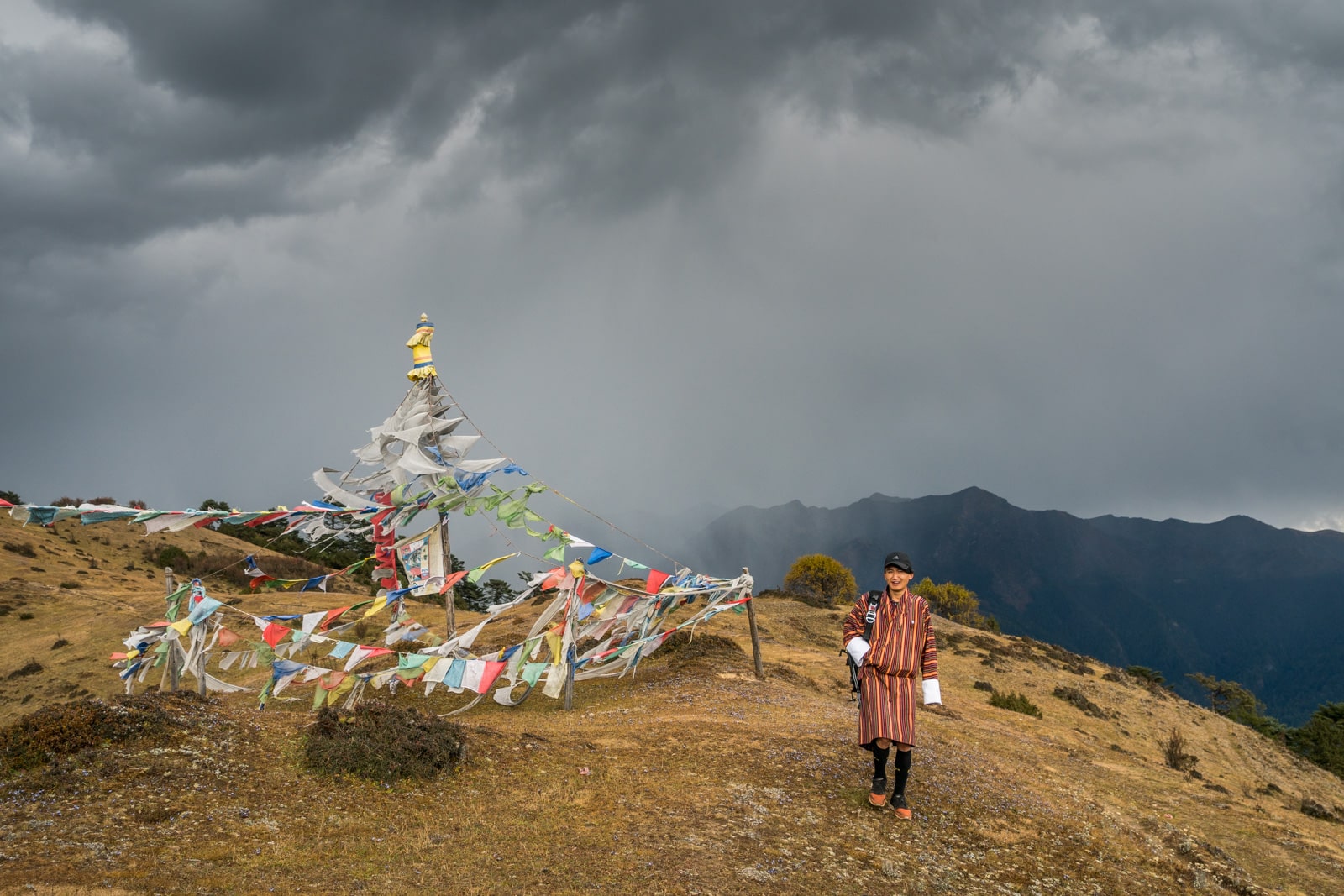
My guide and friend, Karma, who most definitely deserved all the tips by the end of my 3+ week adventure
Where does revenue from the Bhutan tourist fee go?
Ah, the important question!
Obviously, a slice of the pie goes to the tour agency, guides, drivers, hotels, etc. What’s more interesting is the $65 per day going to the government’s “sustainable development fee”.
Fancy name aside, this means around 30% of your money goes to Bhutan’s government. Though no government is totally transparent in its spending anywhere in the world, Bhutan’s government is legitimately committed to offering its citizens free health care, education, infrastructure, and more.
Even to the average tourist, the results of this money are visible. I had extended English conversations with 12-year-olds, there’s a slick new highway being built across the country, and I was told stories of Bhutanese people being sent abroad for medical treatment… free of cost!
Beyond my own personal experience, actual data illustrates a similar picture: despite the fact that many people in Bhutan live in extremely remote regions and depend on agriculture for income, 99% of citizens have access to clean water, 99% of houses have electricity, primary school enrollment is at almost 99% (and 95% of students make it to the last grade of school)… and I haven’t even mentioned Bhutan’s continued commitment to being the only carbon neutral country in the world and maintaining at least 60% tree coverage of the country at all times.
Skeptical? Still curious? It’s a bit dense, but this 2018 UN sustainable development report (PDF) has all the stats about Bhutan’s successes and shortcomings.
But why is Bhutan’s tourist fee that important?
Some of you have griped to me that it’s not a tourist’s responsibility to play charity, but consider Bhutan’s situation:
Bhutan is a land-locked country of only 700,000 people, with limited options for export or industry due to its remote, mountainous terrain. Much of the country’s population is poor, and 8% live below the international poverty line . The government is grappling to maintain Bhutan’s well-preserved culture in the face of rapid development and modernization.
Tourism is one of the very few major industries in Bhutan, but unbridled tourism in Bhutan can quickly consume the country and its culture… especially when the country is home to less than one million people.
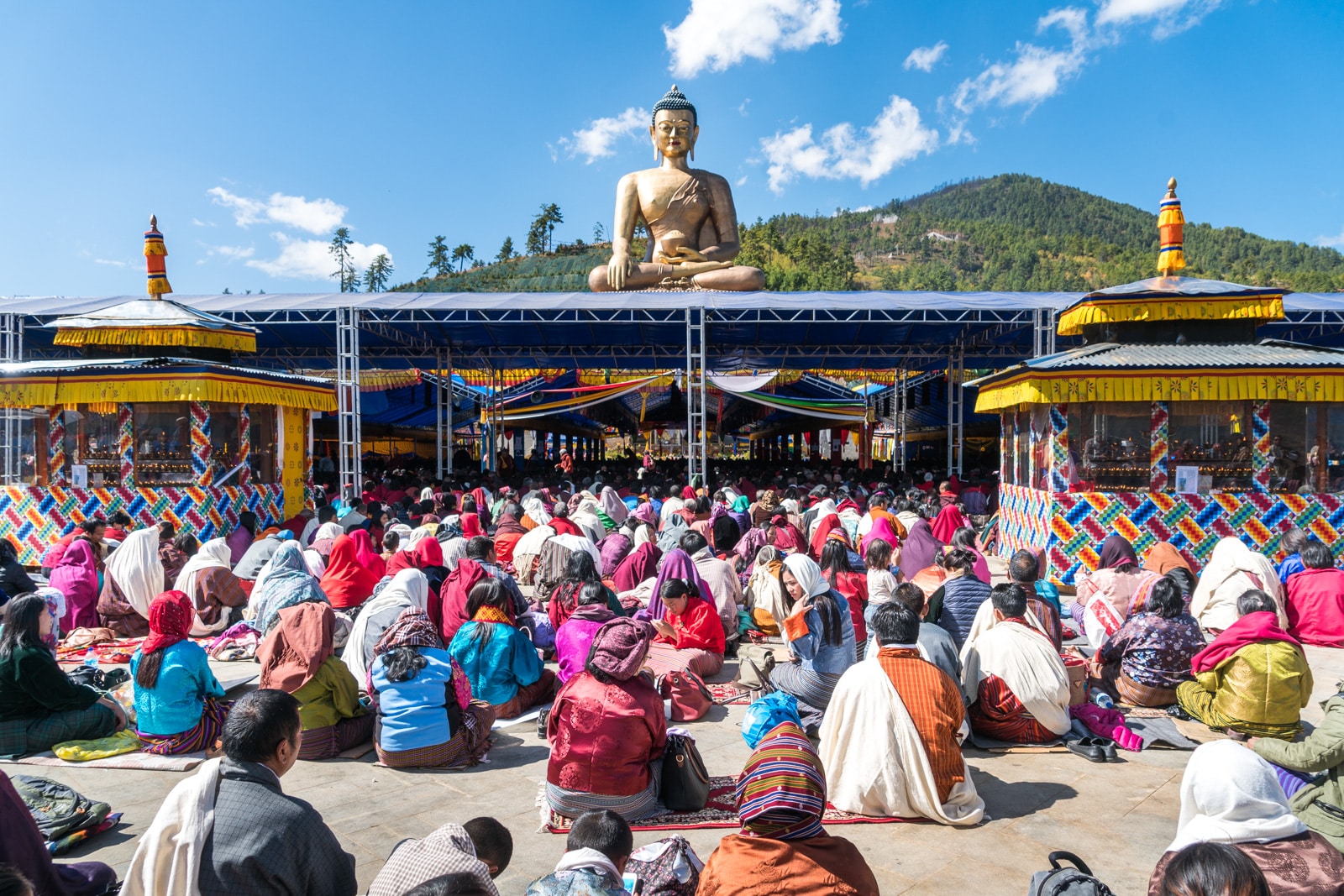
Thousands of people coming to listen to the teachings of a renowned monk at Buddha Point in Thimphu
Bhutan doesn’t want to become the next Venice sinking under the weight of millions of holiday goers, nor attract the hordes of culturally insensitive backpackers who flood Southeast Asia, Nepal, and India. The country wouldn’t be the same if drunk backpackers in elephant pants staggered by locals in traditional gho and kira. And that’s coming from someone who wobbled ‘round Asia in said pants years ago. Yes, I admit it.
Bhutan makes great efforts to adhere to sustainable tourism standards, and we should laud their efforts in this age of destructive mass tourism. Though their system isn’t perfect, Bhutan’s daily tourist fee is a tried and tested method of limiting tourist numbers, while simultaneously ensuring tourism’s revenues reach the entire population and the majority of tourists are somewhat responsible travelers . Critics say limiting tourism to wealthy travelers is elitist—I don’t disagree—but if the system works for Bhutan and locals benefit from it, I don’t think it’s our place to demand otherwise.
If you’re still upset about the daily cost of traveling in Bhutan, remember that travel is a privilege , not a right. It’s well within the country’s rights to stem the flow of mass tourism using whatever means works best.
Read more: 27 ways to travel more responsibly
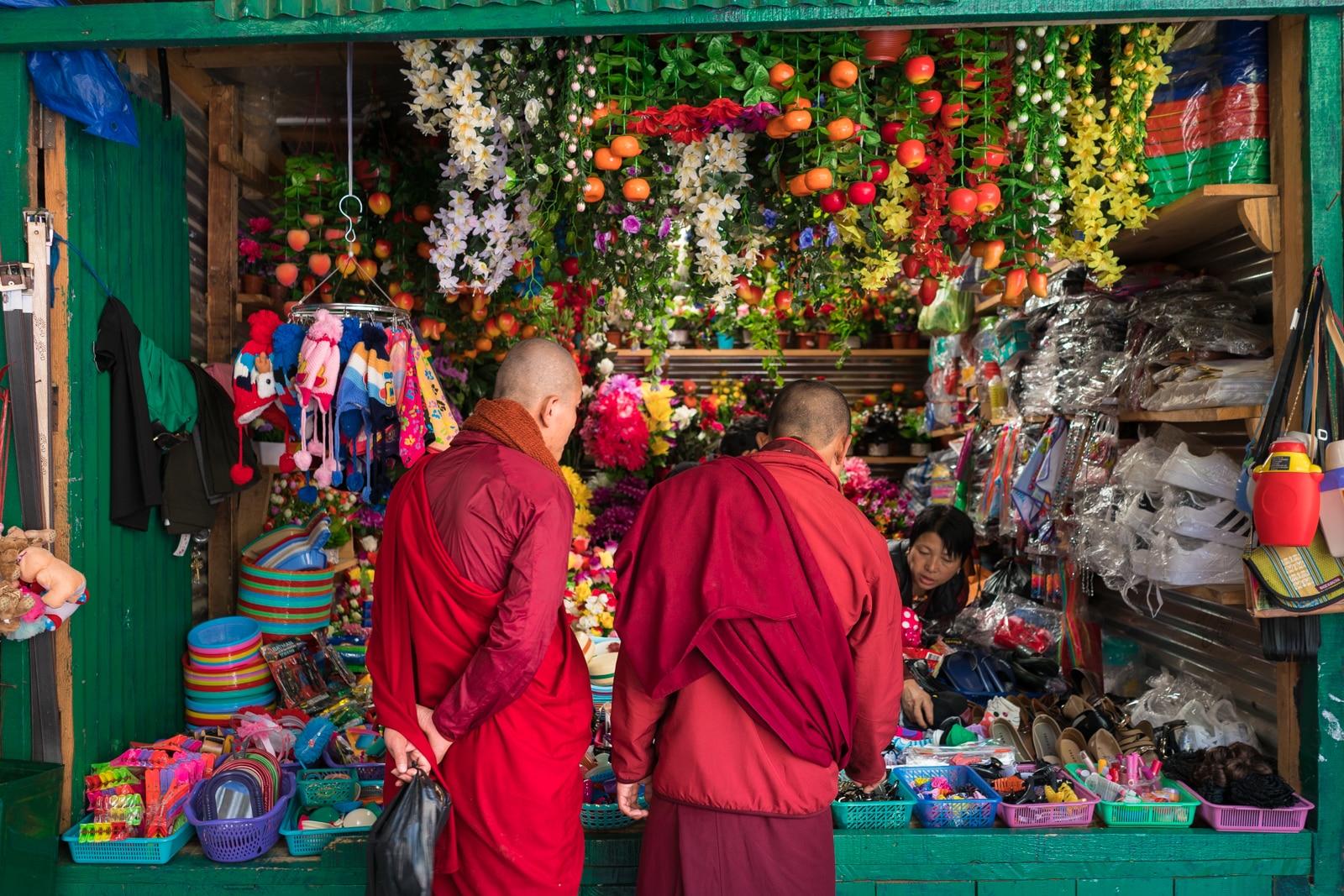
Shopping time for some monks at a local market
Why Bhutan is really worth your money
Okay, okay, it’s time for me to get off my soapbox. Although sustainable tourism is imperative, Bhutan’s forward-thinking policies aren’t the only reason it’s worth your money. You’ve stuck with me this far, so it’s about time I give you the answer you’ve been waiting for.
Why is Bhutan worth your money? Because it’s freakin’ beautiful, and there’s no other place in the world like it.
You can while away afternoons in Bhutan listening to the patter of shoes slapping stone amongst the white walls of dzongs, fortresses. Sometimes it’s a red-robed monk off to say prayers beneath towering statues of demons on the monastery side of the dzong . Other times it’s a woman in a silky kira dress making her way to work in the administrative side of the repurposed fortress.
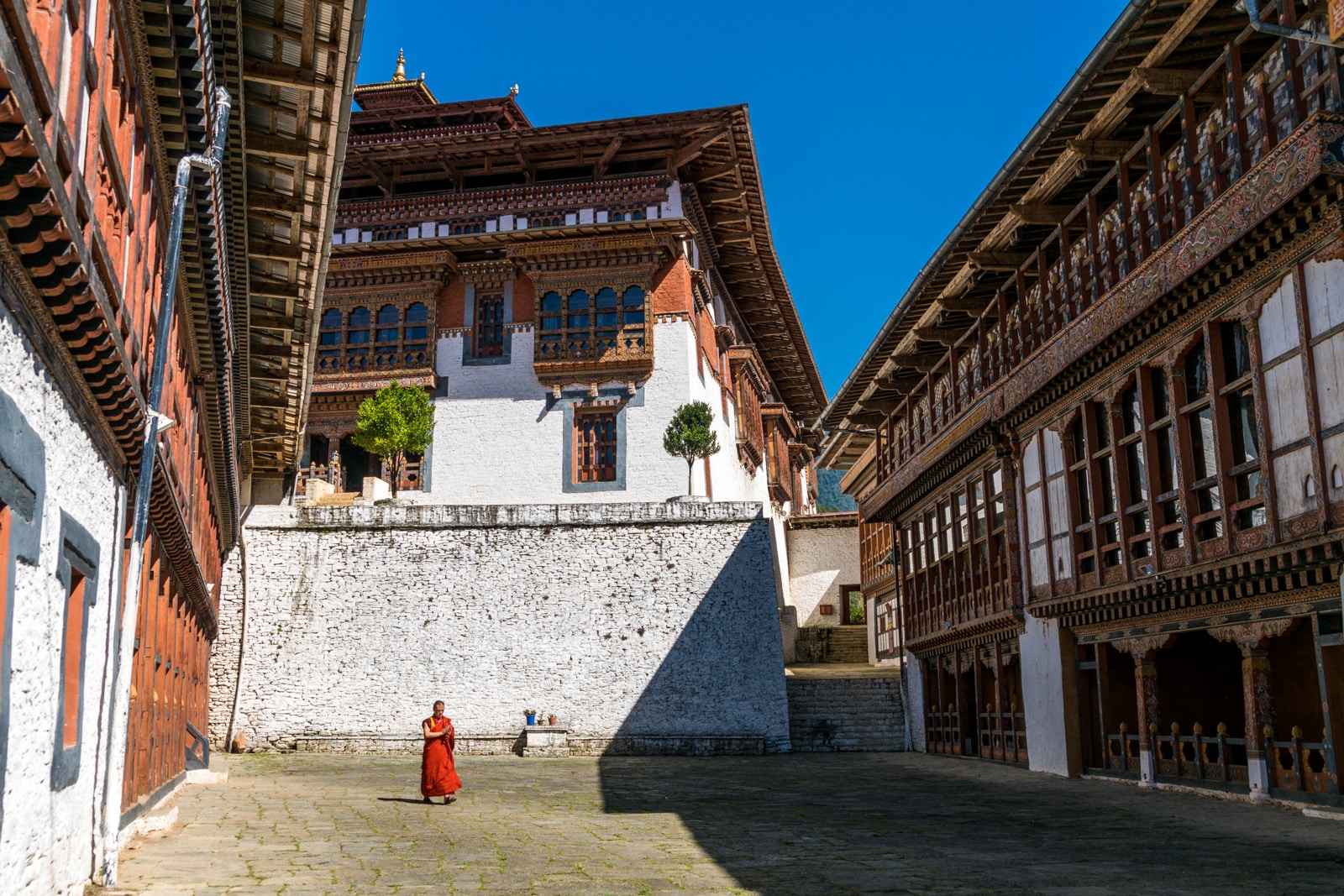
Off to monastic business in the Trongsa dzong
In the capital, Thimphu, you can go sightseeing by day, then trade traditional robes and historic monasteries for a cold cocktail and bumping beats in a nightclub with the country’s hippest youth.
While driving through Bhutan, you can feast your eyes on the houses pretty enough to be mistaken for temples lining the country’s hills. Some are painted with intricate knots and auspicious animals, while others are painted with hairy, ejaculating phalluses. Yes, really.
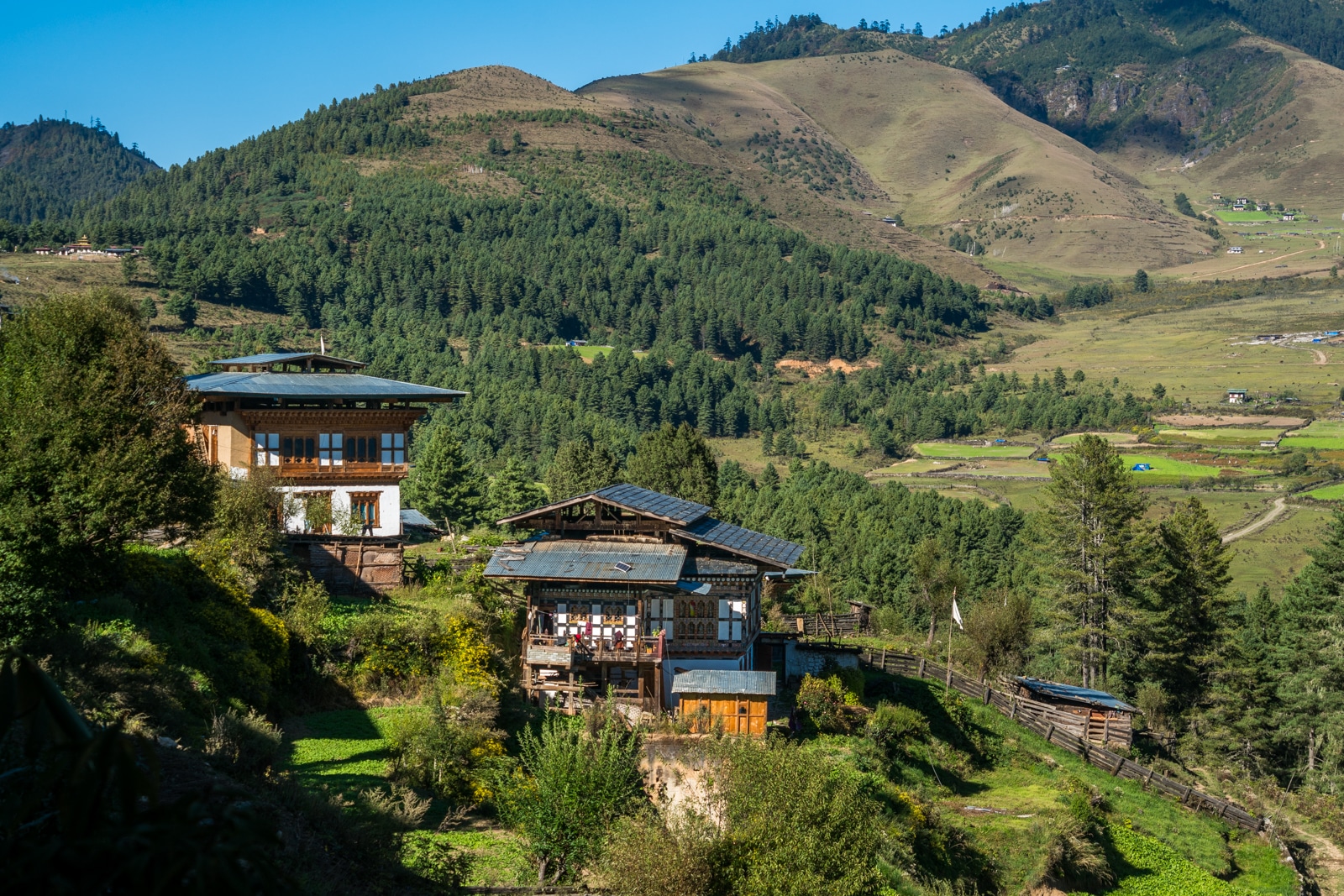
Practically perfect traditional houses in Phobjikha Valley
In Bhutan, you’ll never have to worry about sharing trekking trails. Far from the overcrowded routes of Nepal, even the most popular of Bhutan’s paths are delightfully quiet. The country’s 72% forest coverage means you’ll never go too long without a bit of greenery up above. Even better, Bhutan’s nature is pristine and clean; an experience I certainly haven’t encountered in other South Asian countries (though I have yet to visit Maldives) .
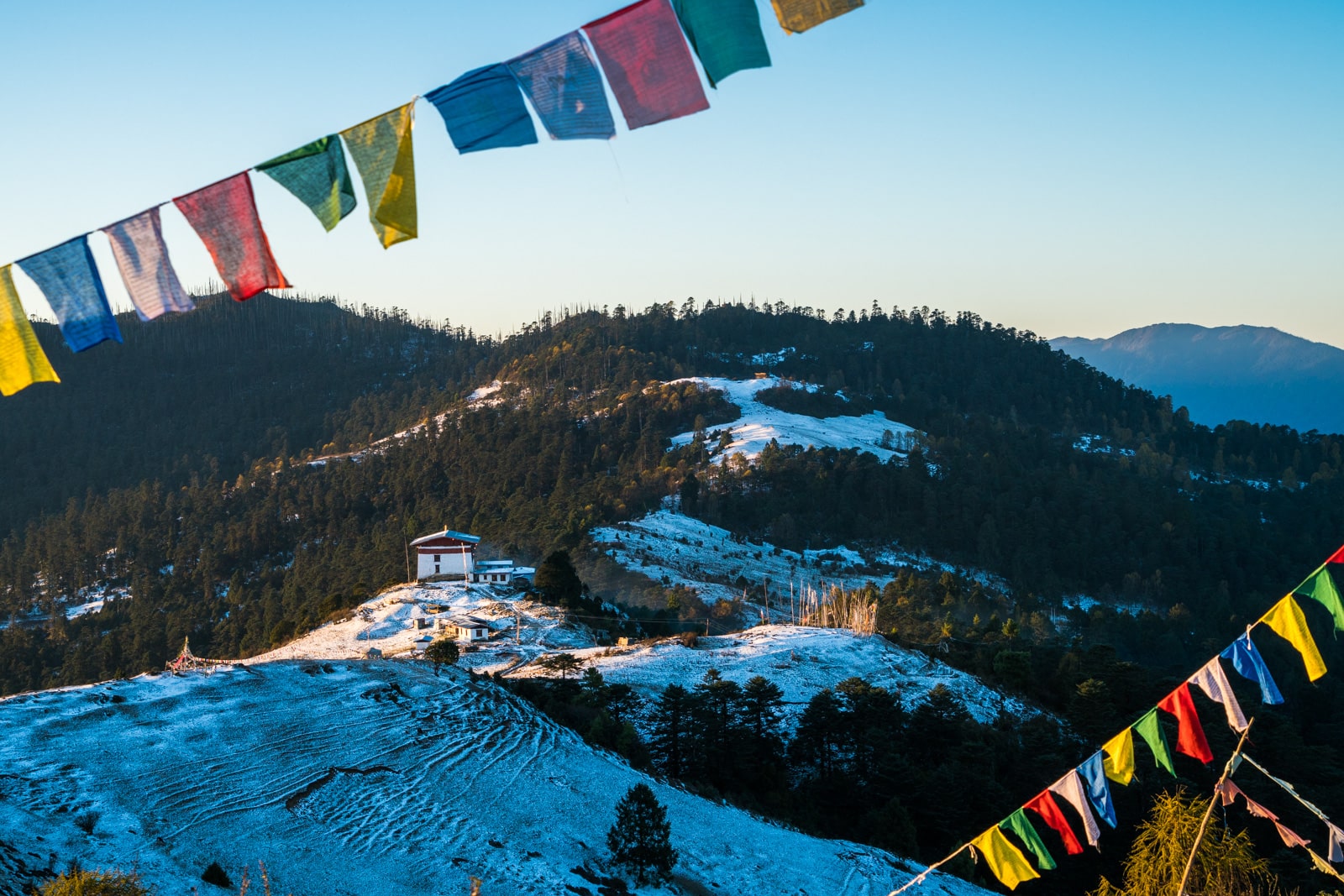
Despite the Druk Path being Bhutan’s most popular trek, there was no one to compete with for views like these.
The vast majority of people I met were are genuine and kind. They wanted to speak with me out of curiosity or interest, not because they’re scheming to sell you something as in more popular tourist destinations. Meeting local people was all too easy when I had a local tour guide by my side for (some of) the day. Even without Karma’s introductions, I still got talking with all kinds of people during my weeks in Bhutan.
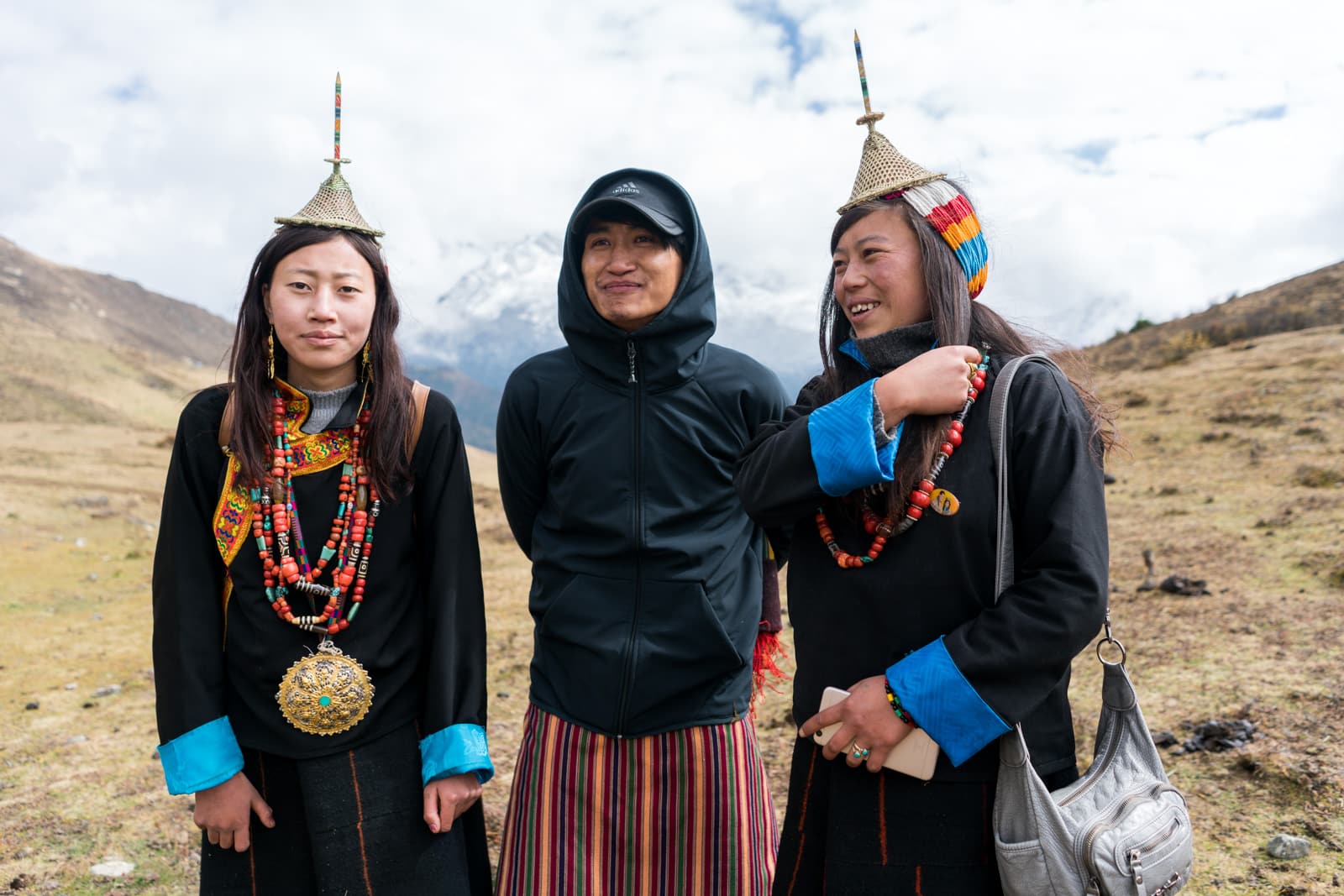
Karma posing for a photo with some local Layap ladies he introduced us to at the Royal Highlander Festival in Laya
The most straightforward reason Bhutan is worth your money, however, is the fact that it’s one of the most beautiful places in the world. In my humble opinion, anyway. Words won’t do that claim justice, so here’s some visual proof instead:
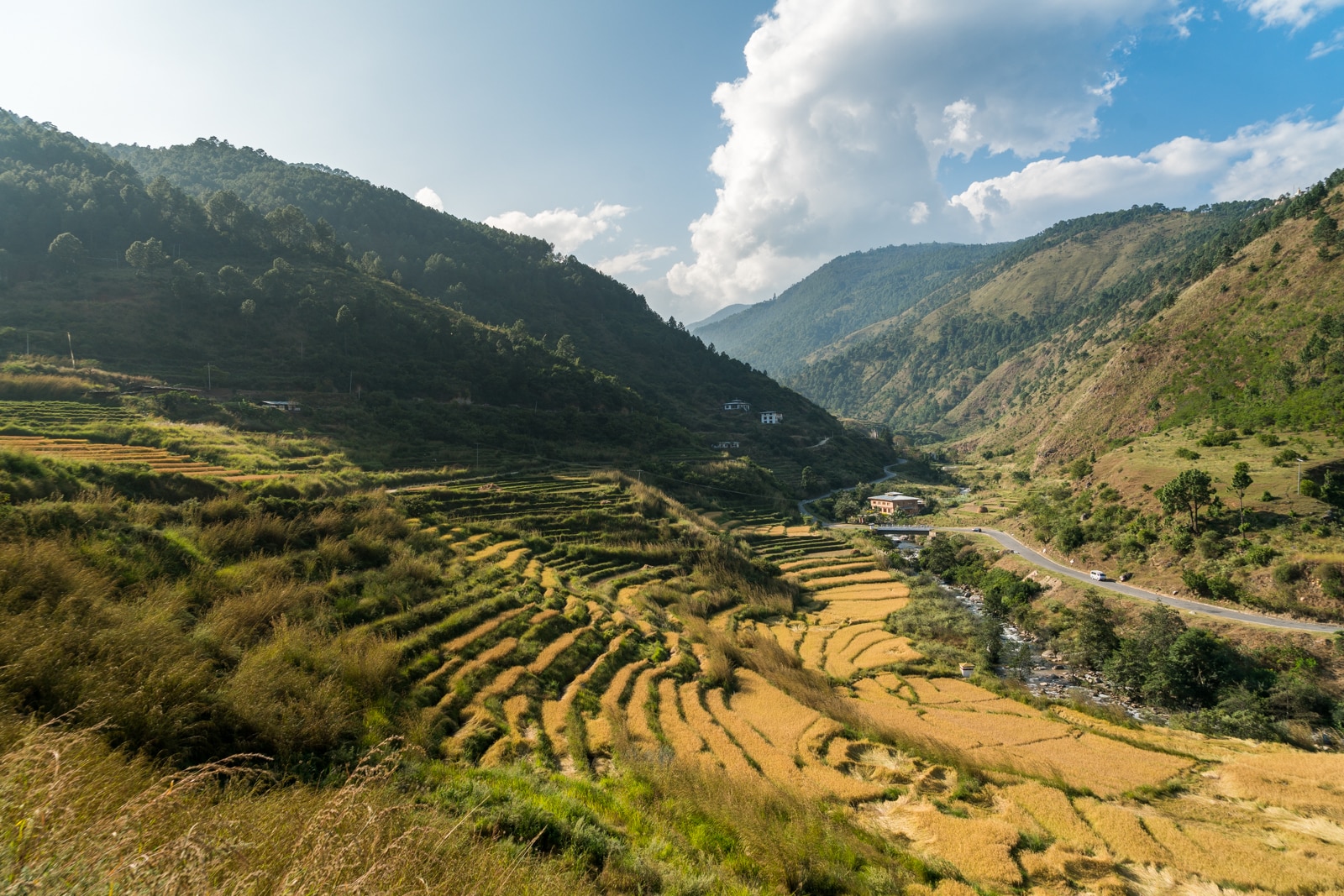
Casual highway-side views, NBD
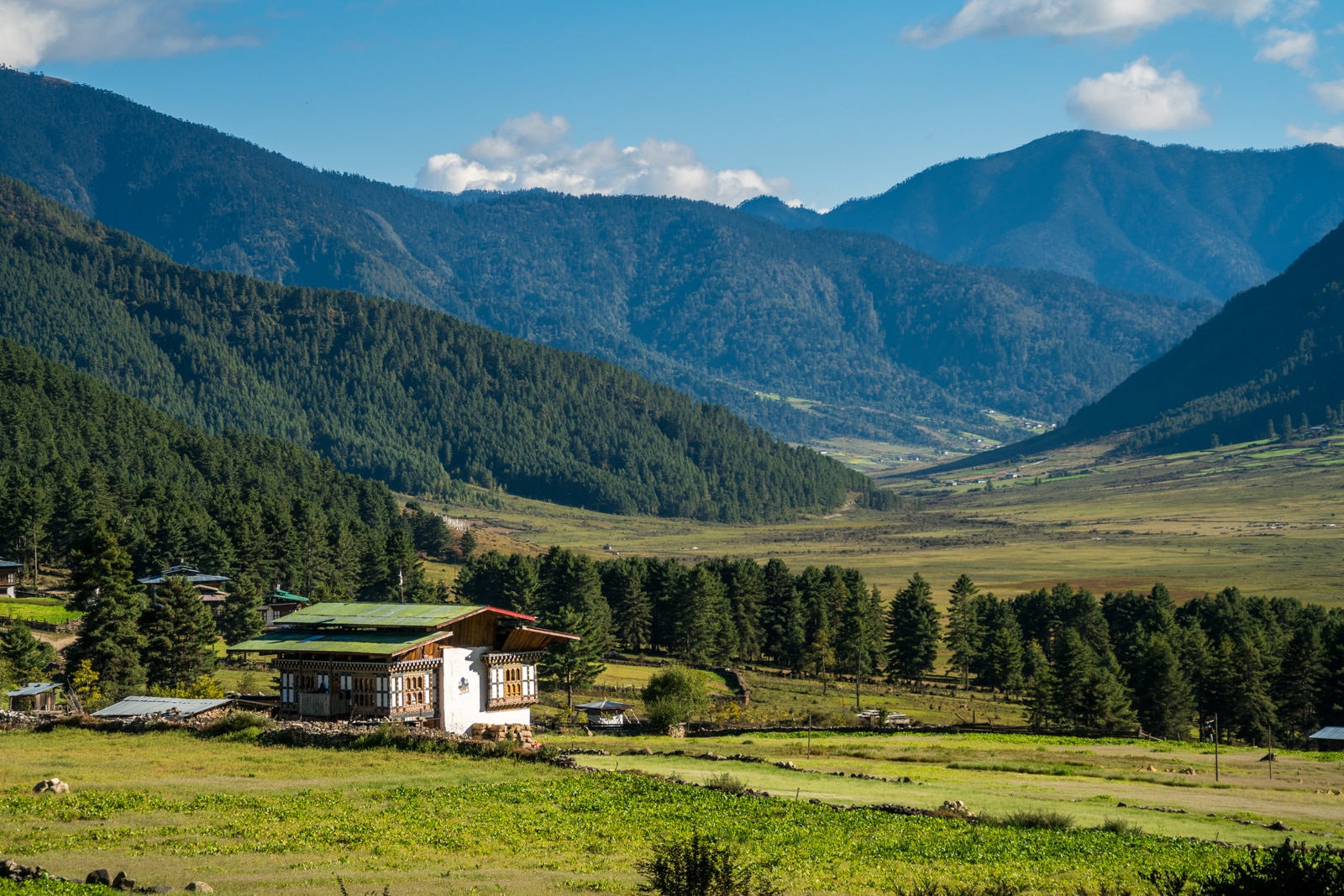
Yet more photogenic houses in the stunning Phobjikha Valley
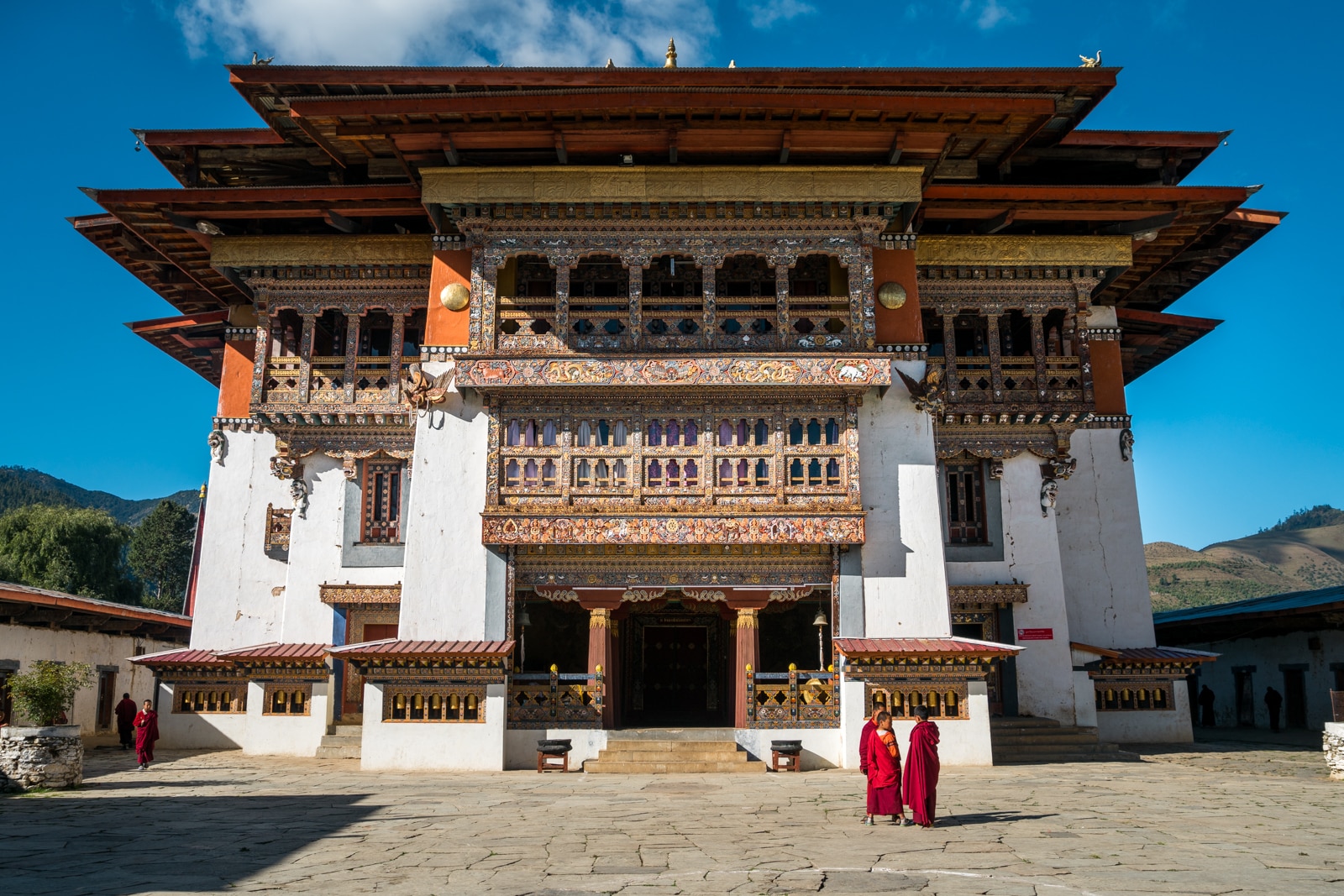
The exterior of Gangtey Monastery, the most impressive religious building I saw in Bhutan
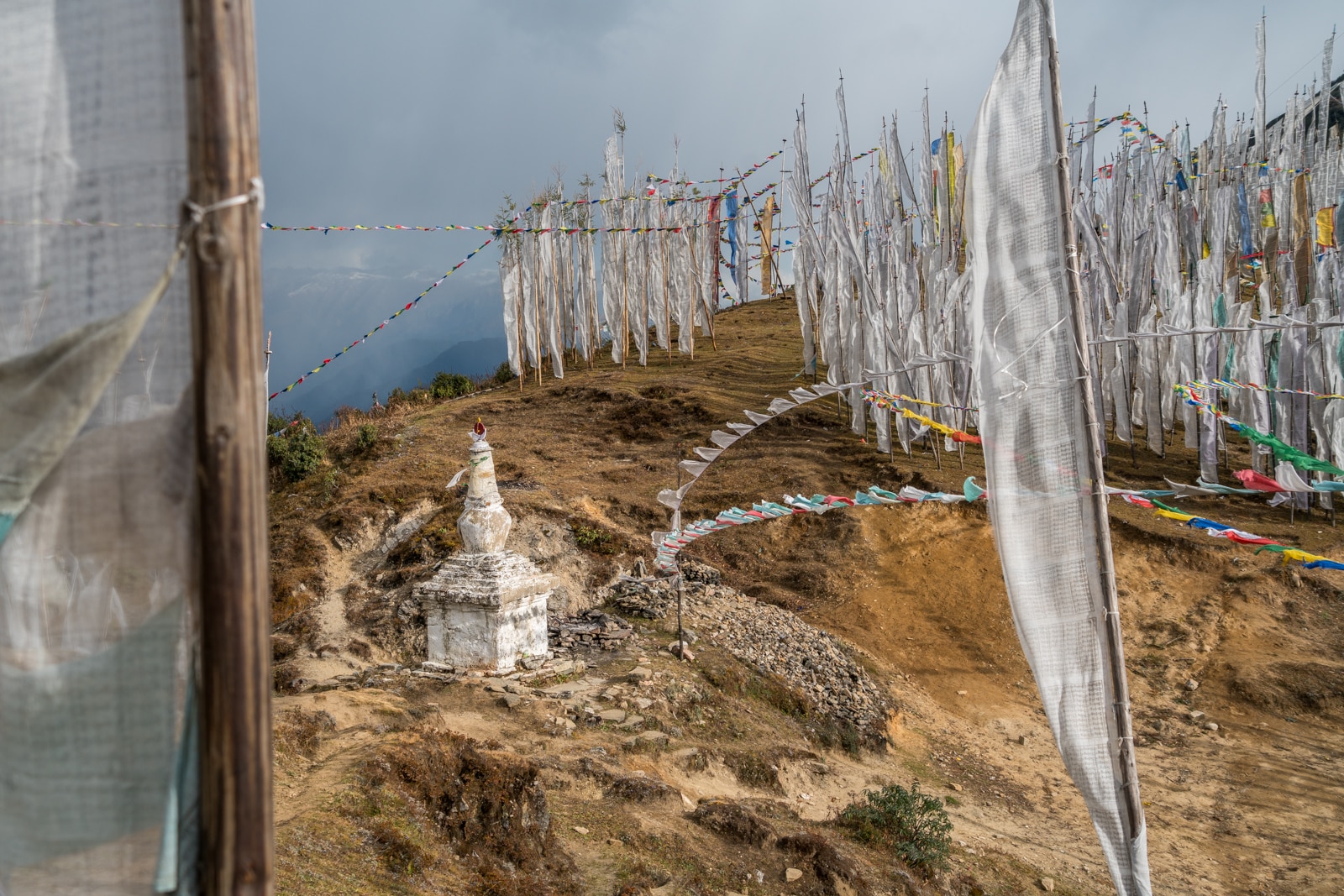
Just a few of the thousands of fluttering prayer flags atop Chele La pass
To travel to Bhutan, or not to travel to Bhutan? That is the question.
Ultimately, I can only convince you so much. Wonderful as Bhutan may be, you either have the money to visit Bhutan, or you don’t. This will decide whether travel to Bhutan is worth $250 per day or not.
If you don’t have the money, don’t fret. Though they’re worlds apart from Bhutan, there are other mountainous countries in this world that are cheaper to visit. Nepal is the crowd favorite, though I’d personally recommend Pakistan .
If, however, you do have the money, I can’t recommend Bhutan enough. It might be a big decision, but I assure you, you won’t regret it. If you are visiting Bhutan, make sure to check out my guide to travel in Bhutan .
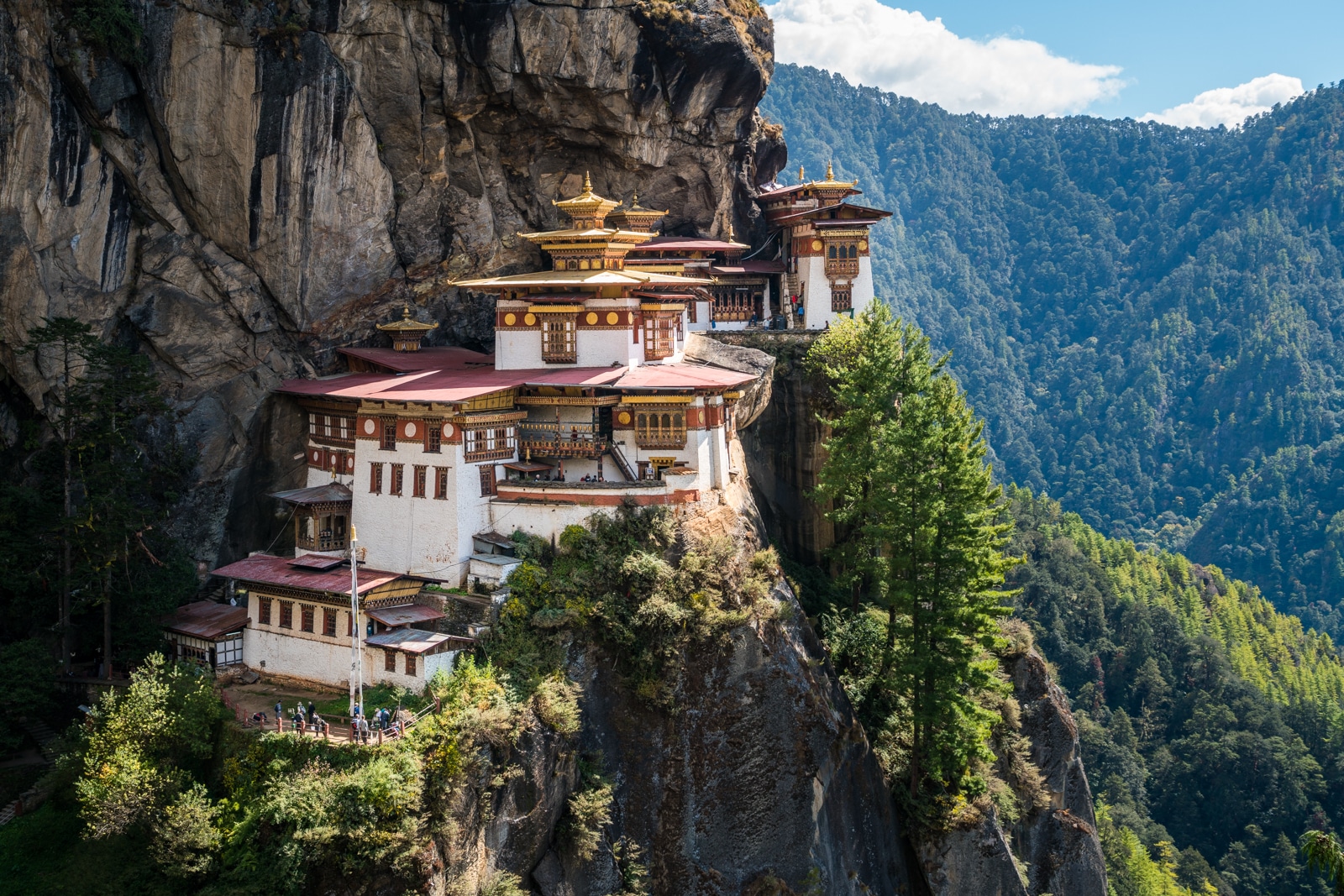
The famous Tiger’s Nest monastery near Paro
Think of it this way: choosing where to travel is like buying groceries. You can buy cheap, imported apples at your nearest supermarket, or you can head to the farmer’s market for some locally grown, organic apples. The supermarket apples may be cheaper, but we all know locally-grown apples at farmer’s markets are the responsible—and often tastier—choice.
Not everyone can afford to shop at a farmer’s market all the time, nor can everyone afford to travel to Bhutan over other destinations. But if you have the means and the motivation, I promise choosing Bhutan will be one of the most golden and delicious decisions you can make.
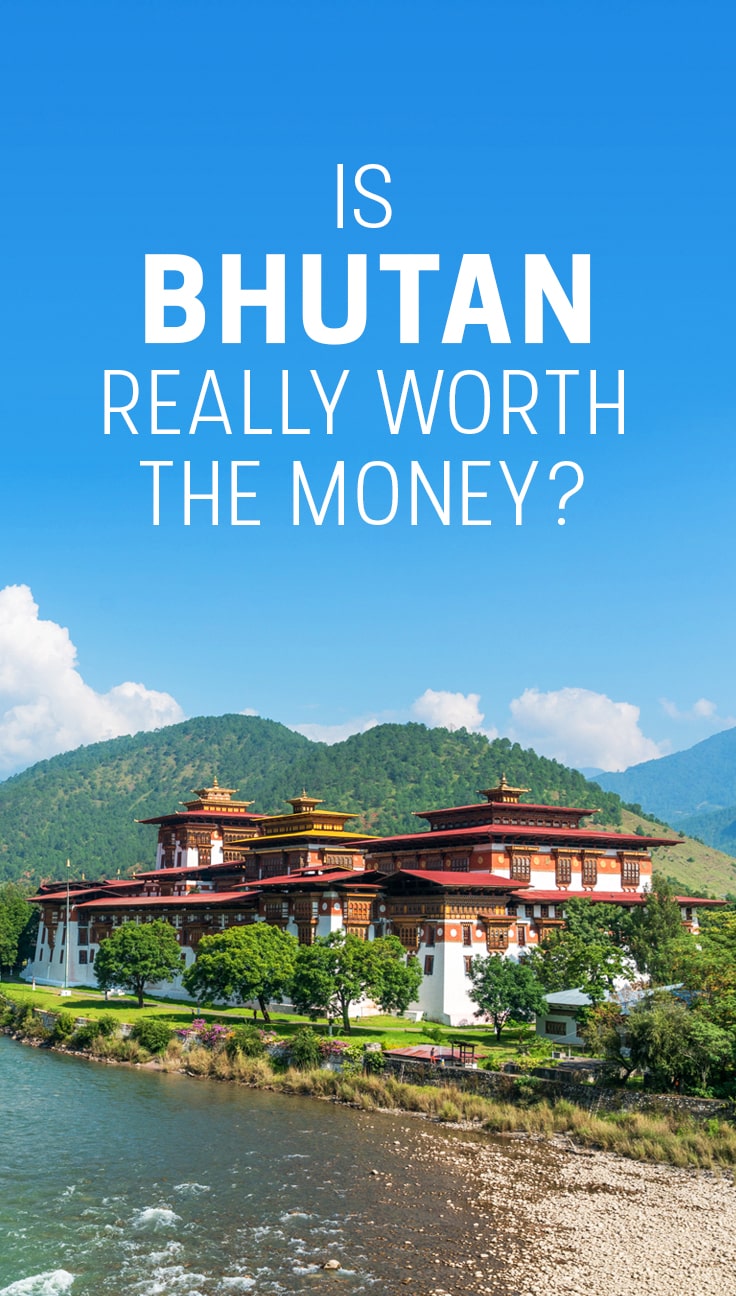
Yay transparency! My trip to Bhutan was sponsored by Gray Langur Tours , but you can rest assured that I scrutinized the crap out of this topic just as I would if I paid my own way, and all these views are most definitely my own.

Alex Reynolds
33 thoughts on “ is bhutan really worth $250 per day ”.
We booked a trip to Bhutan which was cancelled mid-March due to Covid restrictions for entering Bhutan. While we fortunately received our daily trip costs back from the tourism council of Bhutan (TCB), we are still struggling to get our airline ticket refund from the TCB-accredited Bhutan agent with whom we booked our travel. The airline (Druk Air) reimbursed our tickets but sent the funds to our agent. Any tips on how to file a formal complaint against the agent to get our ticket refund?
Oh no, that’s not good! I’m sorry you have to deal that. I’m not actually sure how one would file a formal complaint—can you go through the TCB? I imagine they would want to help, as it doesn’t look good if a travel agency is making things difficult for tourists.
Needgoldbar. Sopping
You really did justice to this topic. I always try my best explaining my friends why Bhutan is expensive but they never get it. Bottom line is we have put in our own share of hardwork in preserving our culture and conserving our nature in today’s chaotic time. Plus we are the only carbon negative country in the world, it’s easy to say but hard to achieve and we have achieved it. In the world where some people can’t even find fresh air to breath Bhutan removes carbon dioxide. All in all if you are visiting Bhutan it’s a must to remember that you are paying for our preserved culture, conserved nature, fresh air, beautiful landscape, unique traditions and many more.
Thank you so much for writing this article, its insightful for people wanting to visit and very much precise with the details on the fee.
Thanks Sheldon! It’s nice to hear positive feedback from locals 🙂 I agree wholeheartedly—you’re paying for the overall experience, which you literally cannot find anywhere else in the world, and the money helps to maintain said experience.
I like hat you guys tewnd to be up too. Such clever work and exposure! Keep up the amazing works guys I’ve dded you guys to blogroll.
Bhutan doesn’t just have strict borders… they’re preforming an ethnic cleansing and have been since the 30’s and maybe even before that. Bhutan is not a Buddhist country, the kingdom is making Bhutan a Buddist country. They are removing people and displacing them in camps in India and Nepal.
The Lhotsampa, one of the three largest ethnic groups, have sought a system of equality under which they would be allocated what they need as an equitable share of Bhutan’s polity and economy. The ruling Drukpa elites perceived the Lhotsampa as a threat to their dominance and initiated policies to oppress or force out the Lhotsampa and others through ethnic cleansing. Bhutan’s ethnic conflict and the refugee crisis it has produced are the outcome of ethnonationalism clothed in the slogan of ‘One Nation, One People’, and the contrived mechanisation of the ruling elites. The policies of these elites have effectively disenfranchised people who were born in Bhutan and have lived there for generations as citizens, for no other reason than their ethnicity. This is an issue not just for the Lhotsampa of Bhutan but also for any groups at the receiving end of an ethnically repressive order. The Lhotsampa case illustrates some characteristics of human‐rights violations in situations of ethnic strife. more than 100,000 Bhutanese people of Nepalese origin who today live in exile, mostly in United Nations High Commission for Refugees (UNHCR)‐administered camps in eastern Nepal. Former UNHCR Chief Sadako Ogata has spoken out about how the vast majority of refugees are driven from their homes by human rights abuses. As she explains, ‘Persecution, torture, killings and the reprehensible practice of “ethnic cleansing” generate a huge flow of refugees’. Her comment well describes the Lhotsampa and other Bhutanese refugees, who from 1990 were driven from their homes by the oppression and persecution of the Bhutanese government.
The unknown refugee crisis: expulsion of the ethnic Lhotsampa from Bhutan. By: Rizal, Dhurba, Asian Ethnicity, 14631369, Jun2004, Vol. 5, Issue 2
Check the source above, Im a student at the University of New Hampshire and stumbled upon this writing a paper. Its legitimate.
The Lhotsampa are not illegal immigrants, they have lived in the land for generations. The monarchy started calling them immigrants as propaganda to make removal easier. The people in those camps are considered stateless because they’ve been removed from their homes. They immigrated hundreds of years ago, and some histories argue longer. After the removal the monarchy changed the names of towns, villages, and roads to Durkpa names, then they offered the land at below-market to members of the other large ethnic group in the country ensuring that if they ever had to let the displaced Lhotsampa people back in(unlikely) they would never have a place in society. I’m convinced the Bhutans tourism industry has a role in all this.
https://journals.sagepub.com/doi/abs/10.1177/0021909605057742
Visiting Bhutan is in my bucket list but I don’t know yet if I can afford it since I will go without partner. Does anyone have any suggestions? Is there an option that I fly there myself and find tour from local businesses? Or go with travel agency from USA? If going with travel agency, which one has the best service?
Hi Terri, I am in the same situation. I have been advised to look into Hate 1 tours. Also a friend in Colorado has a friend in Nepal who may be able arrange things. I’m just looking into this possibility. $200/day now after September 2022. But I have been to Nepal and India and wished I had gone to Bhutan then. My cell is 508-246-1632
Leave a Reply Cancel reply
Your email address will not be published. Required fields are marked *

- Privacy Overview
- Strictly Necessary Cookies
This website uses cookies so that we can provide you with the best user experience possible. Cookie information is stored in your browser and performs functions such as recognising you when you return to our website and helping our team to understand which sections of the website you find most interesting and useful.
Strictly Necessary Cookie should be enabled at all times so that we can save your preferences for cookie settings.
If you disable this cookie, we will not be able to save your preferences. This means that every time you visit this website you will need to enable or disable cookies again.
How to Visit Bhutan: How to Plan a Trip to Bhutan?
Greetings, traveler! Are you planning a trip to Bhutan ? Did you know that Bhutan boasts many crowns? The mysterious Kingdom of the Thunder Dragon, The Pristine Land of Happiness, and of course The Last Shangri-La, remote, seclusive, pristine with its own unique charms. So how to visit Bhutan, the secluded "Last Shangri-La" ?
A trip to Bhutan requires careful planning due to limited entries, unique permits, and mountainous terrain. Planning your trip to Bhutan also uncovers hidden treasures, promotes cultural respect, and reduces environmental impact. Do savor each step of your journey, including planning the trip to Bhutan. Let the anticipation build, and I promise you it will be worth it!
As a local Bhutan-based travel agency, we have curated everything you need to know about visiting Bhutan, including Updated Bhutan Tourism Rules & Visa Policies , Must-visit & Things to Do in Bhutan , and insights known only to Bhutanese locals. Read on to unlock your own Shangri-La.
Content Preview
What Has Changed for Visiting Bhutan: Visa, SDF, Flexibility
When plan a visit to Bhutan the first thing to be considered is the Visa, and of course you might ave heard of Bhutan's SDF. Many has changed since Bhutan reopened to visitors in 2022 and the travel policy shift in 2023. So it's essential to check the latest info. Here are some great news for your Bhutan Visit!
Visas for Visiting Bhutan: Process Simplified
Obtaining a visa to Bhutan has become more streamlined and hassle-free. You can now directly submit your visa applications through authorized tour operators, making the process even smoother. The visa fee is set at $40 per person. Check the how to apply Bhutan Visa .
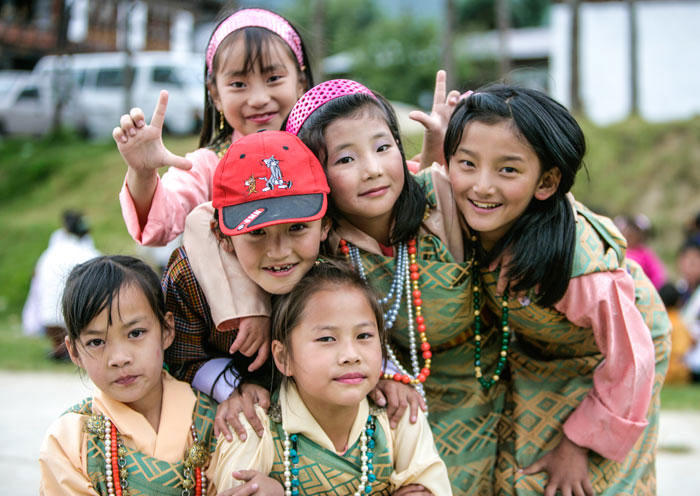
Bhutan's Sustainable Development Fee (SDF): Discounted!
For a visit to Bhutan, the Sustainable Development Fee (SDF) plays a crucial role in preserving the environmental and cultural treasures of this enchanting land. Previously set at $200 per person per night, the SDF has been revised to a discounted rate. Now, adults only have to pay $100 per night to visit Bhutan, while children aged 6-12 are charged $50. By contributing to the SDF, you actively participate in the responsible and sustainable tourism practices that help safeguard the Last Shangri-La. Check out how you can help with Bhutan's SDF Fee to Facilitate Sustainable Tourims & Happiness .
Flexibility for a Trip to Bhutan: More Freedom
When planning your trip to Bhutan, you'll be delighted to find increased flexibility in tour options compared to 2022. This means you'll have more freedom to customize your itinerary for your trip to Bhutan. Whether you're interested in immersive cultural experiences or thrilling treks, you can tailor your journey to match your unique interests and preferences. Here are some Bhutan Itinerary ideas on How to Visit Bhuta.
Infrastructure in Bhutan: Improved
Bhutan is continuously enhancing its infrastructure to provide travelers with a seamless and enjoyable experience when visiting Bhutan. Moreover, if you seek a more luxurious style of travel, Bhutan now offers a range of premium hotels that showcase the unique Bhutanese charms. Here is a Guide on Bhutan Hotels .
In summary the overall cost for visiting Bhutan would be lowered with travel experience enhanced.
What remains unchanged is Bhutan's unwavering commitment to sustainable tourism and delivering exceptional experiences to visitors.
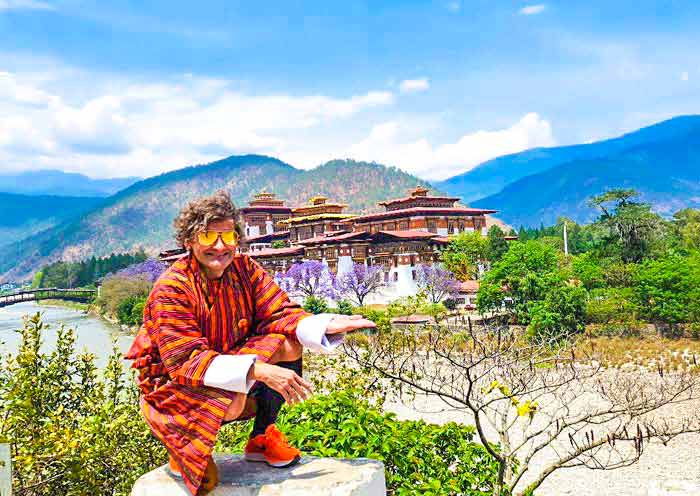
Attractions to Visit During Your Trip to Bhutan
Traveling is not about ticking off attractions, especially when you are about to visit Bhutan. But it's important to have you attraction list when planning a trip to Bhutan so you have a general ideal in mind. Here's preview of Attractions and Best Places to Visit in Bhutan .
Please Note:
- Separate Travel Permit requirements may differ for lesser-known destinations or specialized activities including trekking beyond city limits, so it is important to be aware of specific regulations.
- Guides play a crucial role in providing valuable insights, helping navigate local customs, and ensuring a respectful and meaningful travel experience.
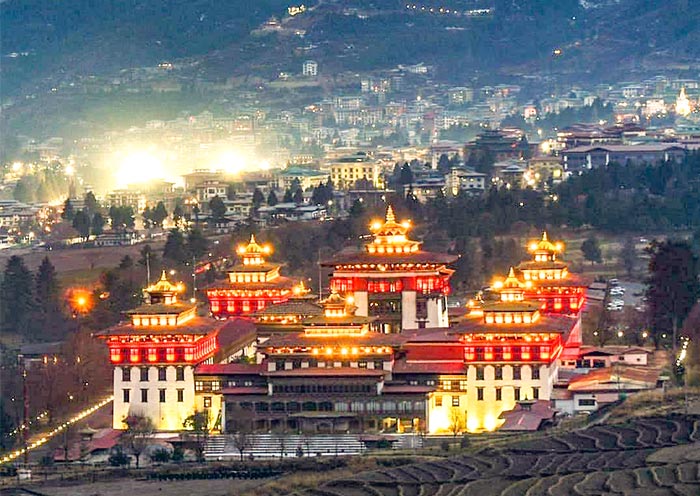
Altitude & Distance of Bhutan Attractions: Not Too Much to Worry About
Experience the wonders of Bhutan at various altitudes, with many captivating attractions nestled at mid-range elevations. For instance, the picturesque valley of Punakha sits at 1,250m (or 4,101 feet), while Bumthang's cultural hub is located at 2,600m (or 8,530 feet). Paro, known as the Himalayan gateway, lies at 2,250m (or 7,382 feet), offering an ideal starting point for acclimatization before embarking on higher treks. The stunning Phobjikha Valley, situated at 3,000m (or 9,843 feet), and the adventurous Haa Valley, found at 2,700m (or 8,858 feet), beckon thrill-seekers. Here's your list of Top Bhutan Valleys .
Note: If you plan to visit attractions situated above 3,000m, it is important to make necessary preparations to combat altitude sickness. Check the full guide on Bhutan Altitude & Bhutan Distance .
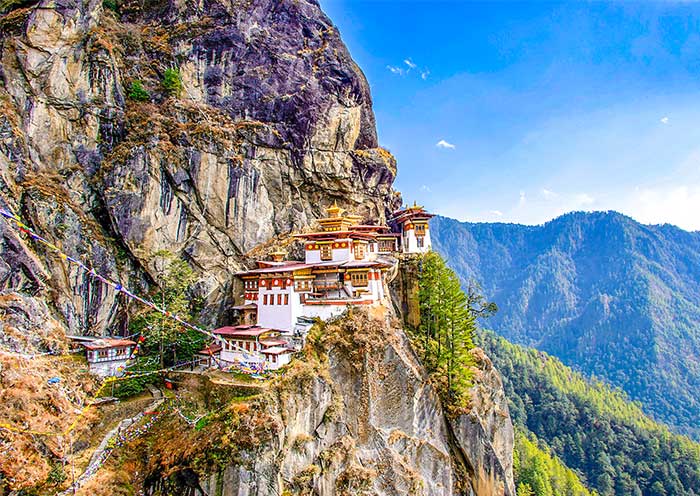
Things to Do During Your Trip to Bhutan
To fully unlock Bhutan's secrets, a well-planned trip is essential. It's not just about knowing what to see, but also about selecting the type of adventure that speaks to you: be it trekking amidst breathtaking landscapes, immersing yourself in the vibrant culture, or taking a spiritual journey of self-discovery. Let's check out the things to do on your trip to Bhutan.
Adventure in Bhutan: Trails & Thrills in Land of Pristine
- Trekking in Bhutan: Bhutan's trails provide a range of trekking experiences, from gentle hikes through rhododendron forests to more demanding climbs such as the Jomolhari Base Camp.
- Whitewater Rafting: Brace yourself for an adrenaline-pumping experience as you navigate the roaring Punatsangchhu River.
- Rock Climbing: Challenge yourself by scaling the cliffs and boulders of the Himalayas.
Cultural Immersion During Your Trip to Bhutan: Walk into Living History
- Explore the Dzongs: These fortress monasteries stand as powerful symbols of Bhutanese heritage, offering a glimpse into the country's rich history and culture. Here's guide on Best Dzongs to Visit in Bhutan .
- Participate in Festivals: Immerse yourself in the vibrant tapestry of Bhutanese festivals, where you can witness a spectacle of colors, music, and dance that celebrate the country's traditions and spirituality. Here's your guide on Festivals .
- Connect with the Locals: Engage with the welcoming Bhutanese people, delve into their customs, and embrace their warm hospitality through interactions in villages or by staying in homestays.
- Discover Meditation and Mindfulness: Seek inner peace and cultivate a spiritual connection by practicing meditation and mindfulness in serene monasteries or tranquil settings.
Admire Biodiversity While Visiting Bhutan: Birdies, Red Pandas, Flora & Fauna
- Explore the Phobjikha Valley: Experience the awe-inspiring sight of Bhutan's national bird, the graceful black-necked crane.
- Indulge in Birdwatching: Embark on a Bird Watching adventure in the Himalayas, where you can marvel at the diverse array of avian species.
Embrace the Unspoiled Nature: Discover Sustainable Lifestyle in Sacred Temples & Mountains
Birding at Phobjikha Valley: 8 Days Bhutan Tour with Phobjikha Valley (Nature & Birding)
Embrace Majesty of Jomolhari: 11 Days Bhutan Jomolhari Trek Tour

Expand Your Horizon of Spiritual Life: An Inner-peace Trip in Bhutan
- Partake in rituals and ceremonies: Engage in chanting sessions and immerse yourself in the serene atmosphere of monastic life.
- Engage in meditation in sacred spaces: Discover inner peace as you meditate in centuries-old monasteries such as Taktsang or Jakar Dzong.
- Receive guidance from spiritual masters: Connect with experienced monks or nuns who can provide profound insights into Buddhist philosophy and offer guidance on meditation practices.
- Embark on a pilgrimage: Join a traditional Bhutanese pilgrimage, where you can journey through mountain passes and visit sacred sites, deepening your spiritual connection.
Other Activities During Your Bhutan Trip: Endless Possibilities
- Shop Different: Explore markets and artisan workshops to discover one-of-a-kind souvenirs, including handwoven textiles, thangkas (religious paintings), and local handicrafts.
- Archery Experience: Immerse yourself in Bhutan's national sport by trying your hand at archery.
- Culinary Adventure: Enroll in a cooking class and delve into the realm of Bhutanese cuisine.
Check the full guide on Things to Do in Bhutan .
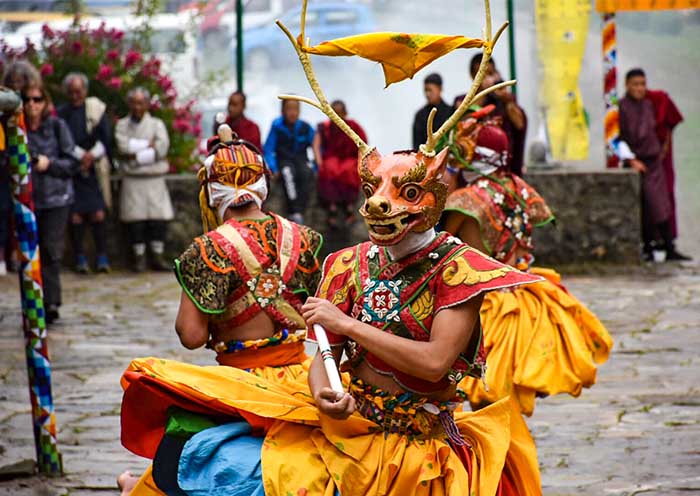
Where to Stay in Bhutan: Budget, Premium & Home-stay
Whether you seek a cozy stay or an indulgent luxury experience, you'll find suitable accommodations in the form of Bhutan Hotels, resorts or home-stay.
In recent years, renowned international hotel chains such as Aman, Taj, COMO, and Dusit have established their presence in Bhutan, providing luxury and deluxe hotels and resorts in different towns and countryside locations. These exceptional establishments not only meet international standards of comfort and luxury but also seamlessly integrate Bhutanese art, culture, and tradition into their design and offerings. And of course if you are seeking culture immersion a option of Bhutan home-stay is always on the table.
The price? You can find budget accommodations starting from around $30 to $40 per night, as well as private lodges that provide tailored services at prices that can go up to $2,000 and more, the choice is yours. Check out our Bhutan Hotels Guide.
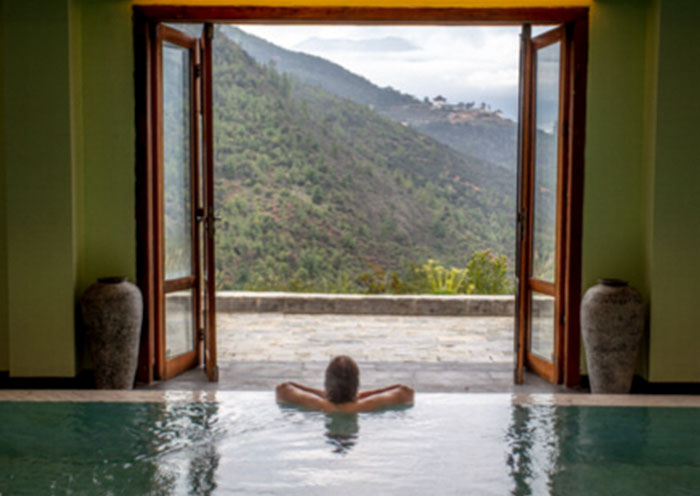
How Much does a Trip to Bhutan Cost now?
Determining the precise Travel Cost per day for a trip to Bhutan can be challenging due to x-factors of your Bhutan travel plan. In short, a minimum spending of $250 per person per day is expected. Here is a breakdown to help you gain a clearer picture:
Mandatory Costs for Visiting Bhutan: Minimize Your Impact
- Sustainable Development Fee (SDF): As of January 2024, the SDF Fee is discounted to $100 per day for adults, $50 for children aged 6-12, free for children under 6. This fee contributes to the preservation of Bhutan's environment and culture.
- Visa Fees: Visa fees vary depending on your nationality, typically amounting to approximately $40 per person.
- Travel Insurance: It is mandatory to have travel insurance, which can cost around $50 to $100 per person.
Variable Costs of Your trip to Bhutan: Add Value to Your Journey
- Flights: International flights to Bhutan can be costly, ranging from $500 to $1500 or more depending on your origin, airline, and season.
- Entrance Fee & Tips: Some Attractions in Bhutan would require a small amount of entrance fee ranging from $10-$20. Tipping your tour guide and driver is customary in Bhutan tourism, tipping your guide and driver in total shall take no more than $20 per day.
- Personal Expenses: Additional expenses such as souvenirs, shopping, and gratuities can vary significantly based on your preferences.
Estimates: Cost of a Trip to Bhutan
Note: In most cases, pre-booked tour packages through a licensed Bhutanese operator can be more cost-effective than booking everything separately.
4 Days Highlights Bhutan Group Tour: Paro & Thimphu - Happiness is a Place Hike
5 Days Western Bhutan Tour with Haa Valley
6 Days Bhutan Group Tour: Paro, Thimphu & Punakha (Western Golden Triangle)
Best Time to Visit Bhutan: Spring, Autumn & Winter
Timing is also essential when planing your trip to Bhutan. The best times to visit Bhutan are during the autumn months of September to November and the spring months of March to May. Best Time to Visit Bhutan
However, Bhutan's winter also offers distinct charms. If you're planning a new year holiday escape, do consider visiting Bhutan in Winter . Bhutan's weather offers a distinct four season charm while the weather itself is never extreme, well, maybe the rain and mist of monsoon season can be a little overwhelming for some. So check the Bhutan Weather By Month to find out your favorite time to Visit Bhutan.
Plan a Trip to Bhutan to Catch Enchanting Festivals
Planning your Bhutan trip around a Bhutan Festival unlocks a treasure trove of experiences! From unforgettable memories to a deeper understanding of Bhutanese life, festivals add a magical layer to your trip to Bhutan!
7 Days Punakha Festival Tour Bhutan ( Drubchen & Tshechu Feb. 17-21, 2024)
7 Days Thimphu Tshechu Festival of Bhutan Bhutan (Sep. 13-15, 2024)
7 Days Paro Tshechu Festival Tour of Bhutan (March 21-25, 2024)
Things to Consider When Planing a Trip to Bhutan to Catch Bhutanese Festival Events
- Plan wisely: Conduct research to compare popular and smaller gatherings, align your interests with masked dances or local traditions, and plan ahead for peak events.
- Consider logistics: Anticipate higher prices and a restricted range of options, so it's advisable to book accommodation and travel well in advance.
- Embrace the experience: Prepare for crowds, dress modestly, and embrace the dynamic atmosphere. Remain flexible and go with the flow. Enhance your festival adventure by combining it with other Bhutanese activities for a truly enriching trip.
- Lock the Date: Bhutan's Festival Celebrations are held according their own calender. So the exact date may vary on Georgian Calender each year. Check the Updated Bhutan Festivals Guide 2024 or simply contact us to map out your Bhutan Travel Plan.
Contact Us to Start Your Journey to Happiness
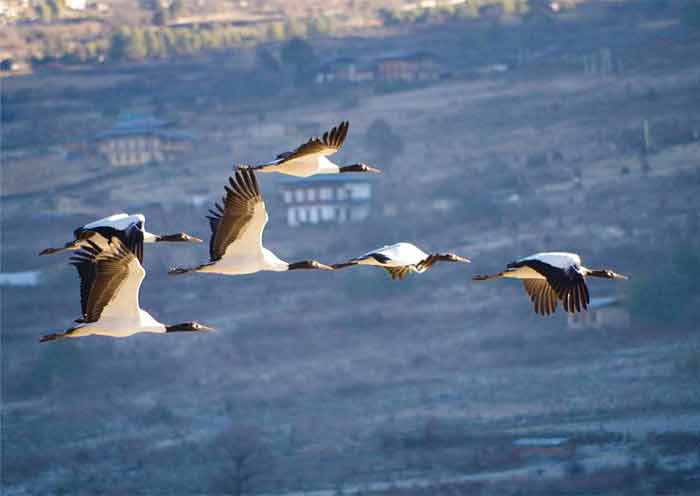
How long should I spend in Bhutan?
When plan a trip to Bhutan you just have to allocate at least 4 days to embrace the charms of Bhutan. Honeymooning in Bhutan? How about 1 week for a sweet and intimate romantic getaway? If you are going to challenge the iconic Trekking trails in Bhutan, more time would be needed as these treks require more time to complete. Here are a general picture of the time-frames typically needed for different types of Bhutan Itineraries .
Classic Trip to Bhutan 4-6 Days: First-timers' Choice Visiting Bhutan
Focus on popular sights like Paro Dzong, Tiger's Nest, Punakha Valley, and Thimphu's cultural hotspots. Experience local markets, monasteries, and soak in the breathtaking scenery. Ideas for Bhutan 4-Day Itinerary >>
Full Culture Immersion Trip to Bhutan 5-7 days: Reach for Happiness in Bhutan
Dive deeper into Bhutanese life. Attend a festival, participate in workshops like archery or mask making, visit remote villages, and learn about local traditions and customs. Ideas for Bhutan 5-Day Itinerary >>
Eco Trip to Bhutan, 4-10 days: Sustainable Practice in Carbon-negative Land with 70% Forrest Coverage
Focus on sustainable travel. Hike through protected areas like Jigme Dorji National Park, volunteer with conservation projects, visit eco-friendly communities, and enjoy Bhutan's natural beauty responsibly. Ideas for Bhutan 7-Day Itinerary >>
Trekking Trip to Bhutan, 3-20 Days: Light or Challenging, Trails for All
Short Trails (3-5 days): Explore serene valleys like Bumthang or Phobjikha, climb Chomolhari base camp for stunning views, or trek through rhododendron forests with moderate terrain.
Long Iconic Trails (8-20 days): Challenge yourself with the Druk Path Trek, conquer the Jomolhari Laya trek, or experience the Snowman Trek , considered one of the world's toughest . Ideas for Bhutan 8-Day Itinerary >>
7 Days Bhutan Wedding & Honeymoon Tour: Love & Happiness
8 Days Ideal Bhutan Tour: Slow-paced & In-depth Travel
11 Days Bhutan Tour: Unveiling the Secret of Happiness
Spiritual Trip to Bhutan, 5-12 Days: Detox, Reconnect & Heal
Short Meditations (5-7 days): Immerse yourself in guided meditation practices at monasteries or dedicated retreat centers. How to Plan Bhutan Itinerary for 6 Days
Deep Dives (8-12 days): Seek guidance from spiritual masters, participate in workshops on Buddhist philosophy, attend festivals or follow pilgrimage routes. Bhutan 8-Day Itinerary: How to Plan 8 Days in Bhutan
Honeymoon Trip to Bhutan, 7-10 days: Happiness Ever-after Begins in Land of Happiness
Combine romance with adventure. Hike hand-in-hand through scenic valleys, enjoy luxurious stays in dzong-inspired resorts and hotels, and embrace Bhutan's peaceful atmosphere. Bhutan 7-Day Itinerary: How to Plan 7 Days in Bhutan .
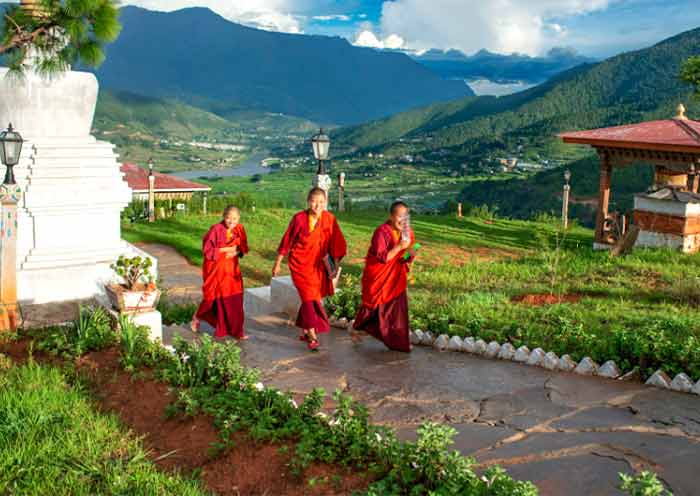
How to get to Bhutan?
When planning a trip to Bhutan, you can reach the Land of the Thunder Dragon by taking exciting aerial journeys through the Himalayas. Here's a breakdown of your flight options:
Direct Flights: Straightforward Way to Visit Bhutan
Drukair, Bhutan's national carrier, operates direct flights to Paro Airport (Bhutan's only international airport) from select regional hubs: Bangkok, Kathmandu, Delhi, Kolkata, Dhaka, Singapore. Other airlines like Biman Bangladesh Airlines and Thai Airways offer occasional direct flights from specific cities like Dhaka and Bangkok. Flights to Bhutan .
Indirect Flights: Budget-friendly Way to Visit Bhutan
Many popular international airlines like Emirates, Qatar Airways, Etihad Airways, and Drukair offer convenient connections via regional hubs like Bangkok, Kathmandu, Delhi, or Singapore. Consider multi-city flights or open-jaw tickets, flying into one hub and departing from another, for optimal routing and flexibility.
Important Notes:
Flight options and routes vary depending on your origin and preferred airlines. Drukair flights tend to be expensive but offer a unique experience onboard a Bhutanese airline. Booking flights well in advance, especially during peak season, is crucial to secure availability and best prices. Check other Flight Options: from Nepal , from Singapore , from Bangkok , from USA , from India .
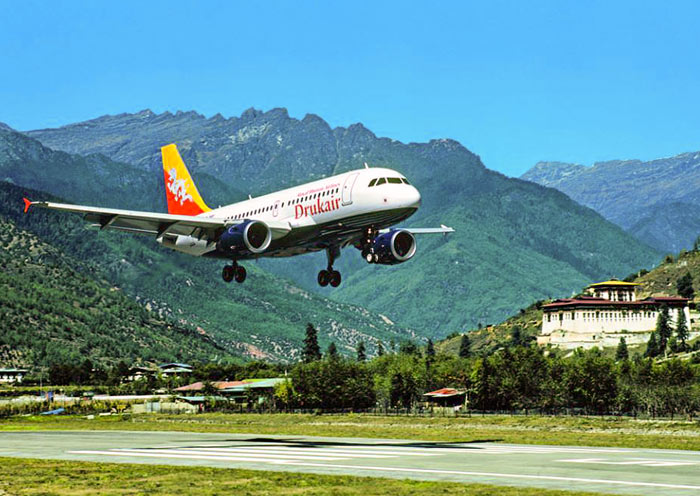
Can You Visit Bhutan Without a Guide?
Visiting Bhutan without a guide is technically possible under specific circumstances, but it is generally not recommended and, in some cases, not allowed . Here is a breakdown of the situation:
Limited Areas for Independent Travel: You would Miss Out a Lot without a Guide
Independent travel without a guide or pre-booked tour package is permitted only in Paro and Thimphu.
But for Visiting Religious sites and Bhutan's Iconic Dzongs within Paro and Thimphu you still have to be accompanied by Licensed guide according to regulations.
Restrictions and Requirements: Travel with Care in Bhutan
Beyond Paro and Thimphu, a licensed Bhutanese guide and driver are mandatory under Bhutan's sustainable tourism policy. This policy ensures responsible travel, cultural sensitivity, and visitor safety. If would you like to do a deeper research on your own here a full breakdown of Bhutan Travel Restrictions: Bhutan Travel Rules .
Challenges of Independent Travel: Why Not Visit Bhutan with Local Help
- Navigating Bhutanese culture, language, and logistics can be challenging, especially outside major cities.
- Finding transportation and Bhutan Hotels may be more difficult and expensive compared to pre-booked packages.
- There are no traffic lights in Bhutan, so it really makes sense to hire a driver instead of driving on your own. Unless you would like to try your luck reading the gestures of Bhutan's traffic police officer.
- You might miss out on cultural insights and hidden treasures that a knowledgeable guide can provide.
Benefits of a Tour Group with Local Guide: Better Price, Deeper Insights & More
- A guide offers invaluable knowledge about Bhutan's history, culture, and traditions, enhancing your overall experience.
- They take care of logistics, including permits, transportation, and bookings, saving you time and hassle.
- They ensure responsible travel practices and cultural sensitivity throughout your trip.
- The recommended option when visiting Bhutan is to choose a pre-booked tour package, as it provides significant cost savings, convenience, and valuable cultural insights.
Travel with AOT, Your Journey to Happiness Starts Here
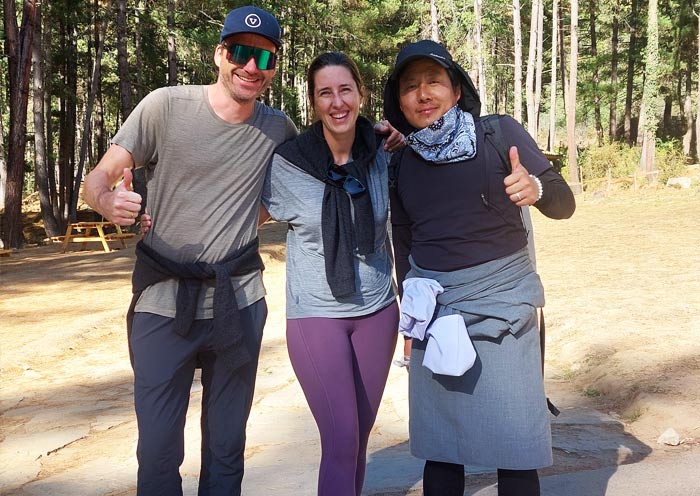
Asia Odyssey Travel is a local-based travel agency that offers Bhutan Group Tours and customized tours in Bhutan. Our team of experienced local guides ensures that you have an immersive and insightful journey, sharing our deep understanding of Bhutanese culture, history, and spirituality.
We are well-acquainted with Bhutan's hidden gems, including its wildlife havens, serene trails, and eco-lodges. Allow us to assist you in crafting your dream itinerary, tailored to your preferences. Picture birdwatching mornings, immersions in vibrant festivals, and the whispers of the valleys. We are equipped to handle permits, logistics, and the Sustainable Development Fee (SDF), leaving you free to unwind, breathe, and be captivated by the wonders of Bhutan .
With AOT's experienced Bhutan Local Team and our professional travel consultant team , we offer comprehensive services as your outstanding travel agency. Moreover, we act as a reliable travel companion on your journey to inner peace and happiness . Plan your lifetime Bhutan journey with AOT. Contact us now, let's embrace happiness in Bhutan together!
If you have any questions about this article, please contact us by submitting the following form and we'll immediately get back to you.
Ask Us for More Information
Related Travel Articles
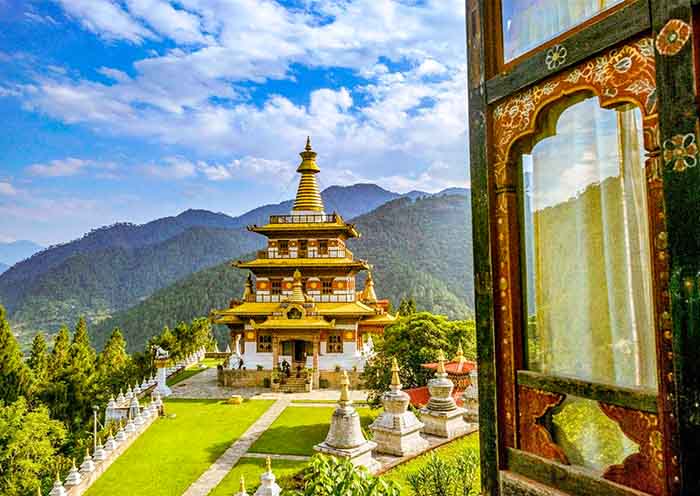
Recommended Related Trips
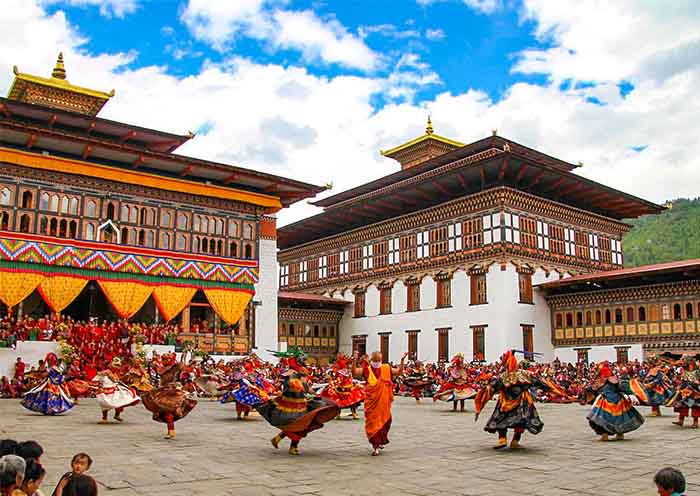
Bhutan’s Reopening at Long Last May Be Spoiled by Higher Tourist Fee
Peden Doma Bhutia , Skift
June 30th, 2022 at 6:30 AM EDT
You know travel is back when even the most-cautious country announces a no-quarantine reopening, even if it is three months down the line in September. But not before making it amply clear it wants to concentrate on quality tourists, rather than attracting droves to the destination.
Peden Doma Bhutia
Bhutan will finally reopen its borders without quarantine to tourists from September 23. However, foreign tourists coming into the landlocked South Asian country will now have to shell out a hiked sustainable development fee — $200 per person per night, compared to the earlier $65.
The fee hike would go towards offsetting the carbon footprint of tourists and upskilling workers in the sector, a government statement read. The $65 sustainable development fee had been introduced in 1991.
The 300 percent fee hike is a clear reflection of Bhutan’s bid to attract high-value and low-volume tourism, but tour operators share mixed sentiments as many feel it would make the destination less competitive, said a Bhutanese tour operator on conditions of anonymity.
“Even before the reopening was announced, we had received bookings from three European groups, but now, after the fee hike, we are not too sure if these groups would still go ahead,” the tour operator said.
With the reopening, the destination will be looking to focus on three areas — infrastructure and services, the travel experiences of tourists, and the sector’s environmental impact.
With the hike in the sustainable fee, Bhutan has lifted the minimum daily package rate for foreign tourists, which had been fixed at $250 per person per day in the high season, and $200 in the low season.
All foreign tourists in Bhutan, with the exception of Indians, Bangladeshis, and Maldivians had been required to pay a minimum amount that they would spend in a day, which covered accommodation, food, services of a tourist guide, transport, entry fees and the sustainable fee.
In 2019, a total of 72,199 minimum daily package rate-paying tourists visited Bhutan, generating a total gross receipt of $88.63 million.
Even as the government has done away with the minimum daily package rate, tourists are now required to pay a sustainable development fee which is almost equal to the amount they would be spending in a day, said a hotel owner, who refused to be named.
“However, this would also mean that the ones who do manage to come will be those with deeper pockets and would be more willing to spend,” he promptly added
No More Free Entry for Indians
The sustainable development fee would now also be applicable for Indian tourists, who had so far been granted free entry into the country. “Indian tourists will pay a previously stipulated fee, which will be revised at a later date,” said a communique from the Tourism Council of Bhutan.
According to a 2020 communication, the previously stipulated sustainable development fee for Indians was $16, less than 10 percent of what other overseas visitors pay. In 2019, of the 316,000 tourists that Bhutan received, 73 percent were from India.
While the decision to hike the sustainable development fee and the introduction of a fee for Indian tourists had been made in 2020, but it had yet to be implemented.
Bhutan did allow foreign tourists to visit the destination in due course, but a two-week quarantine for vaccinated tourists and three-week quarantine for those not vaccinated had put a damper on travel ambitions.
From April 25 onwards, Bhutan cut the quarantine time for fully vaccinated to five days and 10 days for the unvaccinated through air. However, land transfers were still banned.
The India Angle
Bhutan’s decision to prohibit movement of tourists by land also had an adverse impact on tourism in the Indian town of Jaigaon , with whom the Himalayan kingdom shares a border, as business in the border town came to a standstill.
Tour operators in India had been promoting Bhutan and Dooars — the floodplains in eastern-northeastern India, south of the outer foothills of the Himalayas — together as a tourism product.
As Indian vehicles were allowed to ply in Bhutan, tour operators from eastern Dooars operated land tours to Bhutan.
The Bhutan tours formed a large chunk of these itineraries with an overnight stay at Dooars thrown in, but with the closure of the Bhutan-India land border, the drivers and vehicle owners have been without business, said Samrat Sanyal, the general secretary of Himalayan Hospitality and Tourism Development Network.
“With the reopening of borders there is some hope of business revival in Jaigaon, but it remains to be seen if the sustainable development fee for Indians will have a bearing on travel plans even though we had been getting queries for Bhutan for the Indian festive season (around September-October) as well as for 2023,” Sanyal said.
Skift India Report
The Skift India Report is your go-to newsletter for all news related to travel, tourism, airlines, and hospitality in India.
Have a confidential tip for Skift? Get in touch
Tags: asia monthly , bhutan , climate change , destination marketing , fees , india outbound , sustainability
Photo credit: Bhutan is all set to reopen to tourists on September 23. suketdedhia / pixabay
How Bhutan aims to balance economy and environment through tourism

Bhutan is already 72% carbon negative, meaning it absorbs more carbon dioxide from the atmosphere than it produces. Image: Pexels/Soonam Wooeser
.chakra .wef-1c7l3mo{-webkit-transition:all 0.15s ease-out;transition:all 0.15s ease-out;cursor:pointer;-webkit-text-decoration:none;text-decoration:none;outline:none;color:inherit;}.chakra .wef-1c7l3mo:hover,.chakra .wef-1c7l3mo[data-hover]{-webkit-text-decoration:underline;text-decoration:underline;}.chakra .wef-1c7l3mo:focus,.chakra .wef-1c7l3mo[data-focus]{box-shadow:0 0 0 3px rgba(168,203,251,0.5);} Roli Srivastava

.chakra .wef-9dduvl{margin-top:16px;margin-bottom:16px;line-height:1.388;font-size:1.25rem;}@media screen and (min-width:56.5rem){.chakra .wef-9dduvl{font-size:1.125rem;}} Explore and monitor how .chakra .wef-15eoq1r{margin-top:16px;margin-bottom:16px;line-height:1.388;font-size:1.25rem;color:#F7DB5E;}@media screen and (min-width:56.5rem){.chakra .wef-15eoq1r{font-size:1.125rem;}} Travel and Tourism is affecting economies, industries and global issues

.chakra .wef-1nk5u5d{margin-top:16px;margin-bottom:16px;line-height:1.388;color:#2846F8;font-size:1.25rem;}@media screen and (min-width:56.5rem){.chakra .wef-1nk5u5d{font-size:1.125rem;}} Get involved with our crowdsourced digital platform to deliver impact at scale
Stay up to date:, travel and tourism.
- Bhutan, a tiny Himalayan kingdom known for its pristine environment and sustainable development, will cap tourist numbers at 200,000 a year from 2023 to protect its natural resources and fight climate change.
- The move is part of the country's efforts to become carbon neutral by 2025.
- Bhutan is already 72% carbon negative, meaning it absorbs more carbon dioxide from the atmosphere than it produces.
- The government said the cap would be enforced through a quota system, with each tourist paying a daily fee of $250. The money will be used to fund conservation and development projects.
In the scenic Himalayan kingdom of Bhutan, cleaning squads patrol forests and mountain trails on the lookout for litter left behind by tourists, removing empty water bottles and crisp packets stuck in bushes and trees.
The money to run these teams comes from a tourist tax Bhutan has levied for decades to avoid over-tourism and preserve its status as South Asia’s only carbon-negative country - meaning it absorbs more emissions than it produces annually.
Bhutan halved the daily “Sustainable Development Fee” (SDF) - to $100 - last week as it strives to strike a balance between supporting the local economy and jobs, and protecting nature and the environment in the face of worsening climate change impacts.
Under the country’s principle of “high-value, low-volume” tourism, Bhutanese officials told the Thomson Reuters Foundation that the tax goes towards upgrading infrastructure, preserving natural and cultural treasures, and investing in electric transport to cut fossil fuel dependency.
While the tiny country of fewer than 800,000 people is currently in the spotlight, it is far from alone in this regard.
A 2018 report by the Intergovernmental Panel on Climate Change found we have until 2030 – just 11 more years – to avert climate change.
The run-up to 2020 is a crucial period for delivering sufficient climate action to limit global warming to 1.5°C, as countries move to expand their climate commitments.
To help meet this global challenge, the World Economic Forum's 2019 Sustainable Development Impact summit has made Accelerating Climate Action one of four focus areas.
Following the UN Secretary-General’s Climate Action Summit this month, this meeting will bring together stakeholders to cap global warming at 1.5°C through innovative partnerships and smart technologies. The action areas include heavy industries and transport, energy innovation, nature-based climate solutions, restoring ocean health and the role cities, among others.
As nations globally seek to revitalise their tourism sectors after the COVID-19 pandemic, there is growing debate about how best to attract more visitors and boost revenues without causing overcrowding and fuelling pollution and harm to the environment.
Sustainability experts said the traditional approach of evaluating tourism through visitor numbers alone was outdated and damaging to the sector, and urged governments to consider ways of welcoming people for longer and more-considered stays.
“(A) sustainability fee is one of the ways to ensure a destination does not degrade,” said C.B. Ramkumar, vice chairman of the Global Sustainable Tourism Council, a U.S.-based non-profit. “It is a good tool for conservation.”
While many countries and cities have some form of tourist tax, few places have followed Bhutan’s lead in ensuring that the cash goes towards conservation or sustainability efforts.
New Zealand in 2019 introduced a NZ$35 ($21) tourist tax to fund conservation and infrastructure projects, while Indonesia’s holiday island of Bali is to impose a 150,000 rupiah ($10) fee from 2024 to help preserve its culture and environment.
Using the tourist tax to boost conservation efforts
Tourism is responsible for around 8-11% of global greenhouse gas emissions - mostly due to transportation - according to the World Travel and Tourism Council (WTTC), an international forum.
It is also among the most vulnerable sectors to the impacts of climate change, with researchers citing soaring temperatures and rising sea levels that can affect visitor numbers.
For example, about 20,000 foreign tourists were evacuated from the Greek island of Rhodes in July, where a wildfire burned resorts and hotels. Greece has said it will offer a week’s free stay on Rhodes in 2024 to visitors whose vacation was cut short.
Overall, demand for eco-friendly tourism is growing, yet very few people are willing to pay more for sustainable travel, according to recent studies and warnings from sector executives.
In Bhutan, the SDF has been revised over the years - with discounts available for visitors making longer trips.
When Bhutan reopened to tourists in September 2022 after more than two years of COVID-19 closure, it raised the tax to $200 from the $65 it had charged for about three decades - saying the money would offset the carbon generated by visitors.
This fee hike, coupled with the pandemic’s impact, hit tourist numbers and resulted in losses for tour operators, hotel owners, and handicraft and souvenir shops in the country.
Bhutan welcomed nearly 60,000 tourists between January and August this year, earning the nation $13.5 million in revenue from the SDF, according to government data.
In 2019, before the pandemic, there were about 316,000 tourists, generating $88.6 million in SDF revenue.
When Bhutan announced the SDF reduction this month, the government said the move aimed to revive the tourism sector, generate employment, and earn the country foreign exchange.
Bhutan plans to lift tourism’s contribution to its $3-billion economy to 20% from about 5% now - yet no time-frame has been set.
Dorji Dhradhul, the director general of Bhutan’s tourism department, said the tourist tax is vital to stepping up the nation’s conservation efforts as it faces climate change threats of melting glaciers and ever-more unpredictable weather.
The SDF has led the country to explore “solutions to balance its revered ecological conservation practices with socio-economic progress”, Dhradhul said by email.
The tax funds free healthcare and education for the country’s citizens and is used to offset the carbon footprint of visitors by planting trees, cleaning and maintaining trails, and electrifying Bhutan’s transportation sector, Dhradhul said.
“Our future requires us to protect our heritage and forge fresh pathways for forthcoming generations,” he said.
Bhutan’s “carbon negative” approach began in the 1970s, when its then-king pushed for an economy built in part on sustainable forest management - balancing conservation and development.
Its forests absorb more than 9 million tonnes of carbon each year, while its economy, which is designed to cut fossil fuel use and waste, emits less than 4 million tonnes, Dhradhul said.
Have you read?
3 ways hotels and tourists can work together to decarbonize travel, how global tourism can be more sustainable, how bhutan could provide the blueprint for climate-smart forest economies, what can bhutan teach the world about climate action, tour operators and local businesses fear for future.
Bhutan has long been a prime holiday destination for Indian travellers in particular. Entry for Indians had been free until 2022, when a daily tax of 1,200 rupees ($14.50) was introduced.
Mumbai-based tour operator Rakesh Kalyani has a longstanding collaboration with hoteliers in Bhutan, and said he was not surprised by the move to impose a tax on Indian tourists.
“Tourists littered, someone even climbed a stupa (Buddhist shrine) and took pictures. How do you stop that?” asked Kalyani, who said he now has no bookings for Bhutan with many clients instead preferring to visit nearby northeastern Indian states.
The fee for Indian tourists will remain in place for at least another two years as Bhutan prioritises the wellbeing of its environment, culture and people over “quantity in tourism”, according to Dhradhul.
As more and more places worldwide consider tourist taxes, they run the risk of excluding those seeking affordable travel.
“They want to preserve their culture, but not everyone is able to travel now,” said Arjun Verma, who runs Bhutan Divine Tour agency in Siliguri, a district in India’s eastern state of West Bengal, which serves as the country’s gateway to Bhutan.
“As tour operators, we are facing a lot of problems.”
In Bhutan, Jigme Tshering, chairman of the Hotel and Restaurant Association, a national federation, said that while the SDF was aligned with the country’s vision of sustainability, it also posed challenges in terms of “the impact on businesses”.
He said he hoped the reduced tax will help the tourism industry grow at a faster pace than in previous months - a view echoed by local businesses seeking more customers and income.
In Bhutan’s Paro, the picturesque valley home to the Tiger’s Nest Monastery, handicraft shop owner Tashi Lhamo said she had cut down spending on family holidays and new clothes due to the loss in business over the past year as tourist numbers dropped.
“Most of our customers are Asians and few are from the United States,” Lhamo said in a phone interview.
“But I am hopeful for more international tourists to come now that they have reduced the SDF. Indians buy small items, but our main business comes from international tourists,” she added.
Don't miss any update on this topic
Create a free account and access your personalized content collection with our latest publications and analyses.
License and Republishing
World Economic Forum articles may be republished in accordance with the Creative Commons Attribution-NonCommercial-NoDerivatives 4.0 International Public License, and in accordance with our Terms of Use.
The views expressed in this article are those of the author alone and not the World Economic Forum.
Related topics:
The agenda .chakra .wef-n7bacu{margin-top:16px;margin-bottom:16px;line-height:1.388;font-weight:400;} weekly.
A weekly update of the most important issues driving the global agenda
.chakra .wef-1dtnjt5{display:-webkit-box;display:-webkit-flex;display:-ms-flexbox;display:flex;-webkit-align-items:center;-webkit-box-align:center;-ms-flex-align:center;align-items:center;-webkit-flex-wrap:wrap;-ms-flex-wrap:wrap;flex-wrap:wrap;} More on Industries in Depth .chakra .wef-17xejub{-webkit-flex:1;-ms-flex:1;flex:1;justify-self:stretch;-webkit-align-self:stretch;-ms-flex-item-align:stretch;align-self:stretch;} .chakra .wef-nr1rr4{display:-webkit-inline-box;display:-webkit-inline-flex;display:-ms-inline-flexbox;display:inline-flex;white-space:normal;vertical-align:middle;text-transform:uppercase;font-size:0.75rem;border-radius:0.25rem;font-weight:700;-webkit-align-items:center;-webkit-box-align:center;-ms-flex-align:center;align-items:center;line-height:1.2;-webkit-letter-spacing:1.25px;-moz-letter-spacing:1.25px;-ms-letter-spacing:1.25px;letter-spacing:1.25px;background:none;padding:0px;color:#B3B3B3;-webkit-box-decoration-break:clone;box-decoration-break:clone;-webkit-box-decoration-break:clone;}@media screen and (min-width:37.5rem){.chakra .wef-nr1rr4{font-size:0.875rem;}}@media screen and (min-width:56.5rem){.chakra .wef-nr1rr4{font-size:1rem;}} See all

Robot rock stars, pocket forests, and the battle for chips - Forum podcasts you should hear this month
Robin Pomeroy and Linda Lacina
April 29, 2024

Agritech: Shaping Agriculture in Emerging Economies, Today and Tomorrow

Confused about AI? Here are the podcasts you need on artificial intelligence
Robin Pomeroy
April 25, 2024

Which technologies will enable a cleaner steel industry?
Daniel Boero Vargas and Mandy Chan

Industry government collaboration on agritech can empower global agriculture
Abhay Pareek and Drishti Kumar
April 23, 2024

Nearly 15% of the seafood we produce each year is wasted. Here’s what needs to happen
Charlotte Edmond
April 11, 2024
Bhutan Travel Guide
Bhutan travel cost.
There is a one-off visa processing fee of US$40 per person.
In addition, all visitors must pay a Sustainable Development Fee (SDF) as part of their visa application process. The SDF is a daily levy which supports Bhutan’s development.
- US$200 per day per person for an adult.
- Children aged 6 to 12 at the time of travel receive a 50% discount on their SDF.
- Children below 6 are exempt from paying any SDF.
For example, the total SDF payable for a couple with a six-year-old visiting Bhutan for 4 nights would be
(2 adults * US$200 * 4) + (1 child * US$100 * 4) = US$2000
*This does not cover your travel expenses (accommodation, transport & meals, etc)
- Flights can only be booked through either Bhutan Airlines or Druk Air. The airlines offer Business and Economy options only.
- Accommodation options are available at different price range from luxury hotels to budget and homestay.
- You have the option of hiring an SUV, mid-sized van, or a bus depending on the size of your group. The cost will include a vetted professional driver and airport transfer.
- If you plan to visit destinations beyond Paro and Thimphu and go on a trek, you must be accompanied by a professional tour guide. Professional tour guides charge a daily fee. All tour guides can speak English.
- There are entry fees to attraction areas. Fees may vary and tickets can be purchased on arrival.
- Activities such as cycling, rafting, a game of traditional archery, a hot stone bath, and photo session in traditional attire can be organised at an extra cost. Some of these activities may require bookings in advance.
Do you have a travel date? Contact us for an all inclusive quote. Alternatively, consider one of our thoughtfully curated tour packages for a hassle free booking experience.
You may use our Bhutan trip cost calculator to get an estimate cost for your trip.

Bhutan announces new tourism incentives - click here to read more
29 April 2024
Quotation for flight ticket
The Ministry of Industry, Commerce and Employment, Invites Sealed quotation from interested agents having valid licenses for the purchase and issue of Air Tickets to the following sectors. Read more here .
27 April 2024
SOP for managemet of SDF waiver for 24 hours for border towns
Standard Operating Procedure for Management of Sustainable Development Fee (SDF) waiver for up to 24 hours for tourists visiting the border towns of Samtse, Phuentsholing, Gelephu and SamdrupJongkhar. Read more here .
24 April 2024
The Ministry of Industry, Commerce and Employment (MOICE) invites sealed quotations from interested agents for the purchase and issue of air tickets as per the attached file. Read more here .
23 April 2024
Lifting of the requirement for mandatory travel insurance
The mandatory requirement of travel insurance for tourists visiting Bhutan was introduced during the COVID-19 pandemic to cover unforeseen emergencies including medical expenses relating to the pandemic.
The mandatory requirement of travel insurance is hereby withdrawn with immediate effect for processing visa to facilitate seamless travel for tourists. However, it is recommended for tourists to possess travel insurance as a precaution in case of unlikely emergencies associated with any international travel.
See the announcement here.
23 January 2024
Applications for MICE waiver
Bhutan announces SDF waiver for Meetings, Incentives, Conferences and Exhibitions (MICE) events
The Department of Tourism Bhutan is pleased to announce a new initiative to support the Meetings, Incentives, Conferences, and Exhibitions (MICE) sector. Effective immediately, organisers of MICE events are now eligible to apply for a waiver of Bhutan’s daily Sustainable Development Fee (SDF), a move designed to bolster one of the most significant revenue streams of the tourism sector. This initiative aims to enhance the MICE market's impact, which extends through every layer of Bhutan's tourism industry, including local businesses and event venues.
In 2019, Bhutan welcomed 904 MICE travelers, predominantly from Japan, the UK, Germany, and India, who significantly contributed to the local economy and community.
MICE event organizers can apply for an SDF waiver under the following conditions:
1. Eligible MICE events require a minimum of seven participants, excluding organizers, speakers, or hosts.
2. Participants may receive a waiver for the SDF for up to four nights per event (excluding travel days).
3. The event must be organized by a DOT-certified Bhutanese tour operator or hotel.
4. The SDF waiver applies exclusively to the participants. Accompanying partners, children, and friends are not eligible.
5. Eligible events can be scheduled throughout the year without blackout dates.
6. Applications for the MICE SDF waiver must be submitted at this link at least one month prior to the event.
7. Applicants are responsible for obtaining any additional required clearances or approvals.
8. Only events categorized as Meetings, Incentives, Conferences, and Exhibitions qualify for the SDF waiver.
9. A comprehensive report, including the event's outcomes and photographs, must be provided to the Department of Tourism within one month after the guests' departure.
10. MICE participants can extend their stay in Bhutan as tourists by paying the applicable SDF.
1. The applicants must submit their request via an online form (link provided above), at least one month before the event.
2. The summary of the event, and a detailed day-wise program of the visit must be submitted at the time of application.
3. Once the application is reviewed and approved, DOT will inform the applicant and at that point they can apply for their visa/entry permit application form as applicable through www.visit.doi.gov.bt
4. The applicant should submit the list of participants including their designation, company details, and their passport copies for approval prior to the event. The passports must be valid for at least six months from the intended date of departure from Bhutan.
5. A summary of the event, including the outcomes and photographs must be submitted by the organizing agency to the Department of Tourism within one month of the departure date of the guests.
“The MICE market is one of the highest revenue contributors to the global tourism industry. Recognizing the significant economic advantages that MICE business can bring into Bhutan, we feel it is very important to provide incentives to attract more group business Bhutan. As such, we are pleased to waive the daily sustainable development fee for MICE events,” concluded Dorji Dhradhul, the Director General of the Department of Tourism.
About the SDF:
The Sustainable Development Fee (SDF) , serves as a daily contribution by tourists towards the nation's development. The SDF is utilized transparently and responsibly by the Royal Government of Bhutan. This fund aids various sectors such as healthcare, education, environment, culture, and economy, fostering long-term sustainable opportunities for Bhutanese citizens. As a carbon-neutral nation, Bhutan leverages the SDF to uphold its exceptional forest cover and carbon neutrality, ensuring a serene experience for visitors. Last September, Bhutan introduced a 50% reduction in the SDF rate, effective until August 31, 2027, with incentives for children. The new rates are USD 100 per adult per night; while children between the ages of 6 and who have not yet turned 12 pay a reduced rate of USD 50 per night. Children who have not yet turned six years old do not pay any SDF fee. The revised fee structure enhances Bhutan's appeal as an environmentally conscious and welcoming destination.
June - September 2023
29 September 2023
Interim tourist-guide ratio
Since the re-opening of tourism in the country from September 23rd 2022, the Department has validated a total of 1,765 tour guides. However, there is still a large number of tourist guides who have yet to apply for validation. It is also possible that some of the tour guides who have been validated are currently not active, leading to artificial shortage of tour guides.
To determine the actual number of active tour guides in the country and confirm their availability for providing guiding services, the Department will soon be conducting a survey in collaboration with the GAB.
Meanwhile, the Department is temporarily changing the guide:tourist ratio requirement to 1:22. This will allow a guide to manage a maximum of 22 tourists and this is applicable to all certified and validated tour guides. The tourists under the same guide should be either part of the same group or coming through the same service providers/ground handlers. This interim arrangement will come into effect immediately and will remain in place until further notice.
This interim arrangement is being pursued based on the feedbacks received from the Pedestrian Terminal, Phuntsholing and the Guide Association of Bhutan (GAB).
CLICK HERE TO VIEW DETAILS
25 August 2023
Press Release on Introduction of Incentives for the Tourism Sector
August 25, 2023
The Royal Government of Bhutan is pleased to announce additional incentives and policy measures to boost the tourism sector. This is in view of the important role of the tourism sector in generating employment; earning foreign exchange; realizing the potential for spillover benefits for ancillary industries; and in boosting overall economic growth.
The incentives and measures shall consist of the following:
1. A fifty percent discount shall be granted on the prevailing SDF of USD 200 for US Dollar paying tourists visiting Bhutan. The effective SDF with the discount shall be USD 100 per person per day for US Dollar paying tourists.
2. In addition, fifty percent discount on the SDF shall be granted on the rates applied to children aged between 6 to 12 years for US Dollar paying children visiting as tourists.
3. The 24 hours SDF waiver for tourists staying in the border towns shall continue.
The above incentives will come into effect from 1 September 2023 and shall remain effective for four years till 31 August 2027.
The Royal Government shall conduct periodic assessments of the domestic and international tourism scenarios and may discontinue the above incentives to uphold and promote High Value Low Volume Tourism Policy of Bhutan after 31 August 2027.
01 June 2023
Lifting the Restrictions for Tourists Visiting Monument Sites on Designated Auspicious Days
The National Monument Fund and Supervision Committee has confirmed that the restriction for tourists and visitors to visit designated monuments on designated auspicious days is hereby lifted with immediate effect.
Therefore, the designated monuments shall be opened to all regardless of the day until further notice.
FAM and Press Trips for international press and travel agents
FAM trips for international travel agents and press / KOLs who wish to visit Bhutan with an SDF waiver have now been confirmed, provided that they meet the requirements.
There are Standard Operating Procedures (SOPs) outlining the rules and requirements for FAM and Press trips which are available to view at the following links:
Press and influencer trips
To apply for a FAM or Press trip, please follow the instructions in the SOP. There is a form that needs to be filled out, which will be sent to DoT to be reviewed and verified for every trip.
Please do let us know if you have any questions. You can also email:
04 May 2023
Notification on Introduction of Star 1 and 2 Hotels to Cater to Tourists
The Lengye Zhungtshog vide letter no. C-3/141/2023/1612 dated April 24, 2023 has approved hotels with a rating below 3 stars to provide services to tourists, subject to fulfillment of minimum standards. The Department of Tourism would like to inform the public of the following:
1. The existing Tourist Accommodation and Standardization and Classification System, consisting of 3 star, 4 star and 5 star hotel, will be extended to include 1 star and 2 star categories.
2. Non-star hotels that have been assessed and found qualified for Blue Poppy 1 will be I star and Blue Poppy 2 will be 2 star rating.
3. The Department will formally notify hotels of their assessment results of Phase I and Phase
Il from May 5, 2023.
4. Non-star hotels that have not been certified by the Department will be required to undergo assessment and meet the minimum standards, if they wish to provide services to tourists.
Assessment of these hotels will commence from June 5, 2023. The Department will disseminate the procedures and supporting documents required for assessment and certification. To ensure timely assessment, Dzongkhags will be authorized for assessment where possible.
5. In locations without any certified tourist hotels rated I star and above, existing hotels will be allowed to cater to tourists on a time bound provisional basis, upon fulfillment of criteria determined by the Department.
6. Homestays certified by the Department, as per the existing practice, are also authorized to serve tourists in addition to certified tourist hotels.
We kindly request your support and cooperation in complying with this notification. For further clarification, please contact Ms. Deki at 17627540 or Ms. Pema Deki at 17905404 during office hours.
Offtg Director General, Department of Tourism
25 April 2023
Tourist Guide Validation
The Department of Tourism has been conducting a series of validation of tour guides, hotels and tour operators to assess their readiness to cater services to tourists. The next round of validation for tourist guides who missed the previous validation will be held on 4th May 2023 in Thimphu. The exact venue and time will be communicated as soon as it is confirmed.
Therefore, tourist guides are required to submit an application to the Chief Tourism Officer, Standards and Compliance Division, either in hard copy or email at [email protected] latest by 28th April 2023 within 5.00 PM. Applications received after the deadline will not be considered. Those guides who have already submitted their applications need not resubmit.
It may be noted that tour guides who have not successfully completed the readiness test are not allowed to engage in guiding services. Those violating the rules will be dealt as per the Tourism Rules and Regulations 2022. For queries and clarification, please contact Ms. Karma Yangki at 16921198 during office hours.
14 April 2023
SOP for Management of Sustainable Development Fee (SDF) waiver for up to 24 hours
Standard Operating Procedure for Management of Sustainable Development Fee (SDF) waiver for upto 24 hours for tourists visiting the border towns of Samtse, Phuentsholing, Gelephu and SamdrupJongkhar.
The Royal Government of Bhutan vide Public Notifications; S-20/2023/385 and S- 20/2023/387 dated March 30, 2023 has approved the waiver of Sustainable Development Fee (SDF) for casual visitors including tourists of all nationalities for visits upto 24 hours in the border towns of Samtse, Phuentsholing, Gelephu and SamdrupJongkhar as long as they do not travel beyond the designated zone of the border towns. The SDF waiver has been approved for a period of one year with effect from 14 April 2023.
In the context of the above decision, the Department of Immigration (DoI), Ministry of Home Affairs, and the Department of Tourism (DoT), Ministry of Industry, Commerce and Employment adopts this SOP to provide the operation guideline for the management of SDF waiver for casual visitors including tourists of all nationalities for upto 24 hours visiting the border towns of Samtse, Phuentsholing, Gelephu and SamdrupJongkhar.
This SOP shall remain valid till 13 April 2024.
SOP of Management of SDF wavier for unto 24 hours
01 April 2023
Requirement of pre-booking of riding horse services for Taktsang
Following new requirements introduced by the Paro Dzongkhag, all guests are now required to pre-book horse riding services for the Taktsang trail.
This follows the introduction of the Taktsang services Management Group, which is aimed at improving the quality of services and avoiding unnecessary problems arising due to lack of organized service providers. Guest safety will also be enhanced as there are new safety protocols and standards in place.
As part of this, all horse-riding service providers are required to now provide their service through the management team, instead of waiting at Ramthangka on a daily basis.
Any guests who require horse riding services are required to place advance booking through the following numbers:
1. Phub Dorji - Treasurer (Accounts) (77711481)
2. Khandu - Chairman, (17 657 286)
3. Khandu - Secretary, (17 535 622)
If bookings are not made in advance, guests will need to wait in turns, which will be determined by the on-site management team.
This requirement comes into effect from Sunday April 02, 2023.
15 March 2023
Tourism Product Development Guidelines
Tourism product development is a necessary step towards enhancement of overall tourism development in the country. Towards this end, erstwhile Tourism Council of Bhutan developed Bhutan Tourism Product Development Guidelines with objectives, among others, to assist planning and design, development and operations of tourism products. The guidelines were developed involving the relevant agencies with the funding support received from ICIMOD, Nepal through Nature Conservation Division, Department of Forest and Agriculture, MoAF.
Since then, the guidelines have greatly helped in strengthening synergies for tourism product development within the sectors of both government and non-governmental organizations. It has immensely contributed in the improvement of collaborations among stakeholders whilst also helping to channelize limited resources to bring huge impact in the overall tourism development in the country.
The guidelines provide useful information for the Proponents to navigate through the information and processes which otherwise can be overwhelming especially for the new entrants into the tourism industry. However the guidelines do not create a step-wise guide to starting and operating a tourism business.
Product Development Guideline
07 March 2023
Tourists buying gold from the duty-free Shops in Phuntsholing & Thimphu
All tourists can buy 20 grams of gold if they fulfil the following requirements:, 1. pay sustainable development fee (sdf).
2. Produce receipt for spending a minimum of one night in a Department of Tourism certified hotel.
3. Pay in USD
4. Produce visa/permit copy. Or SDF payment receipt issued by the Department of Revenue and Customs
5. Submit a photocopy of the passport and voter identity card also accepted for Indians.
Duty-Free Shops: Location & Contact Numbers
Phuntsholing
Address: Bank of Bhutan (Main Branch)
Contact: 17455553
Opening Hours: 10 AM – 3 PM (Monday – Friday) & closed on weekend
2. Thimphu
Address: Norzin Lam, Chubachu
Contact: 17856807
Opening Hours: 10 AM – 3 PM (Wednesday – Monday) & closed on Tuesday only.
Gold Price:
Please find the link below to check gold prices sold by the Bhutan Duty-Free Limited (BDFL) shops. And please take note of the ‘IMPORTANT’ advisory.
Click here to see the gold price
06 March 2023
Facilitating movement of tourists at interior checkpoints
A negative list approach has been adopted for tourists, whereby, the requirement of Route Permit for tourists has been lifted.
Under the negative list approach, a tourist with a Bhutanese guide can travel to any part of the country except areas classified as prohibited or restricted (lists attached below) without having to produce a route permit or stop at internal checkpoints.
In this regard, after a tourist has been facilitated entry via designated land ports at Phuentsholing, Gelephu, Samdrup Jongkhar, Samtse and Paro International Airport, movement of all tourists at all interior checkpoints such as Rinchending ICP will be facilitated without any let or hindrance as long as they are accompanied by a DOT certified guide. There is no need to record their entry/exit in the Immigration Information Monitoring System at interior checkpoints. See Prohibited Areas list See Restricted Areas list Note: However, tourists will be allowed to visit restricted areas identified as trekking routes by the Department of Tourism if accompanied by DOT certified trekking guide.
17 April 2024
The Ministry of Industry, Commerce and Employment, Invites Sealed quotation from interested agents having valid licenses for the purchase and issue of Air Tickets as per the file attached.
28 September 2023
The Department of Tourism would like to invite sealed bid from eligible ticketing firms for the following sectors (See the attachment).
The last date for submission of sealed quotation for the above tickets is on or before 1PM on 29th September 2023
The tender will be opened at 2:30PM on the same day in the DOT conference hall B. Only HARD COPY is accepted, via email will be rejected. Quoted amount should be in Ngultrum.
25 September 2023
The Department of Tourism would like to invite sealed bid from eligible ticketing firms for the following sectors.
The last date for submission of sealed quotation for the above tickets is on or before 1PM on 27th September 2023. The tender will be opened at 2:30PM on the same day in the DOT conference Hall B. Only HARD COPY is accepted, via email will be rejected. Quoted amount should be in Ngultrum.
19 September 2023
Selection Interview Result for the Project Monitoring and Evaluation (M&E) Officer for GEF Ecotourism Project
The Department of Tourism under Ministry of Industry, Commerce and Employment is pleased to announce the selection interview (visa voce) result for the post of Project Monitoring and Evaluation Officer for GEF Ecotourism Project.
The appointment of the selected candidate shall be w.e.f 1st October 2023 and the selected candidate must report to the Project Management Unit, DOT with the following documents for the appointment on 1st October 203 at 9:30 AM. Failing to report on the stipulated date, the candidature will be cancelled thereof and post may be given to the next candidate or re selection may be conducted, depending on the decision of PSC.
1. Two legal stamps;
2. Two passport size photos; and
3. A copy of CID;
CLICK HERE TO VIEW RESULT
Project Management Unit
GEF Ecotourism Project
17 August 2023
Vacancy Announcement
The Project Management Unit (PMU) under the Department of Tourism, Ministry of Industry, Commerce and Employment is pleased to announce the vacancy for the following post under GEF Ecotourism Project. Position Title: Project Monitoring and Evaluation Officer (M&E Officer)
For detail, click the link below:
Click here to view announcement
Click here to view TOR
03 August 2023
The last date for submission of sealed quotation for the above tickets is on or before 2PM on 4th August 2023.
The tender will be opened at 2:30PM on the same day in the DOT conference hall B. Only HARD COPY is accepted, via email will be rejected. Quoted amount should be in Ngultrum. Please refer TOR before you submit your quotation.
Click here to see attachment
11 July 2023
Tender Announcement
The Department of Tourism is looking for local photographer/videographer to come up with Haa Summer Festival 2023 photos and videos from 14th – 16th July, 2023. The interested bidders with valid license holders may participate in this tender and submit your tender documents on or before 13th July, 2023, 1pm. Kindly submit your tender in hardcopy mentioning your full package cost/rate to the Admin Officer, Department of Tourism during office hours.
02 July 2023
Quotation for flight tickets
The Department of Tourism would like to invite sealed bids from eligible ticketing firms for the following sectors (see attached file).
The last date for submission of sealed quotation for the above tickets is on or before 2PM on 3rd July 2023.
The tender will be opened at 2:30PM on the same day in the DOT conference hall B. Only HARD COPY is accepted, submissions via email will be rejected. Quoted amount should be in Ngultrum. Please refer TOR before you submit your quotation.
01 May 2023
Selection result for Tourism Operator Assistant.
The Department of Tourism is pleased to announce the selection result for the post of Tourism Operator Assistant held on 28th April 2023.
The Selected candidates are requested to report to the chief of Innovation and Strategy Division on 3rd May 2023 at 9:00 am. Candidates list
27 April 2023
WE ARE HIRING (Livelihoods and Business Development Expert)
GEF Ecotourism Project under the Department of Tourism is hiring Livelihoods and Business Development Expert. Interested eligible candidates may apply through eGP on or before May 26, 2023, using the following link.
Click here to apply
For further details please contact Mr Jigme Dorji at [email protected]
24 April 2023
The last date for submission of sealed quotation for the above tickets is on or before 2 PM on 25th April 2023.
The tender will be opened at 2:30 PM on the same day in the DOT conference hall B. Only HARD COPY accepted, via email will be rejected. The quoted amount should be in Ngultrum. Please refer to TOR before you submit your quotation.
Flight quotation
27 March 2023
Tender for flight ticket
The last date for submission of sealed quotation for the above tickets is on or before 2 PM on 28th March 2023.
The tender will be opened at 2:30 PM on the same day in the DOT conference hall B
Rhododendron Festival 2023
We have been informed that the annual Rhododendron Festival will happen from April 22 - 24, 2023 at the Royal Botanical Park in Lamperi as compared to the 17 – 19 April as announced initially. The change in date is due to the upcoming election for the National Council (NC) elections that is scheduled for the 20th of April. As per the Election Commission of Bhutan (ECB), any large gatherings involving the public are to be avoided up until and during election periods.
Therefore, we would like to request to take note of the change in date and accordingly make travel plans for those interested in joining the Rhododendron Festival 2023.
Department of Tourism
Re-announcement for the post of Safeguard Expert
GEF-UNDP Ecotourism Project “Mainstreaming Biodiversity Conservation into the Tourism Sector in Bhutan” under the Department of Tourism, MoICE, is pleased to invite applications from interested BHUTANESE candidates for the post of Safeguard Expert.
For details and ToR, please visit https://www.egp.gov.bt
GED Hiring (Safe guard)
February 2023
Invitation for the post of Safeguard Expert & Gender Expert
We are hiring.
The Department of Tourism under the Ministry of Industry, Commerce and Employment is hiring Safeguard Expert and Gender Expert to work for the GEF-UNDP funded Ecotourism Project.
Contact Mr. Tashi Tenzin, Project Manager at [email protected] for any clarification.
Application deadline: 15th February 2023, 5pm.
Sign up for our newsletter


Is Luxury Travel in Bhutan Truly Sustainable?
H ow to Travel Better is a new monthly column with Condé Nast Traveler’s sustainability editor Juliet Kinsman . In this series, Juliet introduces us to the sustainability heroes she meets, signposts the experiences that are enhancing our world, and shares the little and big ways we can all travel better.
My heart skipped several beats as our plane navigated the cloud-haloed, sharp peaks of the Himalayas before easing itself onto the landing strip in Paro. Few pilots are even qualified to negotiate the strip, which is only the size of a couple football fields and is surrounded by low-rise, green-roofed, whitewash-and-timber buildings. The only passengers on the tarmac, we padded— wide-eyed, slack-jawed—into the tiny arrivals lounge where we were greeted by bucolic scenes hand-painted on the wattle-and-daub walls. An independent bookshop and art displays stood where one would expect to see Duty Free items.
The passport control officer I was assigned opened my stamp-filled passport and smiled, saying: “Oh wow, you travel a lot". This contrasted sharply with my transit through Bangkok, where I was scolded: “Passport full. Get new one .” At 7,000 feet above sea level, Bhutan's only international airport had already been a breath of fresh air. We breezed through to be welcomed by Pencho, our guide, and Kencho, our driver. As we settled into the car, I asked how many visitors the country might have right at that moment, feeling very lucky to see so few around me. “Maybe 200 or 300,” Pencho replied. “It’s high season.”
In terms of world history, but a blink of an eye ago Bhutan was still largely hidden from the rest of the world. It has only been a nation in its own right since 1907, but the hydro-powered, carbon-neutral country always indexes high among the most sustainable in the world. This is the reason why I arrived with expectations as high as the Himalayas: I wanted to better understand their low-traffic, high-spend tourism strategy—the sustainable development fee they charge travelers is a well-known example of this—that is so celebrated, alongside their Gross National Happiness metric. I especially wanted to see how this reconciles with ambitious developments like the Mindfulness City in Gelephu in the south, which aims to be a modern Buddhist lifestyle destination and economic mega hub.
I’m an independent traveler, but relinquishing all planning to our MyBhutan hosts was incredibly pleasant. They were to arrange an itinerary that would have us experience Bhutan in a way that felt honest and genuine, and during which we’d leave money in the hands of those who care about local communities and nature. In Paro, for instance, our first night was spent at Bhutanese-owned Zhiwa Ling Heritage , which proudly displays the design and craftsmanship of regional artisans and prioritizes hiring locals.
Bhutan's hotel industry has always been sensitively regulated by the authorities. Aman and COMO Hotels and Resorts were among the first five-star international hotel brands to entice discerning visitors in the early noughties, and their luxury circuits that followed; connecting Paro, Thiumpu, Punakha, Gangtey, and Bumthang set the bar. More recently, sustainability and wellness leader Six Senses has created its own daisy chain of sleek, eco-conscious retreats . And with Africa’s andBeyond importing their safari approach to Bhutan, wildlife, too, is in the spotlight. But more recently, there has also been an emphasis on homegrown hospitality, and home stays that offer a taste of everyday Bhutanese living are on the rise. One such homestay, the Mendrelgang Heritage Home in Punakha, is an ancestral home that presents an authentic setting, inviting its guests to step into a family’s real-life history.
Our MyBhutan-planned itinerary took us to a different stay every night, and from Paro in the west to Gangtey about 100 miles west. The most challenging planned activity was a three-hour hike up a steep, wooded cliff to Tiger’s Nest , an iconic 17th-century monastery. I couldn’t help noticing that, despite being a major tourist attraction, the majestic temple (as well as the dzongs we visited later) never felt busy. Another day we crossed a prayer-flag-festooned suspension bridge to Happiness Farm in Paro, for a fascinating first-hand tutorial on the centuries-old technique of natural dyeing and weaving with Aum Karma, its nangi-aum (lady of the house). There’s a remarkable national pride in both Bhutan's handmade textiles and traditional clothing: Most men dress in a gho, the elegant knee-high, wide-sleeved robes, while women dress in a hand-woven, ankle-length kira .
Along the drive from Paros through Thimpu, we paused at Dochula Pass, the 10,000-foot-high stop to take in staggering panoramas. We learned from our guide that the geography of this yak-farming terrain has been greatly affected by rising temperatures and less-predictable seasons. Another day, while tree planting with the NGO Green Bhutan, we received a lesson on the importance of biodiversity at the Royal Botanical Park, Lampeiri. And one evening, after dark, we rafted past Punakha Dzong—the palace of great happiness. As it glowed by night on the banks of the Pho Chhu (Male) and Mo Chhu (Female) rivers in the Punakha Valley, we turned to Bhutan’s more meditative side, underscoring that true luxury is a feeling .
Humans are the only creatures that explore for the sake of exploring. We often trot out clichéd catchphrases such as “travel as a force for good,” but what does that really mean? How can we travel the world in a way that genuinely benefits us, and those hosting us? Bhutan, a country shut for two years due to the pandemic, is seeing one in seven young adults leaving in search of higher-paid jobs overseas. Gelephu Mindfulness City is being envisioned as a way to address that—to combine business, culture, and spirituality in a way that allows for progressive growth and for a little of the outside world to seep in. To get this done without compromising on what makes Bhutan so precious will be the challenge. After all, as a visitor, the cultural authenticity free from outside influences is what makes time in the Land of the Thunder Dragon so enriching.
Most of all, Bhutan was a reminder that our greatest privileges on this visit involved not lavish facilities or expensive amenities but pristine, untouched nature and a sense of wonder at a simpler, rural living not yet wiped out by modern progress. Did we fall in love with this magical mountain kingdom? Na ma sa me, which translates from Dzongkha as ‘infinitely.’ Or, quite literally, “between the earth and the sky.”
Sustainable luxury stays
Zhiwa Ling Heritage
Tucked into the main mansion that’s fashioned from local stone and delicately painted timber, the two-bedroomed Royal Raven Suite was extra special thanks to its intricately decorated en-suite shrine room honouring the goddesses of longevity, happiness and wealth.
Sangwa: Luxury Tented Camp
A secret camp created just for you, where you can try your hand at the national sports of archery and darts, watch folk performances by a crackling log fire, taste Bhutanese whiskeys, and feast on a spice-rich, camp-made banquet. — Book with mybhutan.com
Six Senses Bhutan
Six Senses has five beautiful lodges in Bhutan, but waking up in Gangtey to the widescreen view of Phobjikha Valley while listening to the distinct call of the black-necked cranes—on their winter sojourn away from Tibet—will stay with me forever.
Bhutan Spirit Sanctuary
An independently owned five-star wellness hotel where the traditional Bhutanese medicine practitioner prescribes wellness treatments from herbal compressions to Tibetan Ku Nye massages. There’s also a seductive indoor pool to tempt.
andBeyond Punakha River Lodge
This intimate all-inclusive riverside retreat promises up-close wildlife-rich explorations and guided treks and hikes, alongside every five-star perk. Standalone tented suites as well as a two-bedroom villa sit in perfect harmony with the valley, while rafting and kayaking await beyond.
Gangtey Lodge
A dream gourmet escape for couples and honeymooners, where experienced chefs alchemize seasonal ingredients and local specialities such as yak meat and cheese with great imagination. Book a traditional hay bath soak and enjoy the charming valley views that come with.
Juliet Kinsman traveled with mybhutan.com and bhutan.travel.
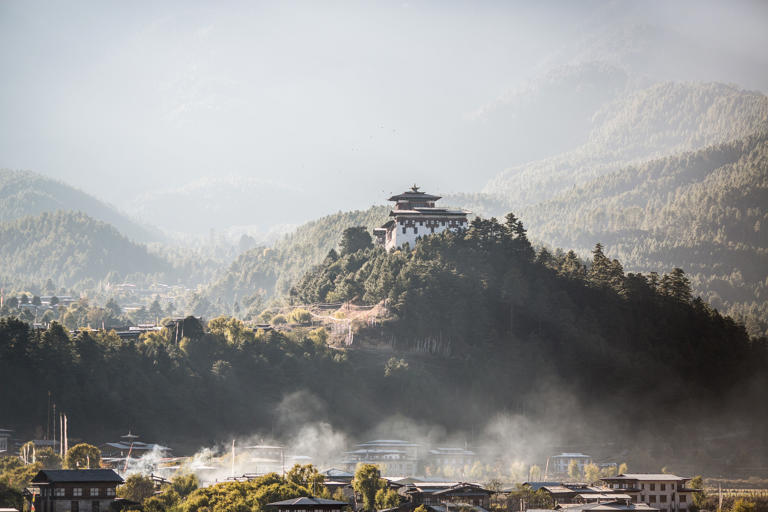

IMAGES
VIDEO
COMMENTS
Find the Best Prices on Bhutan with TripAdvisor's Reviews.
Now as the government of Bhutan prepares to reopen its borders on Sept. 23, it has overhauled the tourism system and will significantly raise the cost to visit. Visitors no longer need to be on a ...
Until 2022, tourists to Bhutan were charged a daily tourist fee of $250 ($200 in the low season) for every day spent in the country. This might sound expensive, but the fee covered food, accommodation, transport, guide fees and most of the other essentials tourists needed for a once-in-a-lifetime trip. Also included in the daily charge was a ...
Before the country closed its borders in March 2020 in response to the Covid-19 pandemic, travelers to Bhutan were required to pay a minimum daily package rate of $200-$250 — depending on the ...
The tourist fee has limited arrivals to bigger spenders who make up a fraction of the numbers that visit nearby Nepal. Nevertheless, Bhutan hopes to raise the contribution of tourism to its $3 ...
Bhutan Tourist Tariff New SDF informationAfter two years of tourism at a standstill due to the pandemic, our country finally opened its gate on 23rd September 2022. With the onset of the new tourism wave worldwide, our country is set on a different path.On 27th June 2022, the National Assembly
On top of Bhutan's government's minimum US$200 or 250 per person per day travel fee, there are other expenses. ... To protect the country from being overwhelmed by mass tourism, the Bhutan government has adopted a "High Cost, ... You can also spend a few days at a homestay during your trip. The homestays included in the minimum daily ...
Mandatory Minimum Spend: As part of Bhutan's unique Bhutan tourism policy, known as "High Value, Low Impact," visitors are required to spend a minimum daily package rate. This rate includes all of your accommodations, food, transport, and an official guide. ... Comprehensive Services: Tour packages include almost every aspect of your travel in ...
Bhutan has a new tourism strategy, with sustainability being a major focus. ... the minimum spend per visitor has been replaced by an increased direct sustainability fee paid directly to the ...
The Trans Bhutan Trail is a good example of community-based tourism. This historic cross-country pilgrimage trail has recently been restored not just for tourists, but also to reconnect remote ...
Bhutan's tourism mantra has long been "high value, low impact," and its aim is simple: to maximize the financial benefits of tourism while minimizing its environmental and cultural impact. It's a perfect example of the country's guiding policy of "Gross National Happiness.". The country kept its doors locked tight during the Covid ...
As mentioned, all travelers to Bhutan, except for Indian nationals, are required to pay a USD 200 SDF per night. For families, there is a 50% discount for children below 6 years of age and a 100% discount for children below 2 years old. In addition to the SDF, there's also a one-off visa processing fee of USD 40 per person.
Founded in the eighth century, Bhutan's Taktshang (Tiger's lair) monastery hangs from a rock face 900 meters above a valley. Visitors from outside South Asia will need to pay a $200 daily tax to ...
The Tourism Council of Bhutan is pleased to announce the Tourism Policy of the Kingdom of Bhutan 2021. The policy envisions to promote Bhutan as a green, sustainable, inclusive, and a high-value tourism destination guided by the policy of 'High-value, Low volume' tourism to contribute to the overall socioeconomic development of the country.
The minimum daily fee for most foreigners is: $250 per person per day from March - May, and September - November (high season) $200 per person per day from December - February, and June - August (low season) Many people are confused because they think Bhutan's daily tourist fee is a cost on top of other travel costs, but the opposite ...
Determining the precise Travel Cost per day for a trip to Bhutan can be challenging due to x-factors of your Bhutan travel plan. In short, a minimum spending of $250 per person per day is expected. ... Tipping your tour guide and driver is customary in Bhutan tourism, tipping your guide and driver in total shall take no more than $20 per day ...
All foreign tourists in Bhutan, with the exception of Indians, Bangladeshis, and Maldivians had been required to pay a minimum amount that they would spend in a day, which covered accommodation ...
A tourist shall engage a guide with relevant specialization based on the nature of the tour and shall be open to choose and change tour guide as provided in these Rules and Regulations. 25. A minimum of one guide shall be arranged for every ten tourists in a group or. 15 tourists if accompanied by a tour leader. 26.
Follow. Bhutan, a tiny Himalayan kingdom known for its pristine environment and sustainable development, will cap tourist numbers at 200,000 a year from 2023 to protect its natural resources and fight climate change. The move is part of the country's efforts to become carbon neutral by 2025. Bhutan is already 72% carbon negative, meaning it ...
Bhutan. The minimum daily package covers all meals , a minimum of 3 star accommodation (4 & 5 star will require an additional premium), a licensed ... arrivals x number of nights spend in Bhutan. 12. Tourism Expenditure: refers to the amount paid for the acquisition of consumption goods and services, as well as valuables, for own use or to give ...
Bhutan Travel Cost. There is a one-off visa processing fee of US$40 per person. In addition, all visitors must pay a Sustainable Development Fee (SDF) as part of their visa application process. The SDF is a daily levy which supports Bhutan's development. US$200 per day per person for an adult.
This initiative aims to enhance the MICE market's impact, which extends through every layer of Bhutan's tourism industry, including local businesses and event venues. ... Produce receipt for spending a minimum of one night in a Department of Tourism certified hotel. 3. Pay in USD. 4. Produce visa/permit copy. Or SDF payment receipt issued by ...
This is the reason why I arrived with expectations as high as the Himalayas: I wanted to better understand their low-traffic, high-spend tourism strategy—the sustainable development fee they ...
The Tourism Council of Bhutan is pleased to present the annual statistical publication 'Bhutan Tourism Monitor 2020'. This publication presents the overall performance of tourism for the year including data on market trends, findings and analysis to support future development of the tourism industry.
The Tourism Council of Bhutan is pleased to present the Bhutan Tourism Monitor (BTM) 2019 - an annual statistical publication. This is an important publication representing the overall performance for the year. The report also contains data on market trends over the years, findings and analysis to support future developments